J.League 2023 Season Review
Vissel Kobe, J1 champions for the first time in yet another epic J.League season.
Hello again, it’s that time of the year for… the J.League Season Review! For those unfamiliar, I take a detailed look at each and every team with both data and my eyes. This is the second time the review will be hosted on my newsletter rather than on my personal blog and this will continue in the future.
This review consists of:
The league table
A section on every J1 team: Summary overview, tactics, data, players, etc.
A section on the different types of data viz: Explanations and link to the viz for every team
Some notes, warnings, disclaimers, etc.:
All the data stuff is done with R.
All the tactical stuff is created using Tacticalista. I mostly tried not to re-use scenes from the mid-season review so if you want to see more tactical examples I suggest reading that as well!
To keep up to date with all of what’s happening in J1, I made a giant Twitter thread of lots of cool informed people to follow on Twitter for English language/international J.League content. You can find it here!
All of the shots and xG related stuff you see in the viz are non-penalty stats. Exceptions are stuff like the time interval and scoring situations plots. When I mentioned these stats in writing I usually mean non-penalty at the team level but I explicitly write it out at times just to be super clear.
My views come from watching only J1 league matches as most cup games clash with my work schedule and I can’t be bothered to subscribe to yet another streaming service. The things I talk about here are primarily based on the J1 league with occasional references to cup competitions.
I also have summarized notes for a lot of games I watch that you can read here.
Data sources: Transfermarkt, Sporteria, Football-Lab, FBref
Once again, this has taken up a gargantuan amount of time for me to watch/read/code/compile/organize so please like and share it across all of your social media, your IRL (in-real-life) friends, your family, your dog, etc.
Anyway,
Let’s get started!
League Table
It’s been a topsy-turvy season with surprises coming at both sides of the table. Vissel Kobe won the league. Yokohama F. Marinos joined Kobe in the Asian Champions League while Sanfrecce Hiroshima go into the newly formed ACL2 (the Europa League of Asia). Kawasaki Frontale also enter the ACL as they won the Emperor’s Cup. Due to the shift to a 20 team league from 2024, only one team was relegated this season and the unlucky loser was Yokohama FC.
Yokohama FC (18th, 29 points): 7 W / 8 D / 19 L
Location // Stadium: Yokohama // Nippatsu Mitsuzawa Stadium
Manager: Shuhei Yomoda
31 Goals (18th); 58 Conceded (16th)
Top goal scorer: Koki Ogawa (3 goals plus 3 penalties)
Goalkeeper: Svend Brodersen // Kengo Nagai
Yokohama FC: J.League So Far (March International Break Edition)
Yokohama FC’s return to J1 was a harrowing experience with the club looking doomed quite early into the season as they only won their first league game in May. However, the form of the teams around them kept them within the margins of safety as they were able to rack up some surprise wins of their own against the likes of Marinos and Frontale. However, it was all for naught as in the decisive game, a head-to-head relegation do-or-die clash versus Shonan, Yokohama FC came up short with a 0-1 loss at home (technically with Reysol’s draw they still had a chance on the final matchday but it was minuscule considering the goal differential the Fulie would had to overcome).
The fact that Koki Ogawa, who left in the summer, was still their top goal scorer can tell you a lot about Yokohama FC’s problems (not to mention half of his goals were penalties…)! I really didn’t trust any of Yokohama FC’s back-line as well and that’s been their undoing this season. Not only can they not defend, they have huge technical limitations as well which has resulted in goals conceded of their own doing through lackadaisical possession and build-up play from the back. To give them some credit, manager Shuhei Yomoda did improve the defense as the season went on, as can be seen in the below graph. It was still not enough however as Yokohama FC finished the season with the 3rd most non-penalty xGA, 2nd most shots conceded, on top of shipping the 3rd most amount of goals.
In terms of their tactics, Yokohama tried to remain compact with a 5-4-1 but it was oft too easy for opponents to play it long behind or simply shift Yokohama from side-to-side then find gaps between the lines to easily progress and get to the box.
They occasionally pressed with their front 3 but it was often uncoordinated and the midfield didn’t follow as they were wary of leaving the defense exposed, which ironically created gaps to be exploited.
Their disastrous attempts at playing out from the back were nowhere near as bad as it was in the first half of the season (like Takuya Wada’s goal of the season contender vs. Shonan). With Yuri Lara and Shion Inoue being somewhat decent, the duo established themselves as the double-pivot in the latter half of the season to a reasonable degree of security on and off the ball.
Ultimately though, this team was all about quick attacking transitions, catching opponents dawdling on the ball or intercepting passes in the middle 3rd of the pitch where Yokohama FC congested the midfield, to then burst forward on the counter via their wing-backs and the creativity of the front 3 (as in possession, they turned into more of a 3-4-3). Ryoya Yamashita, Towa Yamane, Kotaro Hayashi, Tomoki Kondo all brought a lot of speed on the counterattacks (albeit a lack of consistent quality in the final 3rd).
Yokohama FC were quite bad at either end of the pitch overall. They finished the season as 3rd worst in the league for total non-penalty xGA, 4th worst total non-penalty xG, 5th worst in shots taken, 2nd worst in shots conceded, and well I think you get the point… The last time Yokohama FC were in J1, they had the talents of Svend Brodersen doing nearly everything to keep them up but in 2023, alongside the German’s injury issues, they played Kengo Nagai instead to mixed results. To be fair to Yokohama FC it was also a huge blow that one of their better defenders, Gabriel, suffered a season-long injury after matchday 2.
Manager Shuhei Yomoda did his best by training the squad quite well, Yokohama FC were at the very least well drilled and had a very clear identity, a plan in what they wanted to do (especially after switching to 3-4-2-1) but the clear lack of technical quality at every position made it difficult to execute. This is despite the large amount of transfers in pre-season which makes me question the work of the recruitment team (even with some successes in Yuri Lara and Shion Inoue). It’ll be another re-build for Yokohama FC in the winter as they have a large squad to clear out along with a few players that might get opportunistically plucked by remaining J1 clubs like Shion Inoue (already rumored to be going to Albirex Niigata), Ryoya Yamashita (rumored to Vissel Kobe among other clubs), Yuri Lara, and Tomoki Kondo.
Kashiwa Reysol (17th, 33 points): 6 W / 15 D / 13 L
Location // Stadium: Kashiwa // Sankyo Frontier Kashiwa Stadium, “Hitachidai”
Manager: Nelsinho (resigned on May 17th), Masami Ihara
33 Goals (17th); 47 Conceded (tied 13th)
Top goal scorer: Mao Hosoya (4 open-play goals plus 1 penalty)
Goalkeeper: Kenta Matsumoto
Kashiwa Reysol: J.League So Far (March International Break Edition)
Since Reysol’s return to J1 in the 2020 season they have finished:
2020: 7th, 52 points
2021: 15th, 41 points (note: 38 game season)
2022: 7th, 47 points
… and true to form, Reysol had another bad year in 2023 by finishing in 17th, a position which in a normal year would’ve resulted in direct relegation to J2. While their atrocious defending had somewhat stabilized with the acquisition of Tomoya Inukai (and the hapless walking disaster Yugo Tatsuta’s banishment to the bench), it still relied heavily on the entire team putting in a lot of effort, with the front two doing plenty of defensive work as well. Compared to a lot of the teams around them, they were actually quite good at restricting the opponents from shooting on their goal, with Reysol’s 11.088 shots against per game being the 5th best in the league while their xGA per shot was also 5th best in the league. It also helped Reysol that they replaced Masato Sasaki with Kenta Matsumoto in goal as well. While I don’t think Matsumoto is particularly brilliant, he did a good job for them and earned his spot. His performance in the Emperor’s Cup Final vs. Kawasaki Frontale also deserves special mention and the football god’s were certainly cruel to have him miss the decisive penalty in that loss.
Reysol in the latter half of the season conducted a competent mid-high press in a solid 4-4-2 block. Great care was made to squeeze opponents out and away from the center.
Of course, against strong opposition even that wasn’t enough. This way of playing also left the front two with a lot of work to do and when teams could create an extra man in the build-up by using the goalkeeper or adding a 3rd player into the back-line, it became difficult for Reysol to stop opponents from progressing.
On the attacking side of things, Mao Hosoya had an excellent season making the best out of not-great opportunities through his good finishing ability as his 2023 season tally was 14 goals from just 9.4 xG. He played some part in every league game while playing minutes equal to 30.8 90s as Reysol’s other strikers were either injured or just plain bad. Douglas showed his age and was simply not fit enough while Jay-Roy Grot probably was one of the worst signings in the league this season.
With the return of Diego from injury in July, Reysol were able to immediately improve their possession play by using the Left Back’s technical quality. The Brazilian had good interplay with Left Midfielder Matheus Savio just ahead of him, exchanging the half-space and wide areas proficiently to create spaces. Hosoya remained patient (in many games, really really patient!) and continued to make great runs behind the opponent defense to get on the end of through-balls to score the few opportunities per game that Reysol were able to muster up. Savio and Hosoya linked up fantastically together with the Brazilian’s excellent dribbling ability freeing the striker up to make his dangerous runs. The problem was that a lot of the time, Reysol were entirely reliant on this dynamic duo (plus occasionally Kota Yamada) performing magic to get anything going on the attacking side of things. Savio’s excellent haul of 7 goals and 9 assists on top of Hosoya’s 14 goals accounted for most of Reysol’s total scored this season.
Also, they were guilty of going too vertical on fast counters when they really should’ve been able to maintain a bit of possession and let their players rest on the ball. Indeed, trying to play slower in possession was what the club and Nelsinho were trying to do from pre-season but that failed with the sacking of the long time Brazilian manager and Reysol reverted to their old ways. The team still did struggle when their game-plan was stymied as they really didn’t have a Plan B, which explained a lot of why their struggles continued in the second half of the season despite some improvements in performance that I talked about in my September newsletter.
Overall, it was a season of struggle for Reysol despite the large amount of transfer activity and the course change in pre-season to shed their “hard-working counter-attacking” label to become more of a possession-based team. Players like Tomoki Takamine and Diego were brought in for decent money with that change in game-plan in mind. However, as I talked about in previous newsletters, Nelsinho seemed to have gotten cold feet quite quickly and abandoned the approach which led to a lot of confusion and eventually led to his sacking. Masami Ihara was parachuted in and he had to re-organize a lot of things on the fly. As a result, Kota Yamada and Yuto Yamada become important cogs, the latter being recalled from loan after some very good performances at J2 side Tochigi SC, while as previously mentioned Tomoya Inukai’s arrival was a catalyst for defensive improvement.
Reysol started playing much better in the 2nd Half of the season even if they drew quite a few more games than they would’ve wanted, with late equalizers in the Frontale and Antlers games in the autumn being particularly painful as they still only finished 17th on a meager 33 points. On a positive note, they did battle their way to the Emperor’s Cup Final only to agonizingly lose on penalties despite being marginally the better team. There is still lots of room for improvement though, considering the talent and the financial outlay made to create this squad. Has Masami Ihara done enough to earn the job for next season? Or has Reysol’s continued slumping form (despite performance improvements) a telltale sign of Ihara’s low ceiling as a J1 manager? With 20 teams and 3 direct relegation spots next season, Reysol are really going to need to make some careful decisions in the winter.
Gamba Osaka (16th, 34 points): 9 W / 7 D / 15 L
Location // Stadium: Osaka // Panasonic Stadium
Manager: Dani Poyatos (Spain)
38 Goals (14th); 61 Conceded (tied last)
Top goal scorer: Juan Alano (6 goals plus 1 penalty)
Goalkeeper: Masaaki Higashiguchi // Kosei Tani
Gamba Osaka: J.League So Far (March International Break Edition)
Things actually looked okay in the blue-half of Osaka on matchday 24, as they were up to 10th in the table following a mid-summer resurgence that had pushed Gamba to safety. However, immediately after that victory against Shonan in mid-August, things started to go hairy again and worryingly, they were still not secure from relegation even after matchday 32 as they went win-less for the rest of the season. Indeed, they finished the season with the worst form in the league with 7 straight defeats in the run-in. In a regular season, Gamba would’ve had to fight in the relegation-promotion play-off battle against a J2 side.
Gamba had the joint highest amount of goals conceded in the league this season with 61 (alongside Sapporo), 5th worst xGA, 5th worst shots conceded, and 4th worst xGA per shot to boot! All highlighting a horrific defensive record that prevented manager Dani Poyatos from a solid foundation to form any semblance of a possession-based style.
The Big Takashi Usami problem that has plagued this Gamba side for the past few years reared its ugly head once again. The talismanic attacker is just not defensively sound enough in midfield as attempts to play him as a fluid box-to-box #8 failed (he led the team with 7 yellow cards this season), and on top of that not even providing a whole lot of attacking output at striker, on the wing, or as the #10 anyway. It's very telling that Gamba’s best period of form came when Usami was mostly coming off the bench for the last 15 or so minutes of games.
All too often, it’s just way too simple to play through Gamba’s lines as there’s a real lack of understanding between players and low intensity in their pressing. On top of this, they weren’t compact to compensate and their lines were broken quite easily time and time again. I do worry also about Masaaki Higashiguchi’s ability as I just don’t think he’s as good as he used to be, which still makes for a good J1 level goalkeeper but the cracks are showing and it’s yet another position that will need reinforcing come this winter.
The team as a whole were very languid, not winning loose balls and switching off during set-pieces. As a result, Gamba conceded considerably more than the league average from these situations.
That’s not to say every defender was bad, Riku Handa was very good before his injury which took him out of a large chunk of the season (ironically, the period of Gamba’s good form) but he’s been pretty bad since his return. On the other hand, while Keisuke Kurokawa has added a lot of good attacking output these past few seasons on the left, his defending did leave a bit to be desired even if he wasn’t completely at fault in many cases. Ryu Takao was just plain bad while Ko Yanagisawa and Hiroki Fujihara barely made appearances despite the poor quality of their squad mates which is rather telling.
Kwon K.W. and Genta Miura were supposed to be the defensive stalwarts of the side, their physicality and ball-winning ability making up for their lack of ball skills but in yet another horrendous season both players just simply couldn’t defend properly on top of not helping the team much in the build-up either. Kwon has now been released as Gamba have to go searching for new Center Backs yet again. At the end of the season, even a switch to a Back 3/5 did not help cover for the lack of defensive ability regardless of the personnel. A big red flag was how Poyatos could never find a consistent back-line, with Shota Fukuoka and Yota Sato included every now and again for their build-up ability but their physical deficiencies against strong J1 forwards were quite apparent.
On the other hand, the big winner of this season was Yuki Yamamoto who did really well pulling the strings in Gamba’s midfield as either the single pivot or as one of the box-to-box midfielders roaming around.
His excellent passing ability and controlling the game through the timing of his passes contributed greatly to the glimpses of Poyatos’ ultimate vision for Gamba this season.
Another key player was Juan Alano, who caused opponents problems with his directness and goal threat. His 7 goals and 4 assists were sorely missed as he only played one match after September due to injury. Up top, Issam Jebali didn’t have the kind of goal-scoring impact fans would’ve wanted, indeed he under-performed his xG by a chunk by finishing the season with a paltry 5 goals from 8.039 xG (this includes a missed penalty). Nevertheless, he was still very important in holding the ball up for Gamba and creating time for Kurokawa and Alano among others to pick up the pieces from his duels for a large part of the season.
However, all too often these would be mere flashes of quality build-up as the team consistently failed to perform to the specifications Poyatos wanted. Their good mid-season form actually came more from Poyatos abandoning his preferred play style to an extent and going for a mixture of more direct football to get results.
On top of this, a lot of the players just didn’t seem to have the right mentality. Dawhan in particular looked quite uninterested in the 2nd half of the season and put in some pretty poor performances that belied his tenacious box-to-box nature we saw up to August. At least in Neta Lavi’s case one could forgive him for not really having his head on straight in the last few months of the season.
This Gamba team really lacked a goal threat besides Juan Alano with Jebali misfiring, Ryotaro Meshino only showing occasional flashes, Musashi Suzuki looking a shadow of the guy who earned himself a move to Europe a few years ago, while Naohiro Sugiyama disappeared despite lots of promise in J2 for Roasso Kumamoto last year. Much has been made about their potential but Hiroto Yamami and Yuya Fukuda barely featured as well. It’s a damning indictment on the state of Gamba’s attackers that Usami ended up playing again to finish the season.
As mentioned at the beginning of this section, Gamba finished off the season in tremendously poor fashion. Even ignoring the results for the sake of “learning or progression for next season”, there wasn’t a whole lot of positives to take out of the performances as morale plummeted and many players’ heads dropped. Despite switching to a Back 3/5 in the end of the season the defense still didn’t hold up and it didn’t help establish numerical superiority in the build-up phase either.
So it’s a huge sign of faith by the Gamba hierarchy that the Spanish trainer will get things right as they have extended his contract for 2024. Of course, while it is nice to see teams try to stick with their manager for once (especially with how quickly Gamba binned Katanosaka only a year ago), the end of season form really does concern me. The solution is not so simple as buying more players that would fit to Poyatos’ style as there has already been significant outlay in the past few years, with very mixed results for a variety of Gamba managers both past and present. Poyatos will need need clear improvement from existing players such as Sugiyama, their entire back-line, and also the likes of Suzuki, Meshino, and Yamami if he is going to stave off the firing squad next season. The pressure certainly will reach volcanic eruption levels if the 2024 season gets off to a bad start.
Shonan Bellmare (15th, 34 points): 8 W / 10 D / 16 L
Location // Stadium: Shonan // Lemon Gas Stadium Hiratsuka
Manager: Satoshi Yamaguchi
40 Goals (tied 11th); 56 Conceded (15th)
Top goal scorer: Yuki Ohashi (12 goals plus 1 penalty)
Goalkeeper: Song B.K.
Shonan Bellmare: J.League So Far (March International Break Edition)
Shonan survive… yet again! Their massive showdown with Yokohama FC in the penultimate matchday was the key as their 1-0 victory there sealed the deal. With the poor form of the other bottom clubs, the Hiratsuka club actually finished the season in the heady heights of 15th place after results went their way on the final matchday.
Yuki Ohashi suddenly turned into a goal scorer that Shonan had been crying out for and he even continued his form after Shuto Machino left for Germany in the summer. The back-line still looked shaky (as usual…) with only Korean shot stopper Song B.K. being a real asset on the defensive side of things (his performances for Shonan this season have earned him more call-ups to the Korean national team). By the numbers they are one of the worst teams in the league when it comes to defense, with 489 shots against (4th worst), 0.097 xGA per shot (6th worst), 56 goals conceded (4th worst) from 47.55 xGA (2nd worst).
Their energetic performances with huge emphasis on transition, both defensive and offensive, that Shonan are well known for didn’t translate to a whole lot of success this season as clever teams could pass their way out, simply play it long into spaces or physically overwhelm the Shonan Center Backs.
Shonan players could get sucked into various areas of the pitch and leave others completely open given how man-oriented their defending is, spelling disaster when their aggression didn’t lead to actually winning the ball.
The midfielders individually aren’t necessarily the problem with Kohei Okuno being okay on loan from Gamba Osaka at the base of midfield. While on the other hand, Satoshi Tanaka had a rough return after a failed stint in Europe (which was rather disappointing as long-time readers know how much I like him). The issue was more structural. With Shonan’s three-man midfield, they are naturally unable to cover the entire width of the pitch and rely on the mobility of the box-to-box midfielders to be able to slide over in time. However, with the need for these midfielders to sometimes push up to support the strikers in the press, this then left gaps on either side of the single pivot which was exploited with ease.
Ultimately though, a lot of Shonan’s problems were simply solved by… acquiring a better defender. In this case it was Kim M.T. on loan from Kashima Antlers. The big Korean set himself up in the middle of the Back 3 and marshaled the defense quite well. The results along with the data are there to see as Shonan were actually able to hold the opposition to 0 goals in 5 games, all these times only after the Korean’s first start in matchday 22.
While Shonan is usually known for their transition play, they do try to play it out from the back when in possession instead of just hoofing it up at the first opportunity (although that option is still available of course). Shonan use their usual numerical superiority in the back-line to thread their way past the opponent press. The combinations between the Wing Backs and the rotating cast of midfielders and attackers being the key to progression. Daiki Sugioka and Hirokazu Ishihara provided a lot of energy down the flanks and ultimately were sending in dangerous crosses into Yuki Ohashi.
Still, their build-up play wasn’t without problems though due to the quality of their decision-making being hit or miss in terms of making the right pass or when to carry the ball forward. Sometimes Shonan were too risky or too obvious with their passes as well which invited dangerous counterattacks from interceptions.
Further up-field, chance creation came from the smart off-the-ball runs from Kosuke Onose and Hiroyuki Abe to create space for themselves or others. The young Taiyo Hiraoka provided a lot of value to the team through his dribbling ability in midfield as well. In and around the box, it was Yuki Ohashi’s excellent finishing ability to turn Shonan’s chances into goals. He was very clinical this season, scoring 13 goals from just 9.5 xG (including penalties) in what was his career best single season record by quite a margin. In that regard, I would be a bit wary about purchasing him if I was one of the bigger teams in the league as plenty of rumors have been swilling around already. This is despite the value he brings in other facets of his game, like his off-the-ball running and aerial ability which I think is quite good. I find it quite ironic because earlier in the season I was remarking how Ohashi is the perfect player for Shonan because he’s decent enough to make an impact for them but not so much that he’d be plucked away by stronger teams!
Ultimately, Shonan survived yet again. It’ll be yet another fight for survival next season but manager Satoshi Yamaguchi has proven his track record of being able to navigate it with minimal resources. The squad has a healthy mix of youth and experience so it’ll be more about raising the quality of the players and trying to keep their best ones around rather than a full overhaul during the winter months. The one position to focus on will be at Center Back with Shonan fans hoping for Kim M.T. to stick around on a more permanent basis.
Sagan Tosu (14th, 38 points): 9 W / 11 D / 14 L
Location // Stadium: Tosu // Ekimae Real Estate Stadium
Manager: Kenta Kawai
43 Goals (tied 5th); 47 Conceded (tied 13th)
Top goal scorer: Yoichi Naganuma (10 goals)
Goalkeeper: Park I.G.
Sagan Tosu: J.League So Far (March International Break Edition)
The plucky perennial underdogs from Tosu survive J1 once again. The Kyushu side were genuinely poor across every metric, both attacking and defensive but they had a very weird knack for not losing games where they’ve been battered which let them eke out results despite their overall poor performances in games. Park I.G. in goal has once again been extremely busy, I might even go as far as to say if it wasn’t for his heroics (great shot stopping and sweeping but also a few silly mistakes mixed in), Tosu would’ve been relegated as he kept the score down and kept games tight enough for a sliver of Tosu quality to salvage a point or two. Despite this, their second half of the season form was truly miserable with only a solitary win since mid-July, which came in a crazy game vs. Kyoto Sanga in September where Tosu flipped the score on it’s head with goals in the 99th and 101th minute of the game (only after Kyoto went down to 10 men)!
So Kawahara was one of the star men in this team with his tireless running as he became the only midfield player to complete every single minute of the 2023 J1 season (the other players all being Goalkeepers or Center Backs as one would expect). His defensive work-rate was paired with excelling passing/positional sense to break past opponent lines and create chances. On the other hand, I was a bit disappointed that last year’s unsung hero, Akito Fukuta, was reduced to cameo appearances and often filling in at Right Back instead of in midfield.
Tosu’s style of playing leaned heavily on their possession with Park I.G. frequently being involved in the build-up as the goalkeeper quite high up the pitch, almost to the half-way line! From there the Center Backs would be relied upon to pass/carry the ball to find gaps in the opponent block. Further forward, Yuki Horigome playing in the #10 position as well as the double pivot of So Kawahara and Kohei Tezuka would support the ball holder with their clever movements to find ways to quickly combine past opponents to enter the final 3rd.
In the mid and final 3rd, the tireless running of Yoichi Naganuma and Yuto Iwasaki kept the width, stretched opponent lines, and were always a dangerous threat in-behind with their pace. Naganuma was actually the team’s leading goal scorer with 10 non-penalty goals highlighting his importance in the team (I’m also a bit perplexed as to why Sanfrecce didn’t keep him, even just as a squad player). Just behind him was Yuji Ono with 8 non-penalty goals and he looks back to his best after some horrible injury-wracked years. He’s since been snatched up by Albirex Niigata who will want to make use of his excellent off-the-ball movement, high defensive work-rate, and creativity. Tosu surprisingly scored the 5th most amount of goals in the league, yet this was done from the league worst non-penalty xG which has me skeptical about whether they can keep themselves up next year if all else remains equal.
Out of possession, Kenta Kawai has continued to implement a high intensity press and pushed a high line. However if you were able to get past this, it was all too easy to reach the box and to pepper the beleaguered Park I.G. with shots on goal. Tosu weren’t just the worst in the league in terms of the quantity of shots conceded but the quality of these shots as well, in terms of xGA and 3rd worst in xGA per shot. Taichi Kikuchi, an attacking midfielder, at Left Back persisted throughout the season and it’s baffling, but they didn’t really have any alternative. Kosuke Yamazaki had a trial by fire stepping up to the J1 level while there was only so much that veteran Hwang S.H. could do to hold the at-times makeshift defense together.
In terms of defending inside their own box, they conceded a whopping 13 goals (27.7% of their entire goals conceded) from crossing situations, highlighting their creaky back-line that was also beset by lots of injuries and having make-shift Full Backs guarding the back-posts.
Sagan Tosu are another team that’ll have to work hard to continue punching above their weight with J1 returning to three whole relegation spots once again in 2024. The big questions during the off-season is whether they can keep So Kawahara, who had already caught many a J1 team’s eyes during his stint at Roasso Kumamoto and has now showed he can make it work at the J1 level as well. Tosu will hope that the likes of Fuchi Honda (injured for most of the season) and Ayumu Yokoyama can make more of an impact in 2024 as Tosu are going to need a lot more creative output to offset their porous defense. On that note, acquiring a few more defenders wouldn’t go amiss either.
Kyoto Sanga (13th, 40 points): 12W / 4 D / 18 L
Location // Stadium: Kyoto // Sanga Stadium
Manager: Cho Kwi-jae (South Korea)
40 Goals (tied 11th); 45 Conceded (tied 10th)
Top goal scorer: Patric (8 goals plus 2 penalties) & Yuta Toyokawa (10 goals)
Goalkeeper: Tomoya Wakahara // Gakuji Ota // Gu S.Y.
Kyoto Sanga: J.League So Far (March International Break Edition)
Despite a mid-season nose-dive where Kyoto went 8 games without a win from late April to early June (which could be extended further back to April 1st if you include the solitary win over Gamba in mid-April in this time period), Kyoto were saved by the fact that there was only one relegation spot up (or should I say down) for grabs and the fact that there were other very clearly worse teams than them in the league this season. Manager Cho Kwi-Jae managed to turn things around from after June despite Tomoya Wakahara’s injury and the loss of key attacking outlet Kosuke Shirai to FC Tokyo. Kyoto finished in 13th place as 2 wins and a draw in the final month of the season helped them climb above the relegation zone.
In attack, Kyoto, relied upon central midfielders like Sota Kawasaki, Daiki Kaneko, and Shimpei Fukuoka to spray the ball from side-to-side and release the Full Backs into space out wide to cross the ball into the box. As the season progressed, Daiki Kaneko won his place as the #6 single-pivot in midfield as Kawasaki was pushed slightly further forward instead. Shinnosuke Fukuda, who arrived from Meiji University in the off-season, took up the Right Back seamlessly with intensity and verve after Kosuke Shirai left for FC Tokyo. Meanwhile Taichi Hara’s arrival in the summer transfer market also relieved the burden of Patric as the ex-FC Tokyo youngster bagged 7 goals and 4 assists in only 13 games (9 starts)!
Veteran Yuta Toyokawa also managed to get back up to speed with 4 goals in the last 7 games of the season after a long mid-season drought to push Kyoto to safety in the second half of the season. Toyokawa’s quality through his dribbling, off-the-ball running, and overall guile to find gaps in opponent defenses were an important part of a Kyoto attack that looked a bit too simple and direct at times without him.
Kyoto would also use set-pieces and crosses to create chances to take advantage of Patric as the battering ram while others would be looking to pick up the loose balls or counter-press the opponent. Ironically, Kyoto were also a team that were horrific in terms of defending against crosses and set-pieces themselves, conceding 10 and 13 goals from these situations, respectively, which made up over half of their total goals conceded.
Their goalkeeping situation didn’t help either, especially after Tomoya Wakahara got injured around mid-way through the season (he was only supposed to be out for around two months but he only returned to the bench in late October). Despite bringing in Gu S.Y. on loan from Sapporo, it was the veteran Gakuji Ota who stepped up to fill in for most of the rest of the season. Curiously, the two foreign goalkeepers that Kyoto brought in during the pre-season didn’t play a single league minute with Michael Woud even going on loan to J2 side Ventforet Kofu in the summer.
Kyoto’s defending was based on the intensity of their high press with all players from back-to-front tasked with hounding the opponent out of possession.
All too often though, teams would use Kyoto’s aggression against them by quickly passing around them and finding spaces vacated by Kyoto players pushing forward and forward (and forward) in tandem.
There was always the very clear avenue for opponents to simply kick it long or across to get away from the pressure as well. Kyoto were fine with this, as usually they could put enough pressure on the kicker to reduce the accuracy of the pass to have their defenders simply retrieve it or clear second/loose balls. However, if they couldn’t it could lead to dangerous attacks with the team back-pedaling toward their own box.
Kyoto have a fairly young squad, the core has been together for a few years now under manager Cho Kwi-jae’s tutelage. With 20 teams and 3 teams relegated next year, it’ll once again be another test for Kyoto to keep their heads above water. The impression I get is that the short-medium term goal of the organization is to simply survive in J1 and keep the J1 money flowing and then slowly make in-roads to the top of the table in the longer term through gradual investment. They’ll need to make the right deals as there are plenty of interesting players in the squad that may get plucked away like Sota Kawasaki, Rihito Inoue, Shinnosuke Fukuda, Shimpei Fukuoka, among others so properly replacing them will be a critical task.
Consadole Sapporo (12th, 40 points): 10 W / 10 D / 14 L
Location // Stadium: Sapporo // Sapporo Dome
Manager: Mischa Petrovic (Serbia/Austria)
56 Goals (3rd); 61 Conceded (tied last)
Top goal scorer: Yuya Asano (12 goals)
Goalkeeper: Gu S.Y. // Takanori Sugeno
Consadole Sapporo: J.League So Far (March International Break Edition)
While at the time I wrote the mid-season review in June they were surprisingly in 8th place, Consadole Sapporo won only 3 (three!) games since then and plummeted down the table after a horrific mid-season slump in form where Sapporo went win-less for three whole months (June~September). For all the talk about free-scoring Sapporo, it should be noted that in the second half of the season, they only scored more than one goal four times, with a further 5 games ending goalless for Sapporo as well. You can see below how they were scoring quite a way above the quality of chances created (xG), then it crashed down before recovering near the end of the season to where the amount of goals scored more closely aligned with their xG. It does need to be said that Sapporo were only behind Sanfrecce Hiroshima when it came to xG per 90 though.
All of their strikers didn’t really score goals with the not-quite-ready Taika Nakashima loaned out to Nagoya mid-season, Kim G.H. mostly being a battering-ram type super-sub as he doesn’t quite have the pressing ability Sapporo need from their attackers (his 0.46 goals per 90 is quite good, to be fair), and Milan Tucic continuing to be one of the worst J.League players in recent times. The goals have mainly come from their rotating cast of attacking midfielders. With Tsuyoshi Ogashiwa’s stop-start season, it’s been Supachok and Yuya Asano picking up the slack with 7 and 11 non-penalty goals respectively. Supachok has built upon his good cameos from the end of the 2022 season that earned him an extended stay by becoming a potent goal threat and has established himself in the Thai national team too despite only playing minutes totaling up to 12.4 90s that belies his 23 appearances. He’s certainly not just there for “marketing purposes”! Also keep in mind that Takuro Kaneko scored 7 goals and assisted 5 before his performances earned him a move to Dinamo Zagreb in the summer.
Off the ball, their gung-ho press reaped benefits but it also left them extremely exposed when opponents were able to play out or away from it.
How and why are Sapporo so open, so attacking is an important question to answer. The nature of Sapporo’s system has one of the central midfielders dropping into the back-line next to Daihachi Okamura (see the mid-season review where I talk about him in more detail), this meant that the nominally Wider Center Backs are really operating as Full Backs in possession. At other times, the goalkeeper would join as the extra option in the build-up as well.
They like to push their defenders up high, with the Wider “Center Backs” tasked with supporting the attack at every opportunity possible. You’ll frequently see Shunta Tanaka (on the Right) and Toya Nakamura (on the Left) dashing into the final 3rd. However, this was also the reason why games became end-to-end, akin to basketball. The concept of “rest-defense” didn’t really exist inside the heads of Sapporo’s coaching staff apparently as they were not set up to be secure while in possession to prevent counterattacks.
Toya Nakamura in particular impressed me this season and it looks like he’s close to nailing down a starter spot as the Left Center/Full Back. His energetic runs forward and passing has created a lot of chances this season which is somewhat balanced out by his tendency for errors. Again, this is a team that rewards high risk so lots of mistakes are part and parcel of play.
NOTE: The below viz is comparing him very favorably against Center Backs, when in reality (as described above) he’s more of a Full Back // Midfielder so take those percentile values with a bit of salt.
In terms of goalkeepers Gu S.Y. seems to have lost something during his military service as his return to Sapporo has been quite disastrous. The Korean shot-stopper showed none of the quality that had benched Takanori Sugeno in years past and was ignominiously farmed out to Kyoto Sanga mid-season. Shun Takagi was brought in from J2 side Oita Trinita and has remained the starting goalkeeper with veteran Koki Otani not really considered. With Sugeno nearly 40 years old it really does seem likely a big change here will be needed. With Gu S.Y. shuffled away on loan and Kojiro Nakano barely making an appearance at J2 relegation side Zweigen Kanazawa it’s looking quite likely that Takagi will be the main keeper from now on.
All in all, Sapporo are still Sapporo. I’m seriously running out of things to say about them that I haven’t repeated already in the past few editions of these mid/end season reviews. They keep playing the same way under Mischa Petrovic without ever seriously challenging for trophies despite having a fairly decent squad relative to the average quality in the league. Already the sharks are swimming around them as other J1 teams are rumored to bolster their squads by taking players like Tsuyoshi Ogashiwa and Shunta Tanaka away from Sapporo.
FC Tokyo (11th, 43 points): 12 W / 7 D / 15 L
Location // Stadium: Tokyo // Ajinomoto Stadium
Manager: Albert Puig (Spain) // Peter Cklamovski (Australia)
42 Goals (tied 7th); 46 Conceded (12th)
Top goal scorer: Diego Oliveira (13 goals plus 2 penalties)
Goalkeeper: Jakub Slowik
FC Tokyo: J.League So Far (March International Break Edition)
FC Tokyo’s season finished on a whimper with an 11th placed finish being the worst league performance since finishing 13th back in 2017. Albert Puig was gone by the summer and the Australian Peter Cklamovski came in to try his luck but it’s been very slow progress so far.
FC Tokyo’s ability to threaten the opposition in a lot of games hinged on the ability to press and go on counterattacks. However, all too often, Tokyo’s press was disjointed and opponents were able to pass through them with ease.
In midfield though, FC Tokyo had the talents of Kuryu Matsuki who was extremely good at intercepting or tackling to win the ball outright. He also had an extremely good nose for loose balls and is quick to start the counterattack from these transitional moments. For a much detailed read on Kuryu Matsuki, I wrote up an entire newsletter on him a few weeks ago:
Shogun Soccer Scouting: Kuryu Matsuki
Hello and welcome to the first in hopefully a feature series of Shogun Soccer Scouting! Today I’ll be talking about Kuryu Matsuki. Date of Birth: April 30, 2003 Age (as of writing): 20 years old Nationality: Japan Position: Central Midfield Club: FC Tokyo
Off-the-ball, all of the above needed to succeed for Tokyo to create chances as in-possession Tokyo continued to struggle. There was a lack of technical ability along with inability of various players to make movements to escape the close mark of their opponent’s pressing. Inevitably, FC Tokyo resort to launching the ball away by a pressured defender or goalkeeper.
Even when FC Tokyo progressed from their defensive 3rd, all too often attacks petered out in the middle 3rd as momentum was lost when players couldn’t find ways further forward. Despite Tokyo transitioning into attack the 3rd most times per game in the league (according to Football-Lab), they were 15th best at turning these possessions into an actual shot! These numbers are really representative of how Tokyo had such a hard time turning their possession of the ball into meaningful successful attacks.
Only on occasions did FC Tokyo attack with real purpose. When things worked out they were indeed able to find good spaces in those “pockets” in the half-spaces in-or-around the box to then shoot or cross it back inside. Riki Harakawa’s goal against Gamba was a very good example of the kind of pass-and-movement Tokyo want to achieve on a more consistent basis.
Another facet of Tokyo’s attack was isolating the wingers against the opponent Full Back to attack the box for crosses/cut-backs. The dribbling skills of Kota Tawaratsumida and Adailton were an important asset in this regard with the off-the-ball running from Nakagawa and Matsuki providing support. Tawaratsumida in particular caught my eye as his 1v1 dribbling skills befuddled many J1 Full Backs. If he can start creating more chances for others once he’s blown past his opponents, we’ll have yet another wonderful Japanese winger in J1!
Teruhito Nakagawa had a hit-or-miss first season at the club. For large parts of the season, especially under Albert Puig, he seemed to be the only player to understand the movements needed to really unlock defenses (considering his excellent time at Marinos). However, he was as guilty as everybody else in simply not being able to consistently perform at the standard required.
Ryoma Watanabe had another good year as the #10 (and occasionally out wide), being the guy to find spaces to receive between the lines, dribble out of pressure, and play those crucial through-balls to release the wingers or overlapping Full Backs out wide. He can have his very frustrating days where nothing (especially his shooting) doesn’t go right but he was nonetheless a very key player for FC Tokyo. He also features heavily in the video clips in my Kuryu Matsuki piece so head over there if you want to see him in action.
In the mid-season review and throughout last season I was extremely worried about Diego Oliveira’s attacking output but something seems to have clicked back into place for him and he’s not only getting into good goal scoring positions but simply being able to finish chances from difficult positions as well. The Brazilian talisman finished the season with 15 goals from just 9 xG. Regardless of his shooting form (which typically waxes and wanes wildly), he was once again instrumental in holding the ball up and providing a staging ground for Tokyo’s attacks both on the counter and in more sustained possession.
FC Tokyo posted some terrible attacking numbers, 5th worst xG total, 4th worst in shots taken, and only 8th best in xG per shot. For a team purporting to play “attacking” football, the poor stats highlighted through out this section belie those ambitions. It was yet another season where Diego’s finishing streak in front of goal were the only thing preventing Tokyo from getting into a relegation battle.
While there has been some glimmers of improvement under Peter Cklamovski, for the large part the results just haven’t followed with Tokyo only winning 3 in the last 10 games of the season (one being on the final matchday with nothing to play for). It’s been two years and they still struggle greatly with building up from the back and with largely the same cast available as under Kenta Hasegawa’s time at the helm, it makes sense that the team still excels more in fast transitional moments where the games were end-to-end.
When you only consider players that have played more than 50% of total possible league minutes, FC Tokyo are the oldest team in the league with an average age of 31.4. However, there’s plenty of young players to choose from due to the talent pool in the youth system, with the most recent product to step up successfully at the J1 level being Kota Tawaratsumida.
Striker Naoki Kumata has made some promising cameo appearances so he’ll hope to extend his appearances as the alternative to Diego in 2024 as Tokyo have already released the hapless Pedro Perotti and I imagine Keita Yamashita will soon follow out the door. Tsubasa Terayama has looked decent enough as a squad member while Yuki Kajiura might want to impress in pre-season following a difficult season with J2 side Zweigen Kanazawa (although on the positive side he did get regular minutes for them). Just like with the departure of Shuto Abe in the summer, the imminent departure of Kuryu Matsuki will once again force FC Tokyo to reset a fairly settled midfield. The worst case option being the resurrection, like a zombie, of the foul-happy Keigo Higashi into the team once again.
The Center Backs are another part of the team that needs an awful lot of retooling. Yasuki Kimoto has been renewed despite a poor season where he was largely out of the line-up since the managerial change. Masato Morishige is really starting to show his age despite his obvious quality while Trevisan blows hot-and-cold. In more positive news, Albirex Niigata’s Takahiro Ko joined the club while Adailton and Jakub Slowik have been let go, signaling that a squad transition is already underway. I am nevertheless annoyed that Tokyo’s recruitment team left Albert Puig to deal with Takuya Aoki, Keigo Higashi, and Koki Tsukagawa as his options instead of the likes of Riki Harakawa and now Takahiro Ko.
There’s been lots of rumors (since the summer) of Ryoma Watanabe leaving for Urawa Reds that have only accelerated since the season ended. This would be a big blow for Tokyo but there are options available. One is obviously to buy a replacement like Kashima’s Ryotaro Araki. Another is to push Kuryu Matsuki further forward more permanently as the #10 and rotate the double pivot between Harakawa, Ko, Koizumi, plus one like Terayama (this would also hopefully end Koizumi being played at Right Back too).
In the end, FC Tokyo simply need to become stronger, win titles, and be taken more seriously to prevent these kind of transfers from happening. With both Tokyo Verdy and Machida Zelvia coming up from J2, hopefully this lights a fire under the management team as another poor league performance in 2024 and finishing below these local rivals would spell a fan insurrection…
Albirex Niigata (10th): 11 W / 12 D / 11 L
Location // Stadium: Niigata // Denka Big Swan Stadium
Manager: Rikizo Matsuhashi
36 Goals (16th); 40 Conceded (tied 7th)
Top goal scorer: Ryotaro Ito (7 goals)
Goalkeeper: Ryosuke Kojima
Albirex Niigata: J.League So Far (March International Break Edition)
Albirex Niigata’s return to J1 went quite smoothly all things considered, as despite a mid-season dip in form they were never really dragged into the relegation dogfight. One could even say Niigata finished the season quite strongly despite the departure of Ryotaro Ito as they only lost once in their last 10 games of the season, a 0-2 loss to Kashima all the way back in late August. I don’t find them particularly amazing on either end of the pitch but manager Rikizo Matsuhashi, in his second season at the helm, has guided Niigata with a clear style of carefully possessing the ball and the result was a fairly comfortable mid-table J1 side. Niigata are well drilled to deliberately build out from the back and passing it around their back-line with the goalkeepers involvement as much as possible, methodically waiting and probing for the right opportunity to play a forward pass and spring an attack.
Niigata were a team that concentrated their efforts in keeping the ball. Interestingly, lots of rotations were made throughout the season across all positions. As an example, Hiroki Akiyama, Yuji Hoshi, Takahiro Ko, and Yuzuru Shimada all took turns for each other in the midfield engine room without the quality of passing play deteriorating too much. This is a clear sign of how the team’s style has been inculcated into every member of the squad. The understanding they have of one another and how quickly they can react to fill in the spaces left vacated by each other’s movements is very entertaining to watch.
I highlighted Takahiro Ko as one to watch in my season preview back in February and he didn’t disappoint. It wasn’t only his technique and re-positioning skills but the fact that he was excellent in duels to win the ball back showed how vital he was this season.
Another surprise as the season went on was Taiki Watanabe who started while nominally at Left Back was transformed into a Center Back to good effect in 2023. His forward passes from the back-line were a key part of Niigata’s ability to progress forward.
Thomas Deng has improved on the ball in the past few years after dropping down to J2 from Urawa Reds back in 2022. He has had to bide his time in training as he was behind the pecking order, with veterans Kazuhiko Chiba and Michael Fitzgerald usually starting but eventually won his place as a starting Center Back this season. Naoto Arai came back to Niigata after seasons away at Cerezo Osaka and Tokushima Vortis to take over the Right Back spot. His smart positioning and runs out wide helped Niigata progress from the back. On the Left fan favorite Yuto Horigome did the same, although his season was marred by injuries.
However, their lack of firepower up front and inability to finish their chances have been an anchor on their otherwise attractive style of play and decent-to-good performances throughout the season as Ryotaro Ito still remained Niigata’s top goal scorer despite leaving mid-season. Surprisingly it’s Shusuke Ota with 5 goals, not even as a regular on the team, that’s come closest which is emblematic of Niigata’s struggles in turning possession into goals this season. Kaito Taniguchi didn’t quite nail down his place in the squad in J1 this season and Koji Suzuki for all his positive traits like his clever rmovement (shown below) has never been an out-and-out goal scorer throughout his career. Foreign help in the form of Gustavo Nescau simply didn’t get to grips with the playing style while Danilo Gomes provided some nice dribbling but often little end product.
A player that really caught the eye this season was none other than Shunsuke Mito whose cleverness off-and-on the ball caused even the best J1 defenses problems and he had a penchant for scoring some beautiful individual goals as well. His performances earned him the “Best Young Player” award.
For all of my praise, one could certainly criticize Niigata for having “possession for the sake of possession”. However, when they do find an opening they can play lovely combinations to burst up the field in quick succession. Unfortunately often times they get stuck outside the box and struggle to create quality chances inside the box. So while they have been able to take plenty of shots, it’s usually of low quality as Niigata are left frustrated and can only fire off shots from disadvantageous positions with no other options left.
It may be a winter break of much upheaval for Niigata as many vultures will be flying around their players (in the meantime though, manager Rikizo Matsuhashi has signed a contract extension). Big rumors are swilling around Ryosuke Kojima as Nishikawa’s successor in goal for Reds (although Niigata have since announced they have extended his contract) while the performances of Yota Komi, Hiroki Akiyama, Taiki Watanabe, Takahiro Ko (Takahiro Ko has already been plucked away by FC Tokyo), and of course, Shunsuke Mito would have caught the eye this season. It’ll be a real test to see if they don’t suffer from the haunted “second season syndrome” in 2024.
Cerezo Osaka (9th, 49 points): 15 W / 4 D / 15 L
Location // Stadium: Osaka // Yanmar Stadium
Manager: Akio Kogiku
39 Goals (13th); 34 Conceded (tied 4th)
Top goal scorer: Leo Ceara (10 goals plus 2 penalties)
Goalkeeper: Kim J.H. // Yang H.B.
Cerezo Osaka: J.League So Far (March International Break Edition)
It was a rather disappointing season for the team from the purple/pink half of Osaka as Cerezo petered out to a 9th place finish. There was a lot of expectations in pre-season following a very good 2022 season where Cerezo finished 5th and got to two domestic cup finals. When I wrote the mid-season review they were 6th and still in the competition for an ACL spot but a poor 2nd half of the season where they only won 2 (two!) games since September and three consecutive goalless losses to round out the season led to their downfall. In the last 8 games of the season, they only scored a single goal in a 1-0 victory over local Osaka rivals, Gamba. Oddly, they only finished a 2 points below their total from last season but an extra six losses made all the difference in the league standings.
A key player in this team has been Seiya Maikuma, who continued his good form to enter the Japan National Team squad and was even chosen for the J.League Best XI as well. Capixaba has been a decent replacement for Jean-Patric with 1 goal and 4 assists but Cerezo would’ve hoped for a lot more from Jordy Croux as his crossing ability should’ve found Leo Ceara’s head (among others’) quite a bit more than his meagre 2 assist tally. It probably also didn’t help that Ryosuke Yamanaka was injured for large parts of the season and we couldn’t see more of his curling early crosses find their way to the strikers.
In general, I really do like the way Cerezo build-up with many different patterns available to the players, most visible was the way that the Full Backs and Wide Midfielders exchange lanes in the wide areas. In the tail end of the season it was usually Hinata Kida paired up with Shinji Kagawa and they took turns dropping close to the Center Backs to orchestrate the build-up as well.
Cerezo’s defense was solid enough, tied 4th best for goals conceded but fairly mid-table in other defensive metrics like xGA, shots against, xGA per shot, etc. They try to remain quite compact in their 4-4-2 block and did a reasonable job. Behind the defense, Yang H.B. did a surprisingly good job filling in for Kim J.H. while his Korean compatriot was injured for a large portion of the season. Still, I did have a lot of concerns about Shinji Kagawa playing in the double-pivot and sometimes I felt that teams could create (numerical/positional) mismatches in midfield to progress through them a bit too easily.
Near the end of the season once Cerezo were out of the running for every competition, manager Kogiku started an odd “Shinji Kagawa single-pivot” experiment with Hiroaki Okuno injured and Tokuma Suzuki out-of-favor. I don’t think it worked all that well considering it was fairly easy to limit Kagawa’s influence by cutting off his passing options like Kyoto did in matchday 33.
Alternatively, their attack was one of the worst in the league and extremely reliant on Leo Ceara having a good day in front of goal with no one else coming even close to his 12 goals (2 penalties) with his striker partner Satoki Uejo the closest with just 4 non-penalty goals. In fact, this is the first time since 2017 that Cerezo finished a season with a player getting double digits in goals (Kenyu Sugimoto)! Cerezo’s 32.84 non-penalty xG was the second worst in the league and on top of taking the 3rd least shots the purple/pink half of Osaka just weren’t very threatening despite their possession of the ball.
After two and a half seasons under manager Akio Kogiku, I’m not quite sure what to make of Cerezo, they definitely have taken a step back in terms of results as they didn’t make any concerted runs at any of the domestic titles available to them. Cerezo are a OK-to-good team but they aren’t excellent… and unfortunately in this industry, that’s a problem. The squad is fresh and relatively healthy (minus Hiroshi Kiyotake still recovering) with Maikuma continuing to progress while fresh blood like Masaya Shibayama and Ryo Watanabe possibly continuing this trend heading into 2024. Cerezo’s recruitment department’s medium-long term squad building is quite good compared to the short-termism seen in many J.League teams. See below for how balanced their squad is in terms of playing time and the age of their players. However, it’s simply not leading to any tangible result on the pitch.
Kawasaki Frontale (8th): 14 W / 8 D / 12 L
Location // Stadium: Kawasaki // Todoroki Athletics Stadium
Manager: Tohru Oniki
51 Goals (4th); 45 Conceded (tied 10th)
Top goal scorer: Yasuto Wakisaka 7 goals (plus 2 penalties)
Goalkeeper: Jung SR / Naoto Kamifukumoto
Kawasaki Frontale: J.League So Far (March International Break Edition)
It was an unexpectedly turbulent season at the Todoroki Stadium as Kawasaki Frontale struggled mightily and finished in mid-table at 9th, quite the downfall from their perch over the past seven or so years. Most of what I’m going to say here is already covered in the “What is going wrong with Kawasaki Frontale” newsletter so have a look there first:
Quick J.League thoughts: What is going wrong with Kawasaki Frontale?
Hello, it’s been a pleasant international break as Japan thwacked decent opponents in Canada and Tunisia but I’ve mostly been spending my time catching up on all things J.League. Today I’ll be talking about Kawasaki Frontale and their troubles this season.
In terms of the data though, in this season overall there were a lot more games where opponents were better or marginally so when playing against Frontale compared to previous seasons. You can slowly see more games ending up on the top left side of the plot, above the diagonal line since 2021 (when they were very excellent). The left side meaning that Frontale conceded more quality chances than they created in those games.
Frontale finally started to have an uptick in their performances in the tail end of the season as their Brazilian contingent started to come back to full fitness. However, this kind of highlights the problem of them relying too much on the likes of Marcinho and Leandro Damiao to bail them out, especially when it comes to their poor build-up play.
They really did struggle to figure out ways to break opponent presses and lines especially without their star Brazilians in the line-up.
In attack they were extremely reliant on Akihiro Ienaga drifting to either side and creating “overloads” on the flanks, however compared to recent seasons there just hasn’t been enough of a presence in the box to really hurt the opposition when they deliver the ball inside. A lot of the times they couldn’t even get to that point as they loitered around aimlessly in the final 3rd without a whole lot of penetration. Yasuto Wakisaka had an excellent season, albeit a bit different from usual as he wound up being the team’s top goal scorer when he’s more of the guy that creates chances for others. Interestingly, Wakisaka made it onto the J1 Best XI for the third consecutive year this season.
It’s rather telling about Frontale’s squad issues that Kazuya Yamamura, who is supposed to be a back-up, has steadily increased his playing time as he’s gotten older at Frontale. Takuma Ominami has had his ups-and-downs with lots of improvement in the last few months of the season, but I think most Frontale fans would’ve wanted someone who was already more of a finished product, especially at 25 years of age (26 when this newsletter is released). Of course, it’s not all on the back-line as the front line’s pressing and the midfield’s coordination being off has been a big factor in Frontale not quite defending well as they used to.
Kota Takai showed some promise but also really struggled. The defense really missed the leadership of Jesiel who once again missed most of the season due to injury and didn’t look at his best in the few times he appeared this season. In general, there just seemed to have been a lot of miscommunication and confusion in how to deal with opponent attacks.
The core of their squad that conquered pretty much everything between 2017-2021 (and in quite some style) have all aged up together (or have left for Europe). While I would like to say that I’m expecting a bit more squad turnover this winter, this is something I’ve said in past season reviews and it didn’t happen, so it’ll be interesting to see what actually transpires in the next few months. One thing that won’t be changing is their manager, as Tohru Oniki is tasked once again with leading Frontale in 2024.
Kawasaki Frontale weren’t the worst team in the league by quite some margin, the doomsayers talking about potential relegation were hyperbolic to me. However, until the resurgence in the last 10 games of the season they really looked out of sorts and for a Frontale team that should be fighting near the top of the table it was certainly a season of much disappointment. On the positive side, funnily enough it was Frontale who were the J.League team that very easily topped their Asian Champions League group after many years of struggling in this competition. In the final match of the regular season, they also won the Emperor’s Cup Final against Kashiwa Reysol albeit in rather laborious fashion on penalties, which summarizes their season quite well in my opinion!
Avispa Fukuoka (7th, 51 points): 15 W / 6 D / 13 L
Location // Stadium: Fukuoka // Best Denki Stadium
Manager: Shigetoshi Hasebe
37 Goals (15th); 43 Conceded (9th)
Top goal scorer: Yuya Yamagishi (9 goals plus 1 penalty)
Goalkeeper: Masaaki Murakami / Takumi Nagaishi
Avispa Fukuoka: J.League So Far (March International Break Edition)
Avispa Fukuoka were another team that had a mid-season slump where they went win-less from early May to the end of June but they never fell lower than 12th in the table. With an uptick in form over the summer and continued good performances in both domestic cups, Avispa finished the season strongly with a comprehensive victory in the League Cup Final versus Urawa Reds which resulted in Avispa Fukuoka’s first ever trophy (as a professional club). You can view the entire final on YouTube in most countries outside Japan, it was a beautiful example of their playstyle this season. As the icing on the cake, this was followed up by the team’s best ever league finish and highest points total (the 54 points earned in 2020 was in a 38 game season). All of these achievements led to manager Shigetoshi Hasebe earning the “Best Manager” award.
The key player once again was Yuya Yamagishi who scored 10 goals for the second season running to land the critical hit on opponent teams in tight matches as Avispa games usually were. His ability to play with his back to goal, his unlimited stamina, and his knack for scoring crucial goals were the lifeline that gave respite to Avispa’s defenders (just don’t let him take penalties)! See the highlights from the game vs. Urawa for some very good moments. In support the likes of Lukian, Ryoga Sato, and Takeshi Kanamori all chipped in with a couple vital goals as well.
Kazuya Konno finally lived up to his potential by playing a key role through his dribbling ability in helping Avispa score goals and create chances that had been in short supply for the team since their rise back to J1. His chemistry with Right Back Masato Yuzawa was really cool to see develop throughout the season.
However, the main thing anybody who watches the J.League knows about Avispa is their solid defending. In front of the defenders, Hiroyuki Mae and Yosuke Ideguchi proved to be a tough midfield pairing that rivalled any other team in the league. As a unit and coordinating with the rest of the team they were very good at cutting off passing lanes and limiting the options of opponents on the ball. They would also support the times when Avispa would push up to press high when necessary. It wasn’t just their fantastic ball winning but also their ability to turn defense into attack quickly as well. As seen in the diagrams throughout this section, both had the passing range to quickly switch sides to penetrate the opponent’s weaker far side. As an aside, I’m interested in seeing more of Masato Shigemi next season as he had a few cameo appearances and did a competent enough job filling in for Ideguchi when he was out injured.
Of course, it’s not like their defending is infalliable but the thing is even if you progress past their attack and midfield, the defense will be packed in the box and ready for the opponent. I think Douglas Grolli had an excellent season, he was an absolute rock in nearly every game as his physicality just dominated the opposition strikers week-in-week-out.
The one thing that has confounded me about their defending is why Avispa haven’t been able to permanently decide between Masaaki Murakami and Takumi Nagaishi in goal with both shotstoppers sharing duties for the past two seasons.
“Where do Avispa realistically go from here?” is the main question on my mind. I feel like ACL qualification just seems to be out of reach due to the quality of teams at the top end of the table and they’ll need is a really good finishing streak from Yuya Yamagishi or somebody else (new or existant) to get over the hump of their low scoring, low variance gameplan.
Another deep cup run and continuing to make marginal but steady improvements to the squad (especially after the rip-roaring success of Ideguchi and Konno) to make a concerted effort at the top end of the table is their best path forward… and it may also help attract more fans to the Best Denki Stadium, which is one of the least attended stadiums in the league despite the huge size of Fukuoka as a city.
Nagoya Grampus (6th, 52 points): 14 W / 10 D / 10 L
Location // Stadium: Nagoya // Toyota Stadium
Manager: Kenta Hasegawa
41 Goals (10th); 36 Conceded (6th)
Top goal scorer: Kasper Junker (15 goals plus 1 penalty)
Goalkeeper: Mitch Langerak
Nagoya Grampus: J.League So Far (March International Break Edition)
In the second half of the season, Nagoya crashed and burned… only winning a grand total of four games in this period and only one win in the last 11 games of the season. An obvious big loss has been Mateus, who left for the Middle East, and the team struggled to replace his attacking output despite shifting around existing squad players or through new acquisitions like Tsukasa Morishima and the return of Naoki Maeda. One doesn’t necessarily need the graph below to see know that Nagoya’s goal scoring and chance creation (through xG) dropped immediately after Mateus’ last game in matchday 21 vs. Kyoto Sanga but it is nevertheless quite illuminating.
I think it’s important to talk about Tsukasa Morishima and Mateus here as I think people have been making unfair comparisons. The comparisons are unfair because they are very different players and it doesn’t make sense to think that Morishima would’ve just slotted in without issue at Nagoya Grampus, especially considering Nagoya’s attack was very much based on the individual chemistry between the front 3 of Kasper Junker, Kensuke Nagai, and Mateus. Let’s compare their best strengths:
Tsukasa Morishima: Passing, build-up involvement from dropping into deeper areas.
Mateus: Dribbling/carrying, mainly staying up high to receive and drive forward.
Nagoya’s build-up has been poor for years now and simply having Morishima around was never going to solve those fundamental issues. On top of this Takuji Yonemoto got injured just as Morishima arrived at the club meaning Sho Inagaki was shackled to a more deeper role than usual, compounding a lot of Nagoya’s possession issues. As fate would have it Morishima and Yonemoto would only start together for the first time in the last match of the 2023 season.
Nagoya Grampus put a lot of strain on their attackers as they have to go on long counterattacks without much support, and while Kasper Junker has the quality to burst through on goal by himself even he can’t make these runs all game long… The Danish striker did a sterling job as one of the best finishers in the league. An icy coolness, especially in 1v1 situations, allowed him to net 15 non-penalty goals this season.
In the build-up phase, Nagoya were frequently guided toward the wide areas from where the opponent would pin them against the sideline either to lose the ball or be forced to kick it long in vain. None of Junker, Mateus, nor Kensuke Nagai are the type to be able to hold the ball up with their backs to the goal to compensate for this.
The one real positive in this phase was Haruya Fujii’s comfort on the ball. Following his interceptions, tackles, or simply receiving a pass from his teammates, the young Center Back was very assertive and carried the ball forward as much as possible before usually making the right decision for the pass. I wrote up a short thread analyzing Fujii against Gamba Osaka if you want a more detailed look at him (albeit from just a single game).
The likes of Ryoya Morishita and the converted Wing Back Ryuji Izumi were the main outlets for passes down the wings and their driving runs/dribbles supported the beleagured front three as they had the athleticism to catch up to them on the counter.
In central midfield Sho Inagaki and Takuji Yonemoto were the usual players in the double-pivot. Their presence both in defense and attack were the bedrock of Nagoya’s good form for most of the season. Their great duelling and ball-winning in the middle 3rd of the pitch was the start of many counterattacks with Inagaki’s box-to-box running while Yonemoto was usually the one playing the first forward pass to get the transition started. Like I mentioned earlier, to me the start of Nagoya’s troubles was not only Mateus’ departure but Yonemoto’s injury as well. By the time Yonemoto came back the damage had already been done as Nagoya were out of all competitions at that point. Takuya Uchida did a reasonable enough job as the jack-of-all-trades, including filling in at Wing Back when necessary but the gap in quality when he was playing was very clear for all to see.
Even still, some of the problems were systematic as well as the double pivot was simply overwhelmed at times by opponents dropping in or pushing extra players into midfield to gain the numerical advantage against the dynamic duo. While Inagaki and Yonemoto can cover a lot of ground to mitigate this, they unfortunately can’t clone themselves.
Kenta Hasegawa’s oft-lauded second season (see his Gamba and FC Tokyo stints) ended with a whimper as Nagoya’s title charged faded away in October. The pieces brought in after Mateus’ departure couldn’t gel quickly enough and it all fell apart. One can feel a bit of sympathy for Nagoya as it’s always difficult in mid-season to change the fundamentals of the team but it does bring out concerns that Hasegawa’s success rode on the coattails of Mateus’ brilliance. There are set to be even more departures with Shinnosuke Nakatani and Haruya Fujii heavily rumored. With veteran Yoichi Maruyama already confirmed to be leaving, this will mean a huge turnover in a crucial position of the team. Will Hasegawa return to a Back 4, or what are the other ways he might do to try to update his team to sufficiently challenge again next year? The movements in the transfer market in the coming months will be a good sign of the plans for next year.
Kashima Antlers (5th): 14 W / 10 D / 10 L
Location // Stadium: Kashima // Kashima Soccer Stadium
Manager: Daiki Iwamasa
43 Goals (tied 5th); 34 Conceded (tied 4th)
Top goal scorer: Yuma Suzuki (14 goals)
Goalkeeper: Tomoki Hayakawa
Kashima Antlers: J.League So Far (March International Break Edition)
A very inconsistent season from Kashima Antlers, which included periods of a 5 game win-less streak, 9 game loss-less streak, 6 game win-less streak that highlighted their troubles this season. They had many ups-and-downs without ever quite challenging for anything as they crashed out of the domestic cup competitions as well, the last of which was a quarter final defeat in the League Cup which had the Kashima fans screaming for blood at manager Daiki Iwamasa and the team after the match yet again.
I talked about Kashima a fair bit back in September so take a look there for more details:
Kaishu Sano had a fantastic J1 debutant season as he won a place in the starting line-up, never to relinquish it after matchday 21 in July. His main asset is his superior ball-winning ability and overall defensive acumen, all of which caught the eye of Hajime Moriyasu and earned him his full national team debut against Myanmar in November. He could develop his passing game a bit more as he left the creativity to his other midfield teammates.
Alongside him was Diego Pituca, the temperamental yet mercurial box-to-box midfielder who had a keen eye for a pass from deeper and further forward. It just feels to me like such a waste that Kashima couldn’t build a proper title-chasing team around him and Yuma Suzuki in the past few years as the Brazilian is now returning home to Santos FC. Yuta Higuchi has been very good as well, his set-pieces being a huge source of goals but also contributing in open-play possession. Hayato Nakama worked hard in the wide areas, coming inside and filling spaces left by the drifting Yuma Suzuki. He was however very prone to fouling people and earned 5 yellow cards this season.
Yuma Suzuki carried the team finishing 2023 with 14 non-penalty goals, tied for second highest Japanese goal scorer alongside Mao Hosoya. In addition, his 5 assists (and many other passes in the build-up to shots) represent how much Kashima relied on his creativity and physicality up top.
Yuki Kakita was his partner in crime, taking some of the pressure from opponent defenders off Yuma with his physicality occupying Center Backs while also making runs to pull opponents away from vital spaces. Still, one would’ve hoped a lot more than the paltry 4 goal return from him.
Kashima Antler’s defending was based on a hard working 4-4-2, with players tasked with lots of shifting over from side-to-side in their respective lines. Like I mentioned quite a lot in the September newsletter, the wide midfielders were tasked with a gargantuan amount of running by first going to joining the high press and then tracking all the way back to reform the 4-4 block in their own half of the field.
Even getting past all that opponents still had to contend with the presence of Naomichi Ueda and Ikuma Sekigawa who both had rock solid seasons in the backline. Both are extremely hard to beat physically in the air or on the ground. As a result Kashima posted the 3rd best shots against, however when they did give up shots they were of decent quality with their 0.097 xGA per shot being 6th worst in the league. I’ve talked about Sekigawa quite a bit in the past, the most back in 2021 when he was a part of an excellent partnership with Koki Machida (now at Union St-Gilloise).
The thing that did concern me, was how so much depended on the workrate of the wide midfielders to track back as there was a bit of a disconnect between the attackers pressing high and the defensive line which was set quite low by Ueda and Sekigawa. This meant that if Kashima couldn’t prevent progression or at least reduce the quality of the pass forward then it was very easy to slice through them as there were large gaps between the defense and the rest of the team.
By the numbers, the defense is good-to-very-good (not amazing though) but their attack is one of the worst in the league with a paltry 1.03 xG per game. They really had to rely on Yuma Suzuki having an excellent finishing season by scoring his 14 goals from only 9.9 xG along with a handful of other players scoring some difficult long range goals or headers from set-pieces or crosses (provided by the excellent Yuta Higuchi) as well.
Kashima ended the season on a 6 game losing streak before a narrow win against all-but-relegated Yokohama FC on the final matchday which had the notoriously rowdy fans in a frenzy yet again. The question on many a J.League watcher over the past year and a half has been “Is Daiki Iwamasa really the answer?” With Iwamasa’s contract not extended for the 2024 season the definitive answer from Kashima’s administration was a resounding “No”. Perhaps this job was too big, too early for him as it never really looked like he had the tactical acumen to turn this collection of very good J.League players into an outfit that could challenge for any of the titles on offer.
The squad, as it always is with Kashima is filled to the brim with talent, which is why Antlers have been able to keep a top 5 finish for every year for the past decade despite going through a variety of different managers, each with different takes on the game. The fact that Kashima has still kept this record despite Iwamasa’s mismanagement speaks more to the quality of their players and of the surrounding teams in the league, in my opinion.
Urawa Reds (4th, 57 points): 15 W / 12 D / 7 L
Location // Stadium: Urawa // Saitama Stadium
Manager: Maciej Skorza (Poland)
42 Goals (tied 7th); 27 Conceded (1st)
Top goal scorer: Jose Kante (8 goals)
Goalkeeper: Shusaku Nishikawa
Urawa Reds: J.League So Far (March International Break Edition)
7 losses (2nd least in the league), 27 goals conceded (least in the league), yet 12 draws and only 42 goals scored tell you all you need to know about Urawa’s successes and failures this season. The Reds were held to too many 0-0 or 1-1 draws and most of their losses resulted from being completely shut out by the opponent, as in total they were kept goalless in 12 of their 34 league games this season.
A example of Urawa’s struggles was shown by the fact that for large parts of the early season, the veteran Shinzo Koroki was the one putting in a lot of shifts as the main striker to somewhat decent effect…
It was quite telling though how little he appeared after the summer once Kante was settled in and Linssen came back from injury. While the Guinean was not perfect, Jose Kante would take the mantle as Urawa’s spearpoint up top for most of the season leading the team with 8 league goals in only minutes totaling up to 14.3 90s. He also scored 4 crucial goals in the ACL Group Stages, although ultimately the reigning champions would crash out against Hanoi FC in December.
Tomoaki Okubo can be frustrating due to his poor decision making in the final 3rd but he’s still far more useful than his naysayers would admit. This was due to his great ability to turn forward from all sorts of spaces between-the-lines and drive up the field. I had hoped he would progress a bit better on the decision-making front but he hasn’t and that will be why he will remain a J.League player for the time being.
In terms of other pieces in attack, Takahiro Sekine has never impressed me while Kai Matsuzaki couldn’t cut it at the J1 level and left for J2 side Vegalta Sendai on loan. Yoshio Koizumi has nice technique but 1 goal and 1 assist is low returns for a big club’s supposed fantasista. There’s been lots of talk about the loss of David Moberg but I do think people need reminding about how inconsistent he was during his time at Urawa and I think people are looking at his departure with rose-tinted glasses due to the continued problems in attack this season.
Reds’ best attacking moves came out on the wings where their Full Backs like Hiroki Sakai, Takahiro Akimoto, and Takuya Ogiwara were involved. Ogiwara’s dynamism was a great asset in moving Urawa forward while Sakai’s experience and his aerial ability also made him a good outlet for switch balls or longer balls to evade opponent pressure in the build-up phase.
Atsuki Ito was the star player on this team contributing greatly in attack and defense through his ball-hunting ability and off-the-ball running to support the attack. Considering his consecutive appearances in the Japan squad in the past year, it wouldn’t surprise me if Europe comes calling soon for a new challenge. The Club World Cup in mid December should be another stage to show his stuff off to an international audience too, and perhaps the Asian Cup if he is selected.
Yuichi Hirano and Kai Shibato were both somewhat peripheral while Kaito Yasui was used more as an attacker rather than deeper in the double-pivot more often than not due to Urawa’s lack of alternatives. With Ken Iwao aging gracefully, but nonetheless aging, and question marks over Atsuki Ito remaining in Japan due to his good performances, this is worryingly another area which Urawa may need to shake up in the near future.
While Urawa’s defense through their 4-4-2 mid-block was formidable, it wasn’t completely bulletproof either. Many times throughout the season opponents were able to play through the midfield by overloading the double-pivot of Iwao and Ito.
Even still, opponents usually faltered as they came up against Urawa’s Back 4 and Shusaku Nishikawa, who rolled back the years and earned the best J1 goalkeeper award. On top of this Alex Scholz and Marius Hoibraten were a formidable Center Back pairing, the former nearly the team’s top goal scorer through his penalty taking as an added bonus.
Despite the 4th placed league finish, getting to the League Cup final, and winning the Asian Champions League, this was ultimately a season of big disappointment for Urawa Reds due to their very high expectations and the fact that they were very close to winning far more due to the lower level across the domestic landscape this season. A huge problem was the complete failure of summer signings in Shoya Nakajima and Hiroke Abe, whose unavailability left Urawa without that extra bit of punch they needed to win close games to take the driver’s seat in a title race where both Marinos and Kobe faltered many times.
With Maciej Skorza leaving as well as leading goalscorer Jose Kante retiring, Urawa will have to re-build yet again. For the future, I don’t see any changes needed in defense besides some shuffling around of reserve players like Kazuaki Mawatari, Tomoya Inukai, and Takuya Iwanami, with the latter two especially still of good enough quality to strengthen other J1 clubs (indeed, Inukai showed his worth at Reysol on loan in the 2nd half of this season). Whether Urawa would want to strengthen potential rivals is a different question, of course. This team has a solid foundation with a squad full of good players but it still needs a few extra pieces, especially in attack, to truly contend for more titles.
NOTE: On December 8th, Urawa announced that ex-Norway National Team and BK Häcken manager, Per-Mathias Høgmo, will takeover from Skorza in 2024.
Sanfrecce Hiroshima (3rd, 58 points): 17 W / 7 D / 10 L
Location // Stadium: Hiroshima // Edion Stadium
Manager: Michael Skibbe (Germany)
42 Goals (tied 7th); 28 Conceded (2nd)
Top goal scorer: Douglas Vieira (5 goals plus 3 penalties)
Goalkeeper: Keisuke Osako
Sanfrecce Hiroshima: J.League So Far (March International Break Edition)
A season of lots of promise but ultimately failing to deliver as injuries ravaged the squad and both quality chance creation and goal scoring issues were not resolved. This is in spite of being a top defensive and offensive team by the numbers, Sanfrecce simply couldn’t translate that into tangible results for large parts of the season. Sanfrecce took a league-leading 567 shots, 35 more than Sapporo, and a whopping 105 more than Marinos who took the 3rd most shots in the league. Much like last season, they weren’t scoring (green line) off the many chances (of varying quality) that they consistently created over the season (light green line) and they didn’t have Makoto Mitsuta and Tsukasa Morishima scoring longe range rockets outside the box to save them this time around. As a result they went through an extremely rough patch between matchday 13 and 22 as they only won two games between mid-May and mid-August.

This all culminated in Douglas Vieira still being their top scorer with Pieros Sotiriou and Nassim Ben-Khalifa continuing to struggle in front of goal. This is despite Vieira having only started 9 games and only adding two goals since the mid-season review back in July. At the very least, summer signing Mutsuki Kato has been decent with 5 goals and 1 assist despite not playing as a true #9 like he did for Cerezo as he operated more as one of the floating attackers behind Vieira or Sotiriou. Alongside Kato was another new signing, Marinos’ mercurial Marcos Jr. who came in to fill Morishima’s void somewhat but in a different style.
Rather emblematic of their struggles this season was how Sanfrecce had to force their best atttacker, Makoto Mitsuta, to play as a Wing Back and also as a deeper double-pivot player throughout the season. Nevertheless Mitsuta had another good season, putting aside the fact that he “only” notched 4 goals and 5 assists in 2023 compared to his wonderful 2022 season.
In both defense and attack, Sanfrecce heavily relied on the Wing Backs. They are basically the “Swiss Army Knife” for Sanfrecce Hiroshima. Positionally they can drop low to offer a passing option for the Center Backs or push higher to pin opponents back and let the midfielders drop to receive instead. The Wing Backs were a key in controlling the opposition and also reacting to what their movements. In attack they would keep the width, sending crosses in or making runs to the far post.
The slow start of new signing Left Wing Back Takaaki Shichi due to injury at the beginning of the season put a spanner into Skibbe’s plans as he had to adjust by having a variety of other players there including Mitsuta, surprisingly. This was especially since last season’s surprise package, the veteran Yoshifumi Kashiwa, really looked his age and didn’t play a whole lot in 2023. Hopefully Sota Koshimichi and Shuto Nakano can stay injury free as well so they don’t have to keep shifting other senior players around to compensate next season. Both youngsters fit well into Sanfrecce’s gameplan but will still need to improve a lot more in their quality in the final 3rd to make the position theirs in 2024.
Takumu Kawamura was an asset with his gallopping forward runs and getting into the box. His unique profile offers something a bit different and he’s not gone unnoticed with a few call-ups to the national team earned from his performances this season.
Gakuto Notsuda continued to set the tempo from midfield but he was another who unfortunately got injured quite often this season led to Mitsuta and Shunki Higashi having to fill in deeper more than Skibbe may have liked. Shunki Higashi was another one who’s versatilty came in handy as he played at Wing Back and also on the Left of the Back 3 along with his usual midfield position.
The hallmark of Sanfrecce’s defending under Skibbe has been the unrelenting high press. For most J.League teams the intensity was too much for them to handle, giving Sanfrecce the ball back in dangerous positions close to their own box or simply being forced to throw it away where Sanfrecce’s strong Back 3 would outmuscle and collect long balls.
Of course, there were still quite a few games where opponents could create mismatches to evade Sanfrecce’s pressing to progress the ball forward.
The Back 3 were also important in the build-up with Sho Sasaki and Tsukasa Shiotani operating quite high carrying the ball forward over the half-line or passing it through to the Wing Backs, Midfielders, or sometimes over the top for the strikers. When Hiroshima were able to settle in possession further forward, the Wider Center Backs would push up to support, involving themselves in breaking down the opponent in the final 3rd.
The interplay with the midfielders and Wing Backs was important here and sometimes things would get stuck as Hiroshima couldn’t find avenues to progress.
My big concern for Sanfrecce is how the foundation of this team is built on the steady back-line, one where Tsukasa Shiotani and Sho Sasaki are now in or close to their mid-30s. Jelani Sumiyoshi, Taichi Yamasaki, and even Shunki Higashi made a few cameo appearances as the back-ups but it remains to be seen if they can consistently perform to the level required to fight for the top of J1. There are other options such as Osamu Henry Iyoha who has spent the past few years on loan at Roasso Kumamoto and Kyoto Sanga. However, it’s not all doom and gloom as Hayato Araki still has plenty of years left in the tank at 26 years old.
Ultimately, Sanfrecce fell short again in very disappointing circumstances as this season really was the time to go on a fully concerted title charge with Frontale faltering and Marinos and Kobe looking not quite amazing. Still, the recovery in the second half of the season where they only lost two games from August led to another 3rd place finish, pipping Urawa to the last ACL (albeit ACL2) spot from a last gasp goal by Hayato Araki in the 96th minute in their last league game vs. Avispa Fukuoka. The pressure really will be on Skibbe next season to deliver more than their solitary trophy, a League Cup title win in 2022. 2024 will be the start of a new era in another way, with Sanfrecce moving closer to central Hiroshima with a new soccer-specific stadium close to the Peace Memorial Park, called the Edion Peace Wing Hiroshima Stadium (a bit of a mouthful, if you ask me…).
Yokohama F. Marinos (2nd): 19 W / 7 D / 8 L
Location // Stadium: Yokohama // Nissan Stadium
Manager: Kevin Muscat (Australia)
63 Goals (1st); 40 Conceded (tied 7th)
Top goal scorer: Anderson Lopes (20 goals plus 2 penalties)
Goalkeeper: Jun Ichimori
Yokohama F. Marinos: J.League So Far (March International Break Edition)
Despite the 0-2 loss to eventual champions Vissel Kobe in matchday 29, Marinos still had a shot at the title as Kobe continued to stutter. However, a 0-0 draw with Albirex Niigata on matchday 33 and then a Kobe victory over Nagoya a few days later sealed the deal and consigned Marinos to 2nd place. It all seemed rather fitting as despite finishing in 2nd, they really didn’t convince me in many games and were no where near as good during their 2021 and 2022 seasons under manager Kevin Muscat. Muscat’s Marinos this season weren’t completely overwhelming opponents like before and were able to eke out wins despite being out-shot or out-created as shown below.
Compare the above to their barn-storming 2022 season below. See how in most games below the diagonal line representing a positive xG to xGA difference, or in layman’s terms that they created more quality chances compared to the quality of chances that they allowed the opponent.
Of course, injuries to the back-line didn't help as Ryotaro Tsunoda, Shinnosuke Hatanaka at Center Back and Yuta Koike, Ryuta Koike, among others all went to the treatment table for various portions of the season.
Nonetheless, Marinos posted numbers equal to the 4th worst xGA in the league and also allowed a whopping 501 shots on their goal (3rd worst). Despite this, it is noteworthy that they only allowed 40 goals against from 45.98 non-penalty xGA and a 0.092 xGA per shot (6th best) highlighting that there’s something else going on more than just Marinos’ defending becoming worse.
Marinos became extremely reliant on their Brazilian attackers through quick vertical attacks to produce anything of note. The team kept themselves in the title race through Elber and Yan Mateus’ phenomenal form from the wings and Anderson Lopes in front of goal. Another problem was the lack of alternative to Anderson Lopes with Asahi Uenaka only getting into decent form in the latter half of the campaign. Takuma Nishimura in the few times he filled in there was not really effective as a striker in Marinos’ system. Not too much can be blamed on the management though since keeping a very good striker that’s willing to play second fiddle for multiple seasons is an extremely hard endeavour. Leo Ceara was perfect for Marinos last season in this role but he clearly wanted to be the main man and he’s now got that at Cerezo Osaka. Thankfully for Marinos, this never really became an issue as Lopes was fit and played in every league game without issue, even if the impact from substitutes on the bench was far from optimal.
In possession, Marinos were J.League’s biggest adherent of passing it out from the back. Shinnosuke Hatanaka and Eduardo were Center Backs skilled in finding avenues of progression forward with their wide passing range and controlling ability. New signings like Takumi Kamijima struggled to gain a foothold in the line-up as he just couldn’t get used to the rhythm of Marinos’ build-up and his appearances only came through necessary rotation rather than ability.
Various opponents gave Marinos trouble by closing off the center and putting a lid on the players waiting outside so even if the pass was on, there wasn’t anything possible in the next actions to make it a good option to do so.
A defining aspect of Marinos since Ange Postecoglou’s time at Marinos that has continued under Kevin Muscat is how the Full Backs operate as auxilliary midfielders, pinching inside ahead of the double pivot. They can also keep wide as well depending on the positioning of the wingers ahead of them. Both Katsuya Nagato and Ken Matsubara were excellent in this regard.
There was another avenue of progression when playing against Marinos besides closing off access to the center as previously mentioned. Opponents went wide, quickly on the outside of Marinos’ wingers in their high press, and once that gap was created, they were then able pass back inside where the Marinos double-pivot didn’t have a lot of support as the #10 nor the wingers haven’t had time to track back yet. Marinos’ shape was frequently exploited in this fashion as spaces between the lines formed.
Even with all of these troubles in or out of possession, Marinos still created plenty of trouble for the opponent. Watching the variety of ways that Kota Watanabe and Takuya Kida figure out ways past an opponent’s press/block was always fascinating to watch. Even in games where they looked like they were stuck, it usually didn’t take long for them to figure out an alternative solution by themselves. I think the game vs. Sanfrecce in matchday 3 was a prime example of this.
From the #10 role, Takuma Nishimura would be tasked with finding gaps between the lines to receive and face forward. This season also saw the departure of fan favorite Marcos Jr. as he was limited to cameo appearances behind Nishimura. His departure to Sanfrecce led to the arrival of veteran Korean playmaker, Nam T.H. who was mediocre-to-OK in the latter stages of the season as he slowly displaced the out-of-form Nishimura in the final few months of the season.
Even when central options were closed off, Marinos had the option of playing it long to Elber or Yan Mateus on the wings or simply ask Lopes to hold up the ball on the half-way line. The wingers finished the season with 9 goals and 11 assists and 6 goals and 11 assists respectively, a fantastic contribution from out wide.
There’s lots of thinking ahead for the Marinos management as they were only a few points away from a second title in a row, especially as Kevin Muscat has now left Marinos through mutual consent. The 2023 season was a great example of the difficulty in managing a squad as the manager was tested to his limits with trying to patch together a makeshift defense and all the subsequent changes in midfield as a knock-on effect. With quite a few key pieces like Hatanaka not likely to even be available until after the start of the 2024 season, there are going to be lots of careful transfers needed to balance the immediate needs of the squad alongside the return to fitness of various starters.
Vissel Kobe (1st, 71 points): 21 W / 8 D / 5 L
Location // Stadium: Kobe // Noevir Stadium
Manager: Takayuki Yoshida
60 Goals (2nd); 29 Conceded (3rd)
Top goal scorer: Yuya Osako (16 goals plus 6 penalties)
Goalkeeper: Daiya Maekawa
Vissel Kobe: J.League So Far (March International Break Edition)
There were some frustrating draws that allowed other teams to remain in the title race despite a resounding victory against main challengers, Yokohama F. Marinos in matchday 29. I discussed this game in great detail with the folks on the J.Talk Podcast if you want to hear my full thoughts on this extremely pivotal game.
Ultimately though, with Marinos faltering in matchday 33 on Friday, all eyes were on Kobe the following day as they faced Nagoya Grampus. True to their season, it was another hard fought win but those 3 points secured Kobe’s first ever J.League title! By the numbers, they put up metrics that would… kind of… support a title winning team as they created chances worth 43.42 non-penalty xG (5th best) and only concded 33.43 non-penalty xGA (3rd best). If you checked above and see that they scored 60 goals from only 43.42 xG, so you can tell where a lot of their attacking output was coming from, the great finishing of their strikers (among other factors, of course). As seen below they also had a knack for winning games where the quality of the chances they created were lower than that created by the opposition, which ties into a theme for Kobe this season: a winning mentality under adversity, overcoming the odds.
The defining characteristic of this championship team was their intensity. On the ball they were very straightforward in launching the ball upfield and letting their wingers and Full Backs run to attack to then cross the ball into the box. Off the ball, they would hound the opponent and win duels all over the pitch.
A player that exemplified this new Kobe in defense and attack was Mitsuki Saito, after an unsuccessful time in Russia in 2021 and a brief stopover at Gamba Osaka in 2022. His performances, such as the game vs. Marinos in April among many others, were close to getting him called up to the national team side until a horrific injury suffered in late August put him on the sideline until well into next year. Next to or slightly ahead of Saito was veteran Japan international Hotaru Yamaguchi who rolled back the years with his box-to-box running to support defense and attack.
However, Kobe were undeterred by Saito’s injury, showing their title-defining winning mentality as they simply grinded out results in the last few months of the season to win the title. An unsung hero of this endeavour was Takuya Ogihara who came back from over a year injured or on the bench to become Saito’s replacement for the remainder of the campaign.
Yoshinori Muto never stopped running and became one of the few Japanese players in J.League history to hit double digits in both goals and assists as the Winger finished with 10 apiece. His fierce determination was also paired with a calm in front of goal, using all of his experience to not force shots and preferring to find teammates in better positions as he honed in on goal from cutting in from the wings.
Daiju Sasaki had a real coming-of-age with his versatility as either a winger or a box-to-box midfielder coming in handy as he made an impact in all phases of Kobe’s game. He scored some crucial goals too, like the winner against Cerezo in a tight game back in September as well as the two goals against Kashima in late October to really turn the title race in Kobe’s favor. There were other unsung heroes like Haruya Ide, a signing that had raised a lot of eyebrows, who wound up opening the scoring against Nagoya Grampus on the penultimate matchday to help realize their title dream. Meanwhile Yuki Honda, who arrived to muted reception after a few years of playing as a back up for Kyoto Sanga, transformed into a rock at the back due to injuries to Ryuho Kikuchi and Thuler. On top of his defensive efforts, he would lob accurate long balls to start Kobe’s attacks from the back-line with his wand of a left foot.
Yuya Osako deserves another newsletter all to himself as he won the MVP award in arguably his career best season (that wonderful year at Koln alongside Modeste comes close aside). It’s quite safe to say that Osako was involved in nearly all of Kobe’s 60 goals outside of his direct contribution of 22 goals and 8 assists, which for those good at math is already half of Kobe’s entire goal haul! The reason for this was that he was fantastic at dropping deep and playing with his back to goal (well, if you know anything about him this is something he’s always been good at). It was so extremely difficult for J1 opponents to get the ball off of him as he’s not only deceptively strong but extremely agile and knows how to use his body to protect the ball better than anybody in the league.
Kobe didn’t have to worry too much about building out from the back because at worst they could always kick it up to him in the air or on the ground and Osako would be able to control it and find a teammates running up in support. His almost telepathic chemistry with Yoshinori Muto was also a huge aspect of Kobe’s ability to break past the hardest of defenses.
In regard to his prowess in front of goal, Osako’s clinicality was a huge part of Kobe’s xG overperformance as he scored his 22 goals from just 14.2 xG (including penalties). Headers, free kicks, penalties, long range screamers, tap-ins, Osako did it all and at crucial moments too.
Kobe’s build-up was fairly simple. They could pass it around competently but more as a way to lure opponents up the field from where Osako could drop to receive in spaces between the lines or simply have the wingers make well-timed runs in behind. There was also the slightly deeper option of lofting it to the advanced Full Backs in spaces around the middle 3rd of the field that were created by the wingers stretching the gaps between the opponent’s defense-midfield-attack lines or pinching inside to occupy defenders and leave the wings open.
Ryo Hatsuse and Gotoku Sakai were frequent suppliers from the wide areas, with the former notching a career high of 8 assists. The team as a whole scored 17 goals from crossing situations which was well above the league average. I don’t think Ryo Hatsuse has suddenly turned into a great defender or anything, it was more that the team (especially the midfield) could cover for his deficiencies while massively squeezing the juice out of his attacking output to make it worthwhile. Sakai put in some great performances defensively on top of his attacking output and even played in Center Midfield when Hotaru Yamaguchi got injured near the end of the season, a testament to his strength and fitness levels. You might also notice how little they conceded from crosses or set pieces themselves, with Honda, Yamakawa, Thuler, among others all rising highest and batting away opponent attempts into the box with ease throughout the campaign.
Kobe noticeably did have a tough time against teams that could match their physicality and simply knocked away their crosses into the box or even put a lid on Osako in deeper areas. The squad lacked the kind of midfielders that could unlock tight blocked defenses, especially as they let Andres Iniesta depart early in the summer so they suffered from a lack of nous and cleverness to go along with their direct play. As a result, a lot of their games were fairly close affairs as teams decided to pack their box in fear of Osako and Muto. Kobe were only slightly above league average in terms of shots taken but when they were able to create chances they were usually of good quality considering the clever movement and experienced decision-making of the dangerous duo led them to taking shots from advantageous positions instead of simply wasting shots from difficult positions.
Nonetheless, it does need stating again that Yuya Osako did score his 22 goals from only 14.2 xG. His excellent aerial ability and free kicks from dangerous but nnevertheless difficult positions highlighting his supreme finishing quality that carried Kobe to a J1 title. I really can’t overstate how gargantuan Osako’s performance was in the 2023 season.
A fantastic season for Vissel Kobe despite the troubles throughout, all obstacles that were overcome with a grittiness not seen in Kobe sides of the past. They really were worthy J1 winners! Manager Takayuki Yoshida deserves a lot of credit for sticking to his guns and making some extremely tough calls, such as defying the “Barcelona-ification” brand/culture of Vissel Kobe over the last decade and forging ahead with his more direct play style, all the while booting prized asset (both on and off the field) Andres Iniesta out of the team.
A lot of transfer rumors are already swilling around as Kobe will need to prepare to fight on more fronts next season with the new Asian Champions League beckoning. Time will tell if this is the start of a sustained period of dominance for Vissel Kobe or if they will fade away once Muto and Osako really start slowing down.
Data Visualizations
Squad Age Profiles
I changed the calculation of a squad's median age up a bit by simply taking into account only players that have played 50% of more of total possible league minutes. This is so when looking at the 'average' age of a team, we're doing a better job of considering players who are regulars in the team. I am not sure how other people might do it but from playing around with the raw data it looks OK, most teams have around 9~12 players that meet this threshold so I do think I'm capturing the right selection of players in any given team.
Anyway, here's the list of the U-23 players in the league with the most minutes played so far this season (filtered for those that have played more than 50% of total possible league minutes). You might want to keep an eye on these guys in the short-to-medium term. One of the simplest ways to judge a player’s quality is minutes played. It doesn’t matter how much talent you have or how much potential if, in the end, you don’t actually see minutes on the pitch to show it off!
Time Interval
Ideally I would use a 15 minute interval so I could get rid of that one weird section straddling both halves (40-50th minute) but this was the easiest data set I could get. What's noticeable from this data set is that the good teams generally know how to close out a game and don’t concede many goals in the last 10~20 minutes.
Scoring Situations
Ideally, I would have data that concerns all shots or xG accumulated from different match situations as that would mean a much larger sample of data to power any insights (as goals are only the end result and may not give us information about a team's actual performance).
Team Shot Quantity & Team Shot Quality
In the previous few sections we got to know a lot about the goals that J.League teams scored. However, in a sport like soccer/football goals are hard to come by, they might not really accurately represent a team’s actual ability or performance (even if ultimately, it's the end result that matters). To take things one step further I was able to gather data from Sporteria on shot quantity to dive a bit more into team performances. I’ve reversed the order of some of the stats in these next few plots so that in all cases the top right is best and bottom left is the worst teams when looking at their respective stats.
So, what exactly is expected goals (xG)? Expected goals is a statistic where a model assigns a probability (between 0 and 1) that a shot taken will result in a goal based on a variety of variables and is used for evaluating the quality of chances and predicting players’ and teams’ future performances. A xG model only looks at the variables up to the point that the player touches the ball for a shot. Post-shot xG models covers the information about where in the frame of the goal the shot went (“post” as in all the information after the player touches the ball for the shot) but I won’t cover that here.
For some quick primers on xG check the links below:
The following two sections use xG data from Football-Lab. I’m not privy to all of what goes into their model but the explanation page on their website (in Japanese) tells us about some of the information they used:
Distance from goal?
Angle from goal line?
Aerial duel?
Body part used?
Number of touches? (one touch, more than two touches, set plays, etc.)
Play situation? (Corner kick, direct/indirect free kick, open play, etc.)
So, the usual variables that you might recognize from other xG models are being considered. Combining shot quantity and shot quality numbers gives you a much better idea about a team’s performance on either side of the ball.
xG Difference
xG Difference is pretty much the same thing as Goal Difference except that we use xG and xGA rather than goals and goals against. This lets us see very quickly which teams generally outperformed their opponents in terms of quality of chances created to quality of chances conceded based on a xG model. This time around I also included the team's results inside the bubble points. So it's easier to see whether a team that had a positive xGD in a specific match couldn't manage to win the game or vice-versa. You ideally want to be below the diagonal line and winning (W) these games as well.
Five Match Rolling Averages
Goals vs. Goals Against
xG vs. xGA
xG vs. Goals
xGA vs. Goals Against
Summary
It’s certainly been another fun and unexpected J.League season as the title and relegation battle came down to the second-to-last matchday (well, for the relegation battle I mean in realistic terms). Vissel Kobe won their first ever league title, becoming the 11th different team to lift the trophy. Kawasaki Frontale somewhat salvaged their season by lifting the Emperor’s Cup while Avispa Fukuoka’s gradual rise from J2 in the 2020 season culminated in the Kyushu club’s first ever trophy with the League Cup victory over Urawa Reds.
While Kobe deservedly won the title, I think the general quality of play this season wasn’t the best compared to recent years with no a-head-above-everybody team. It was a season of transition for a lot of teams trying to turn over a new leaf and… failing. Many teams struggled to pivot away from their previous style of playing and the fact that a big group of teams hovered around on only 40 goals scored this season higlights the dearth of quality attacking play.
Through the lens of both stats and by my own two eyes, I summarized the progress of every J.League team in action this season. Shogun Soccer will continue with a few special issues during the off-season before starting up the season previews for the upcoming 2024 season.
Thanks for reading! Please like, comment, and share it to all your friends and enemies!





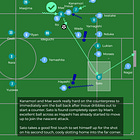


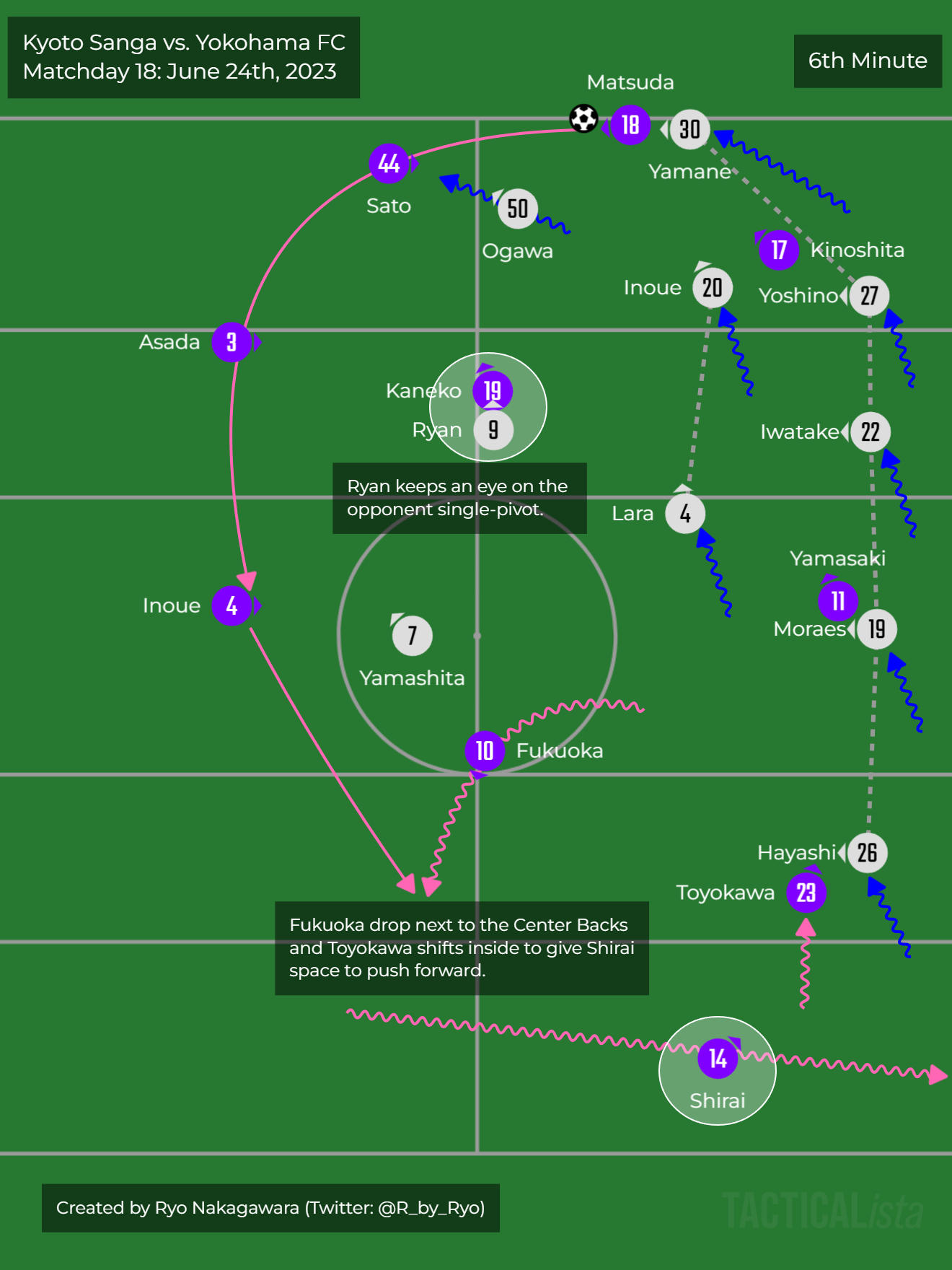





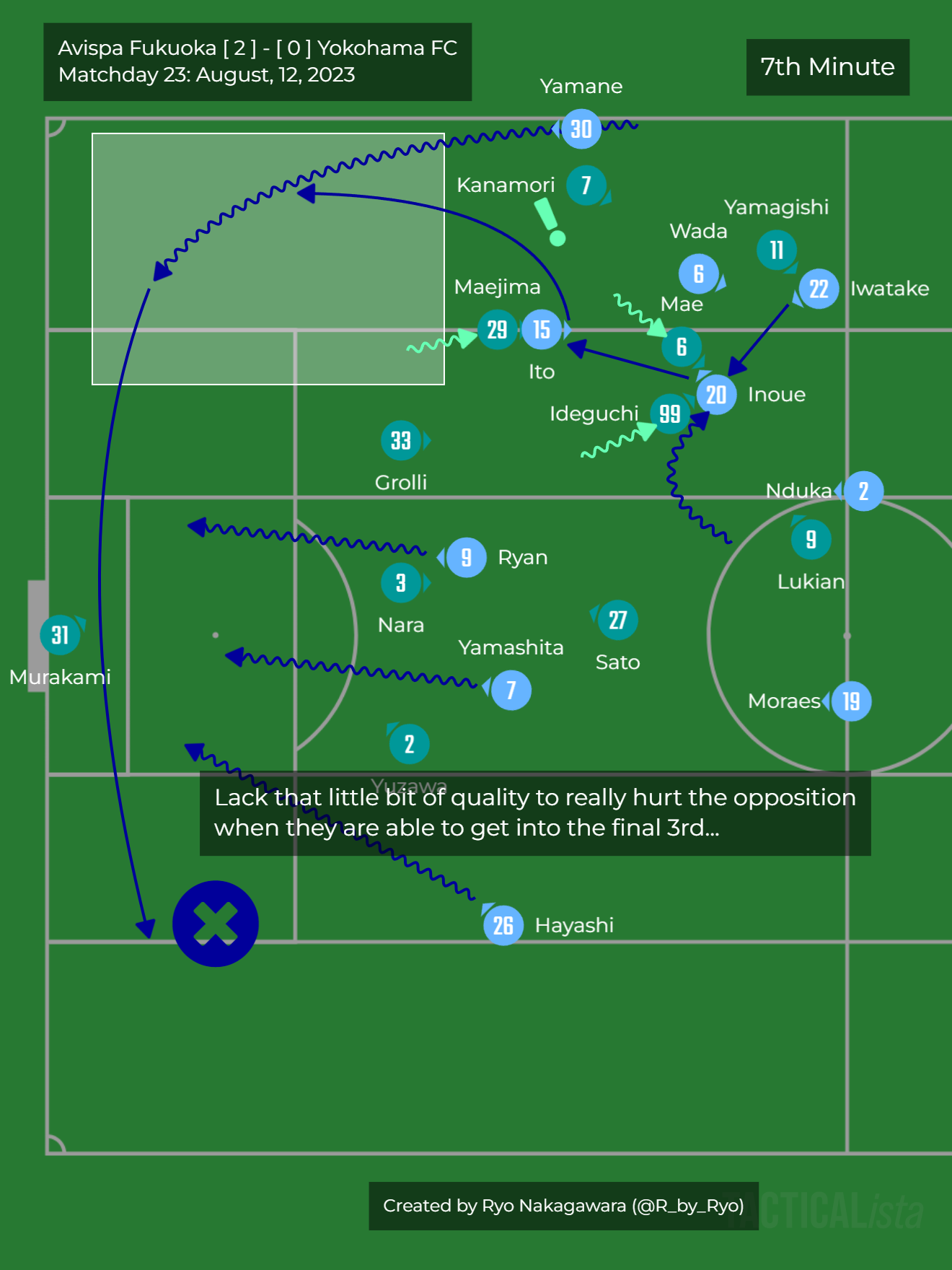


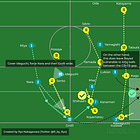
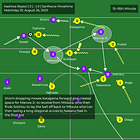

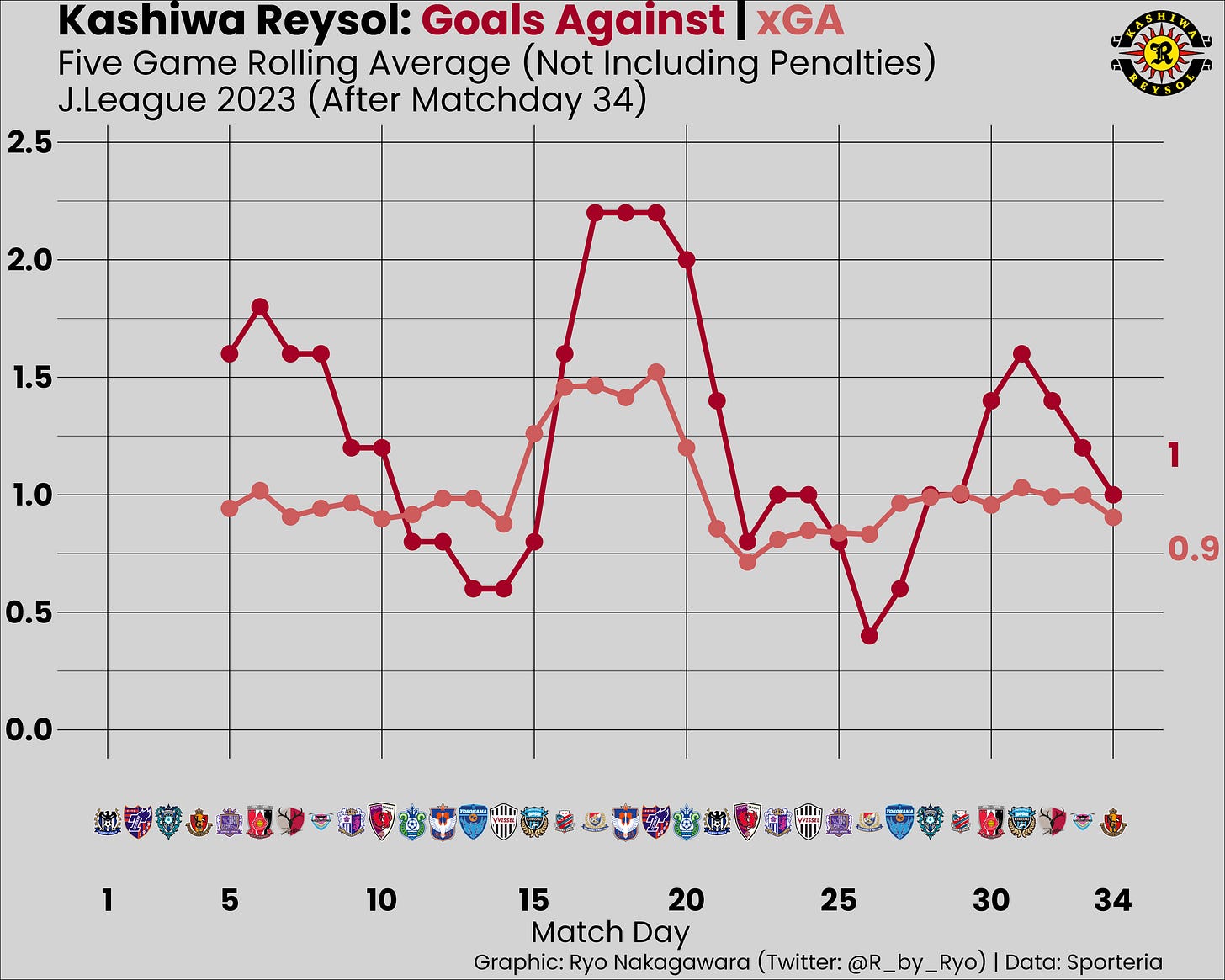





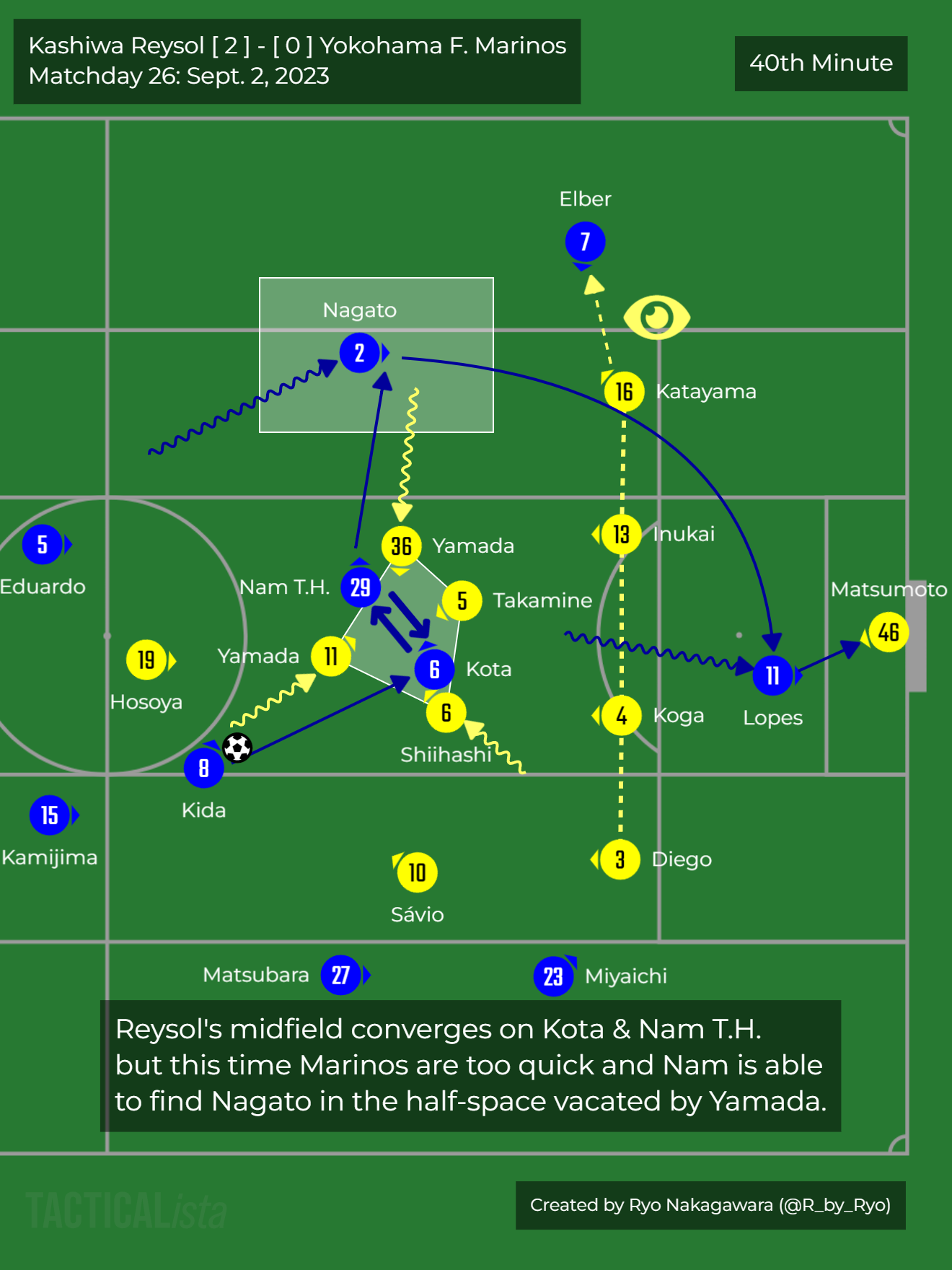







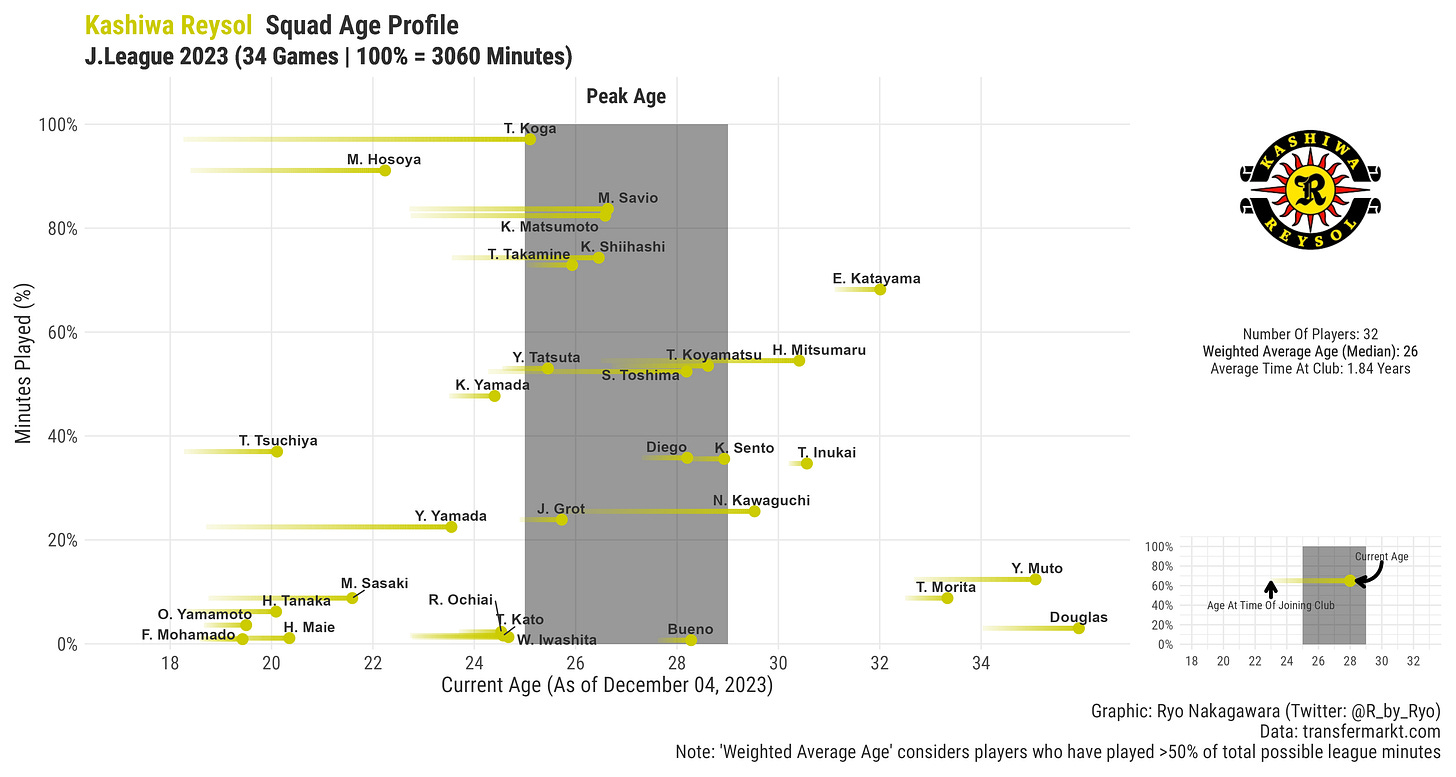

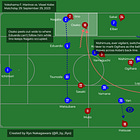












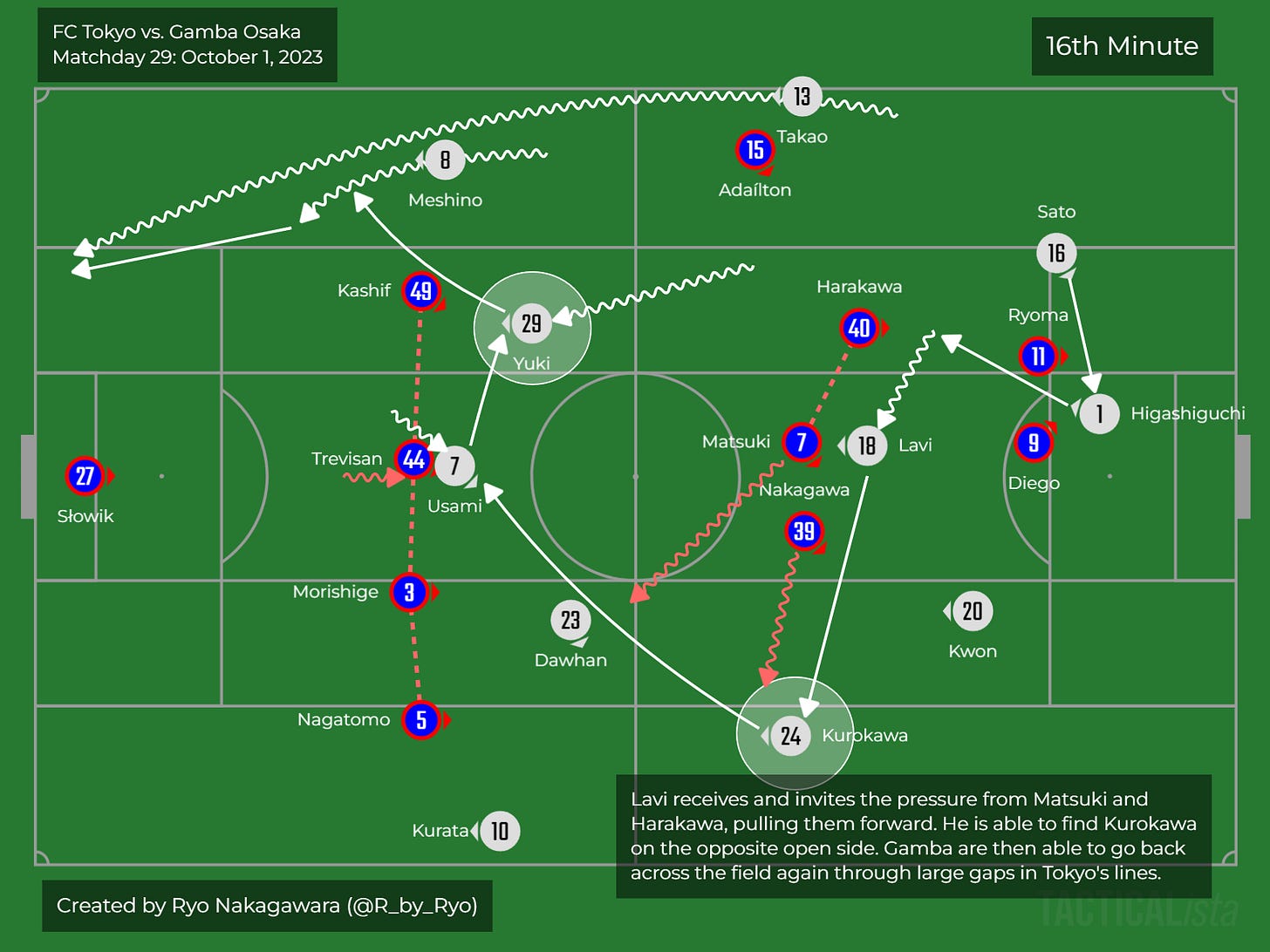
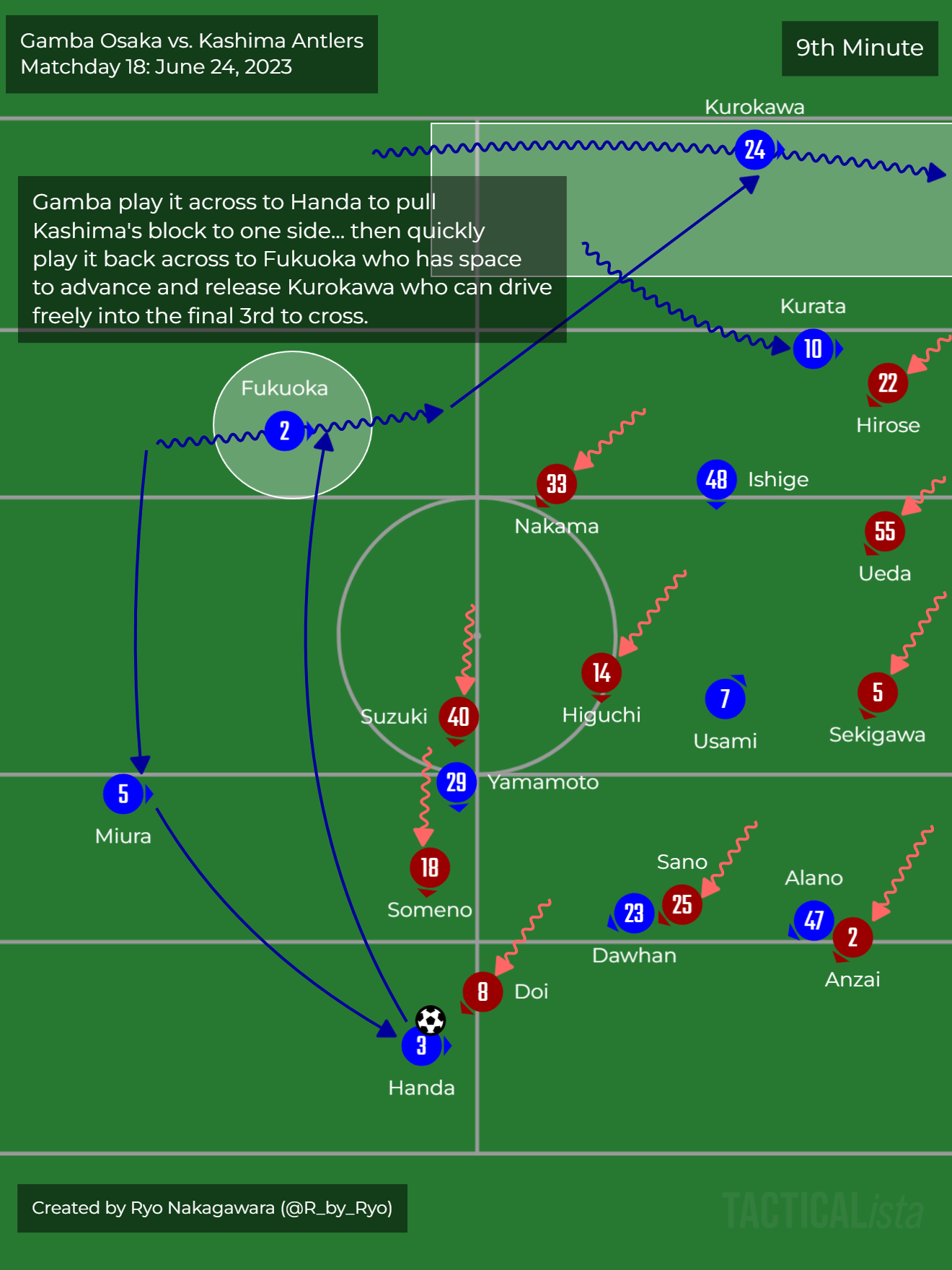




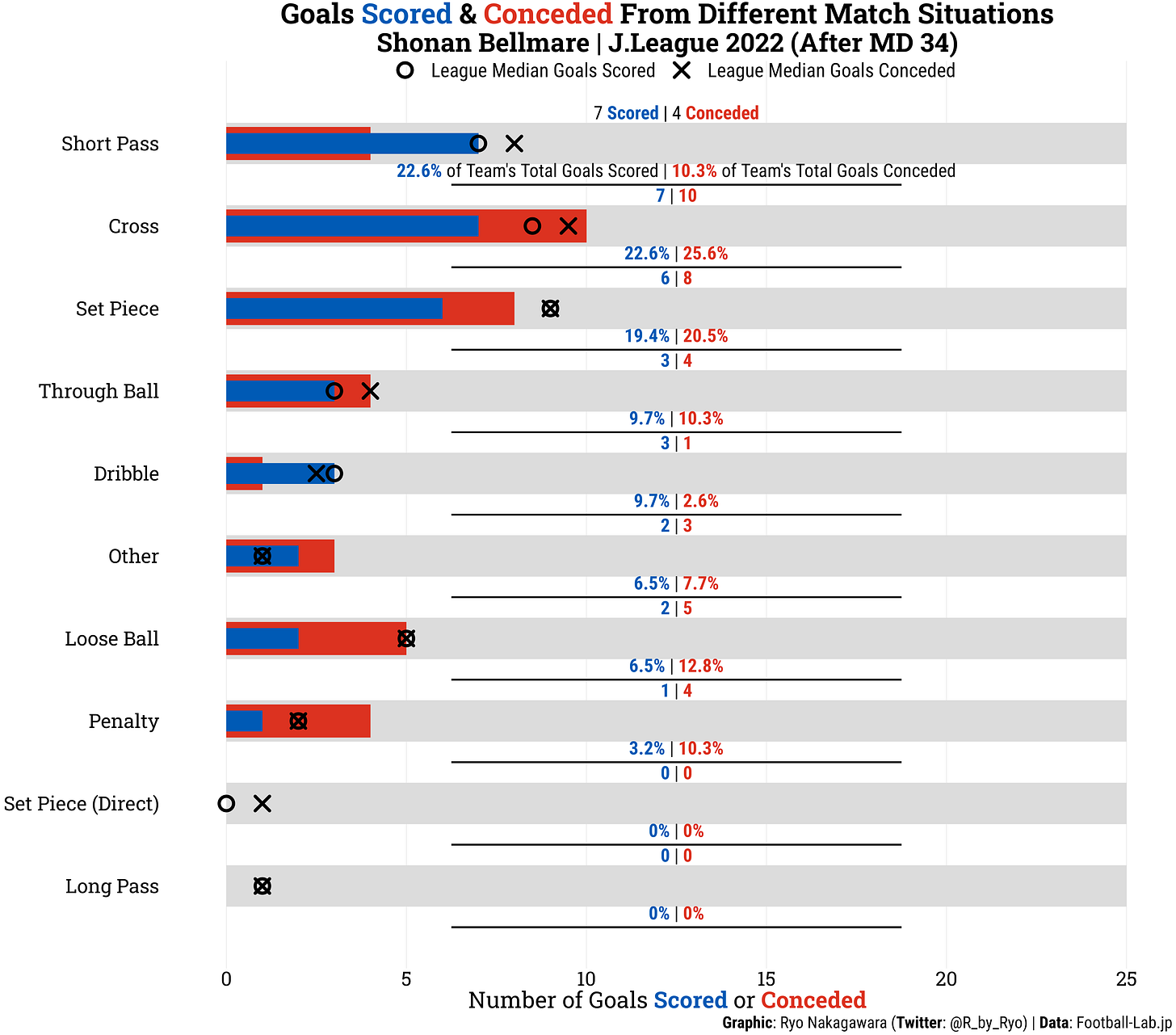
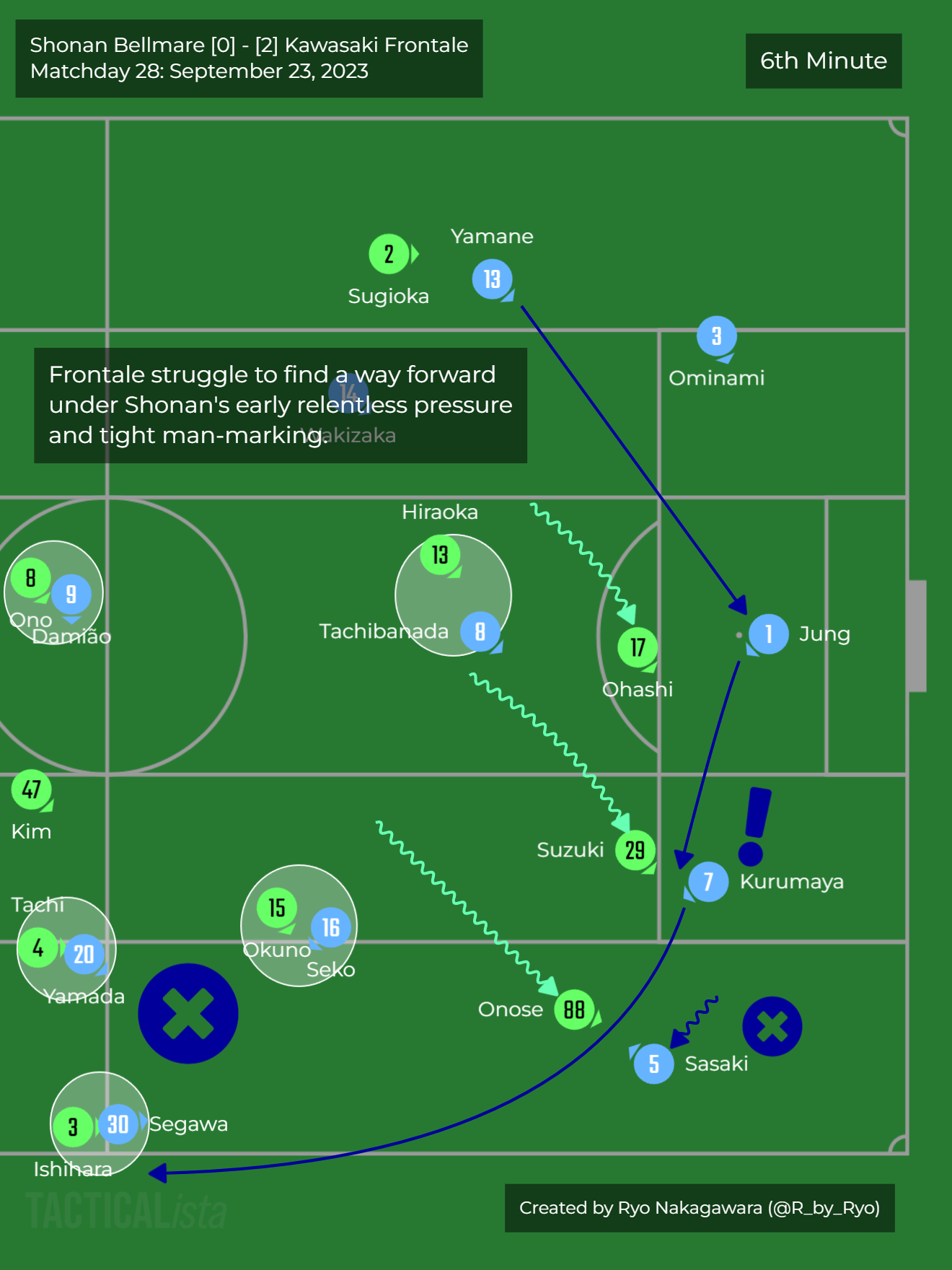









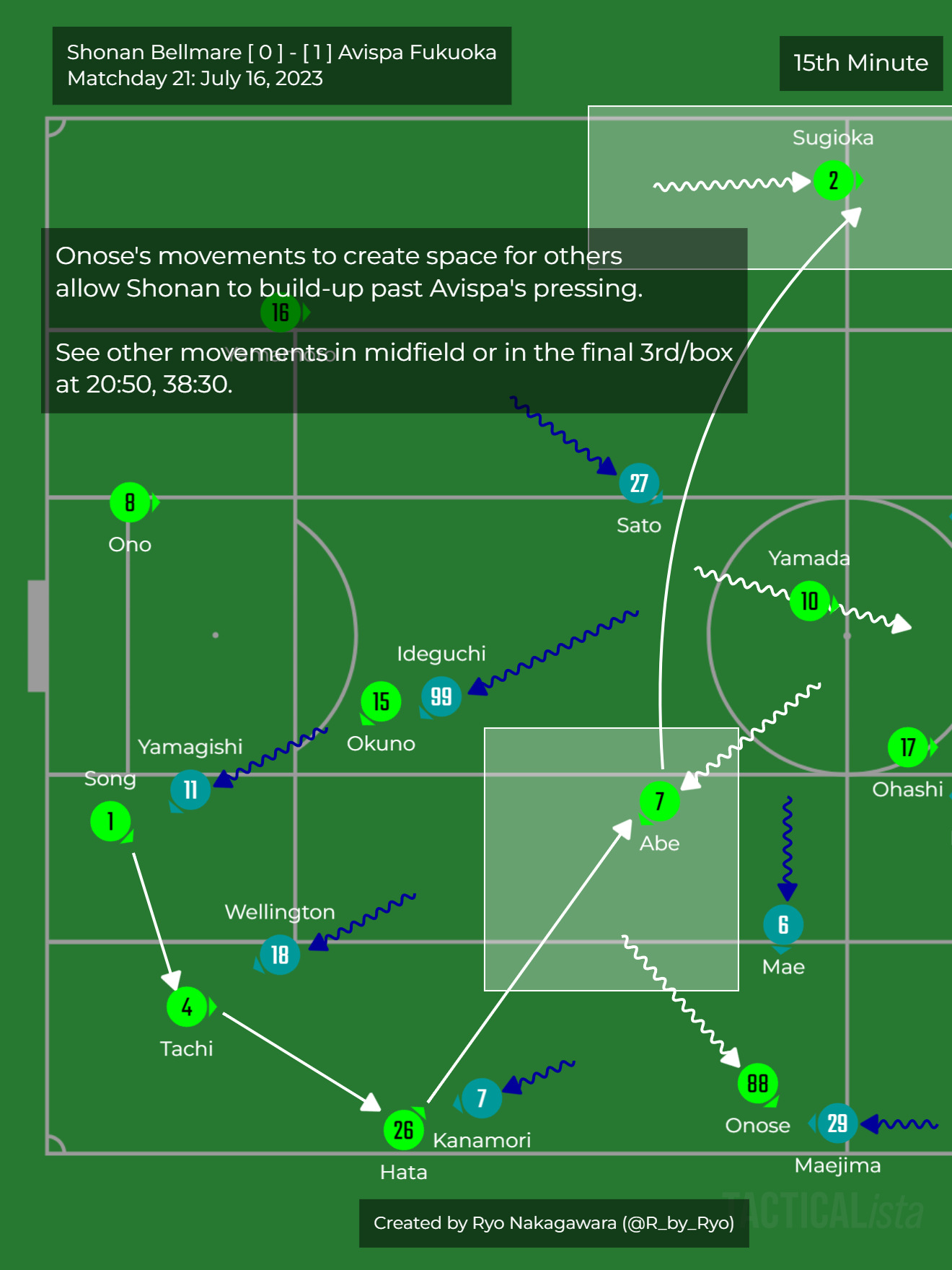





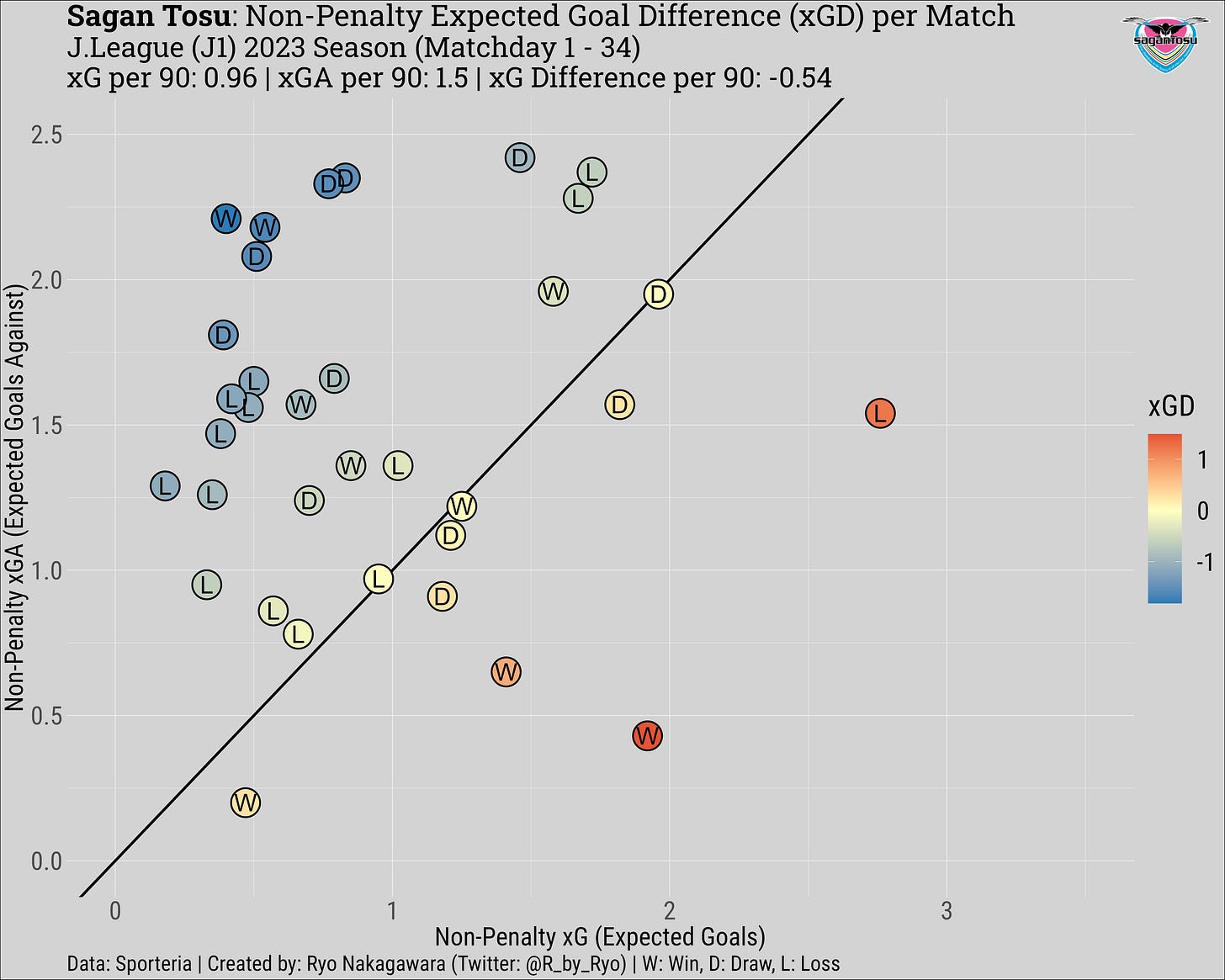




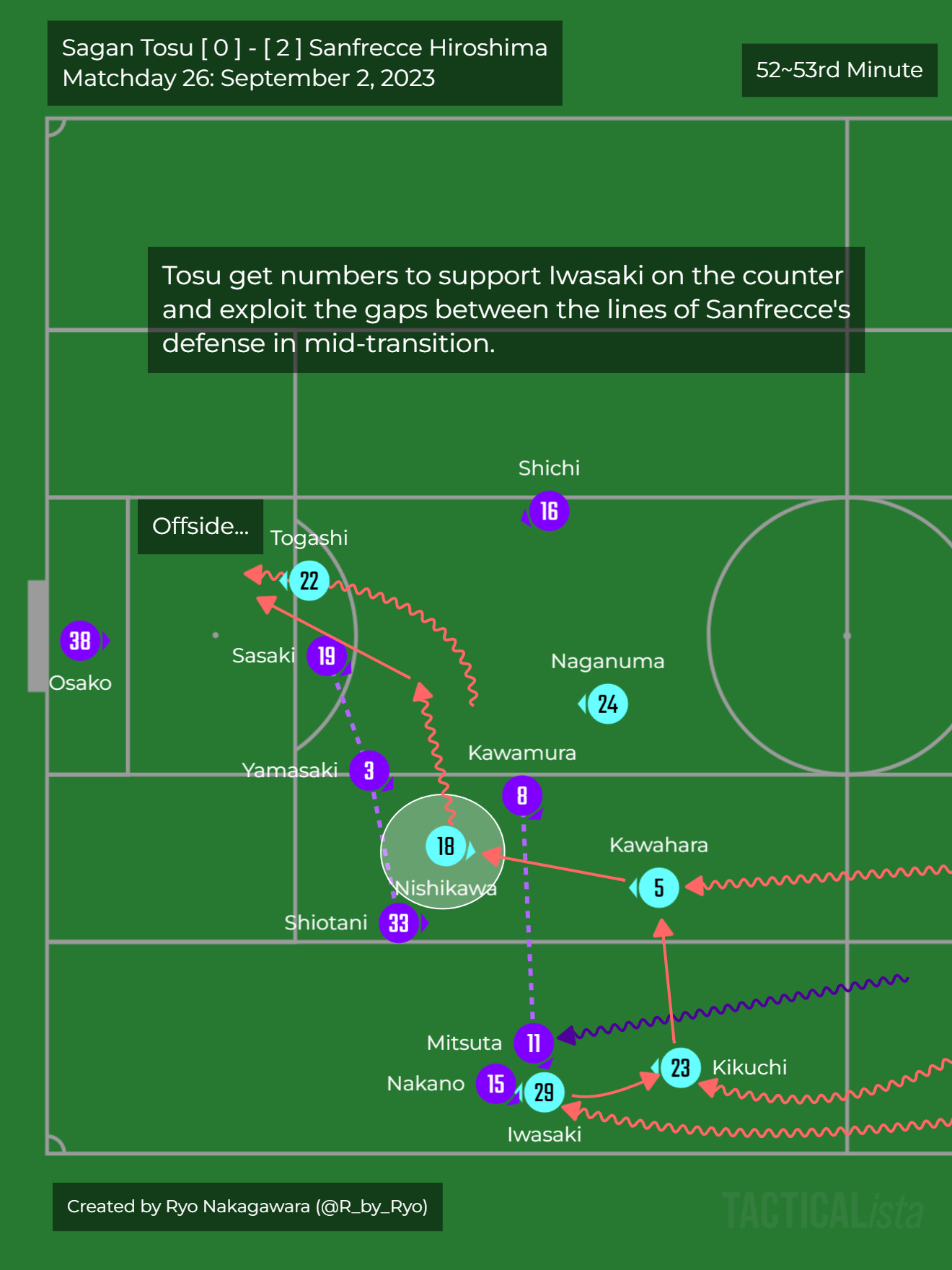

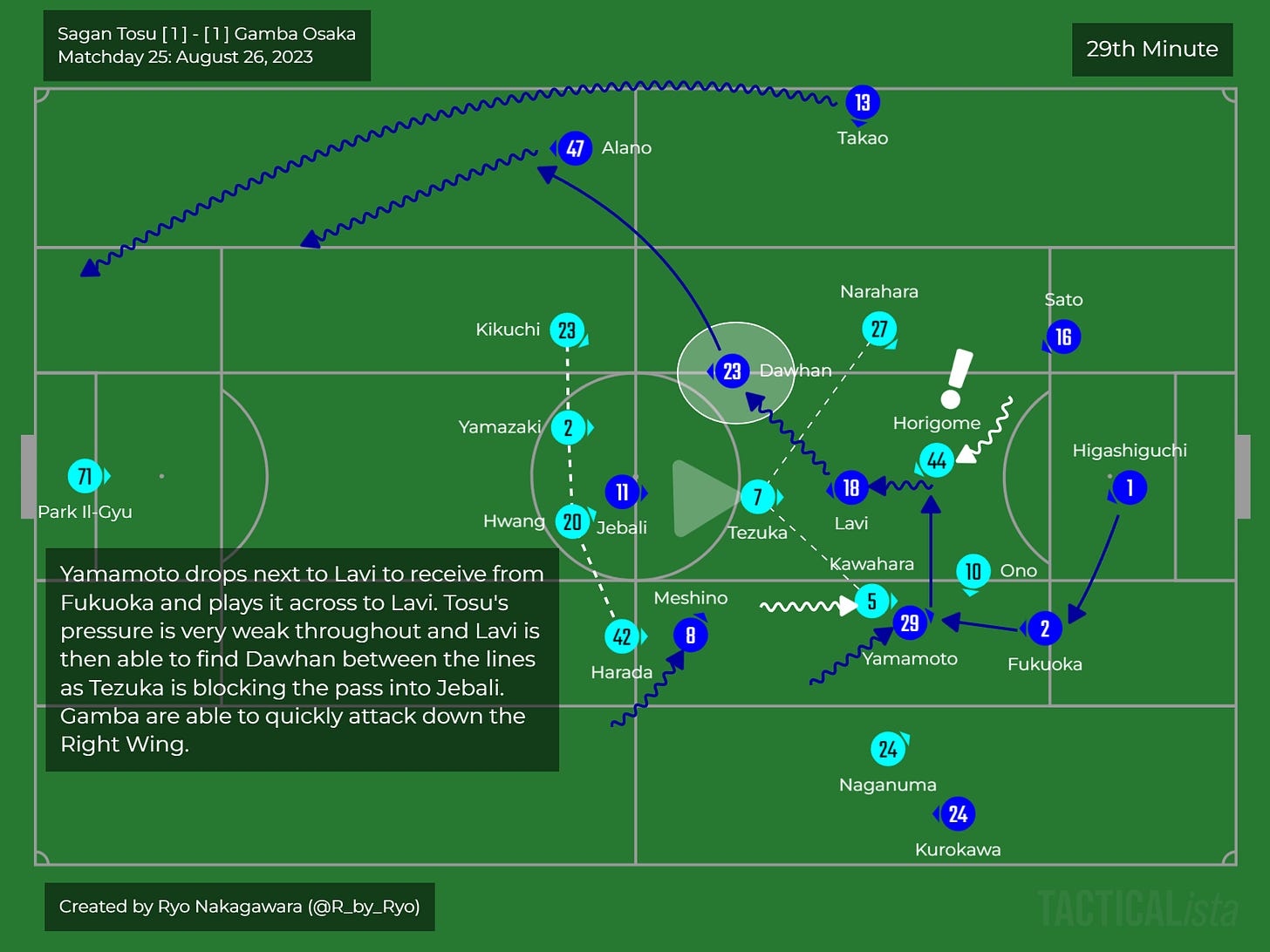







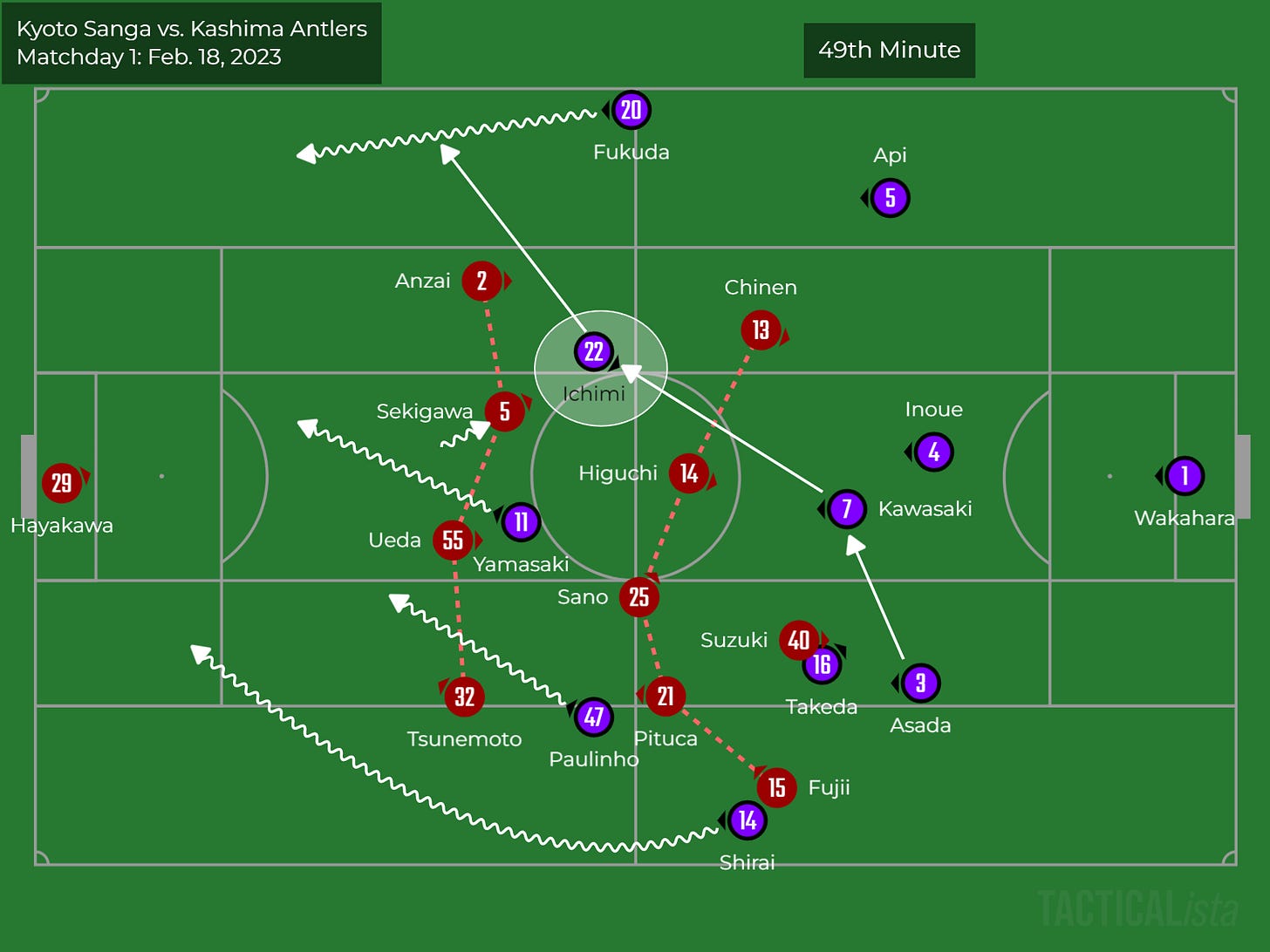




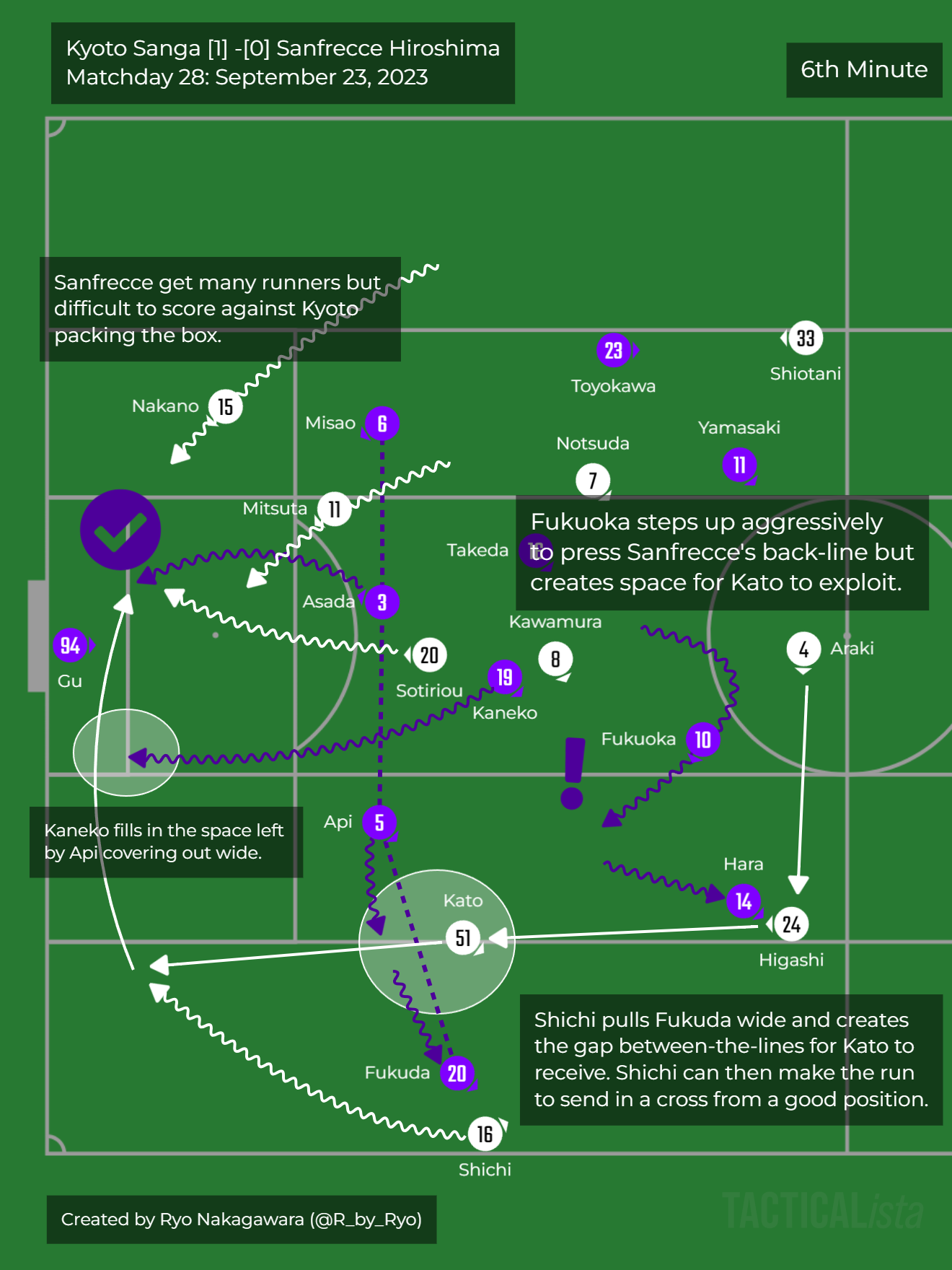
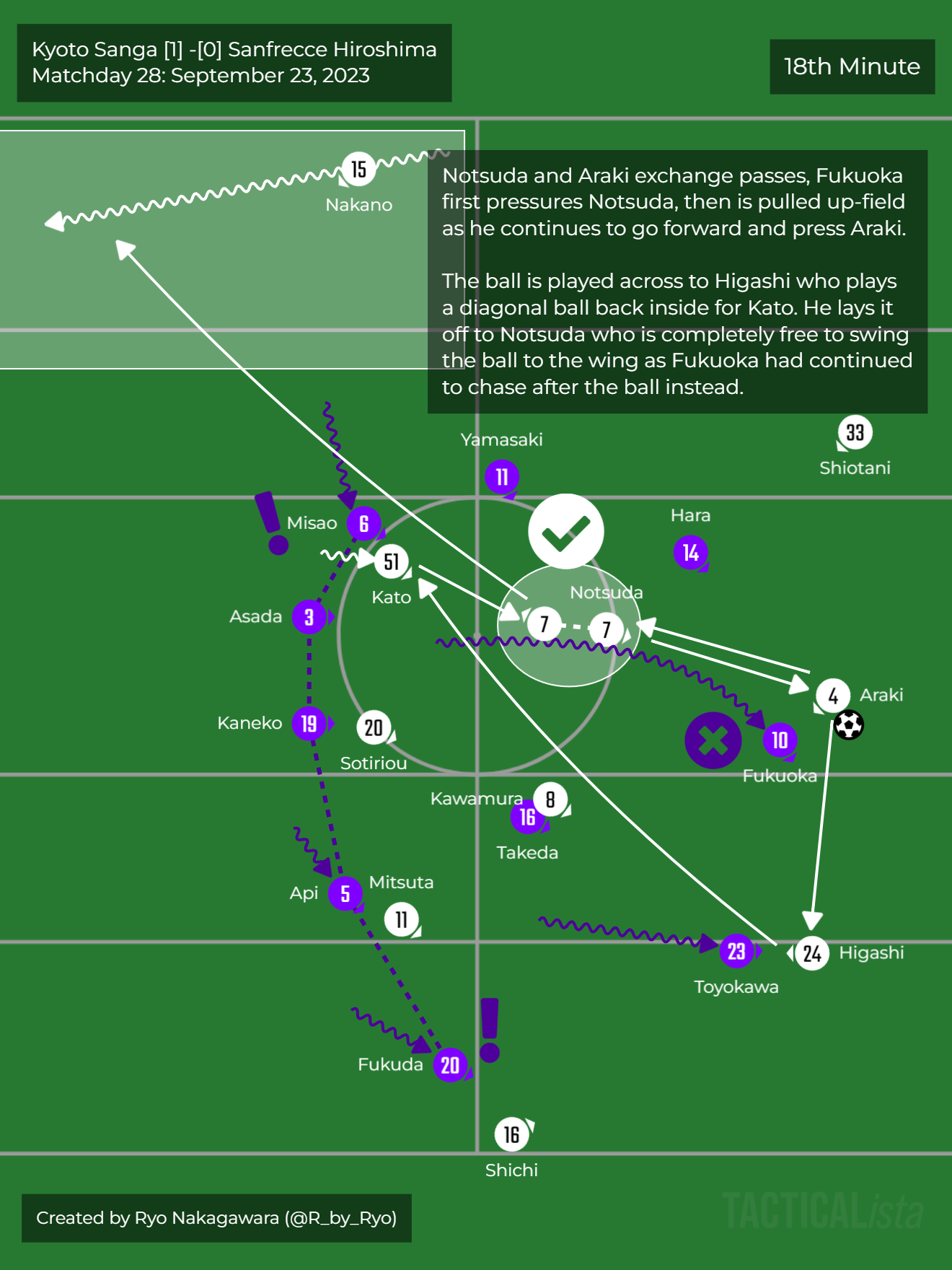
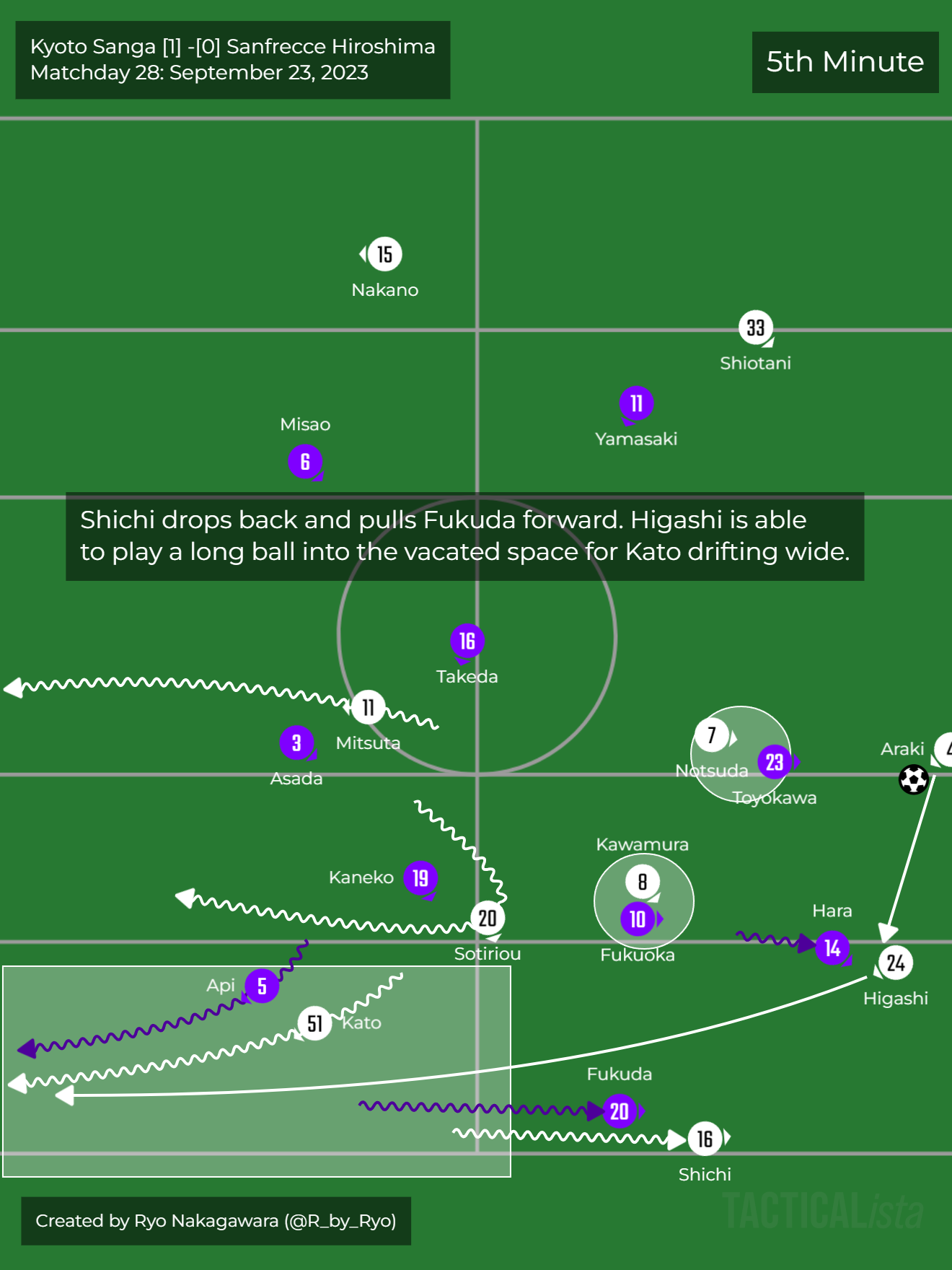


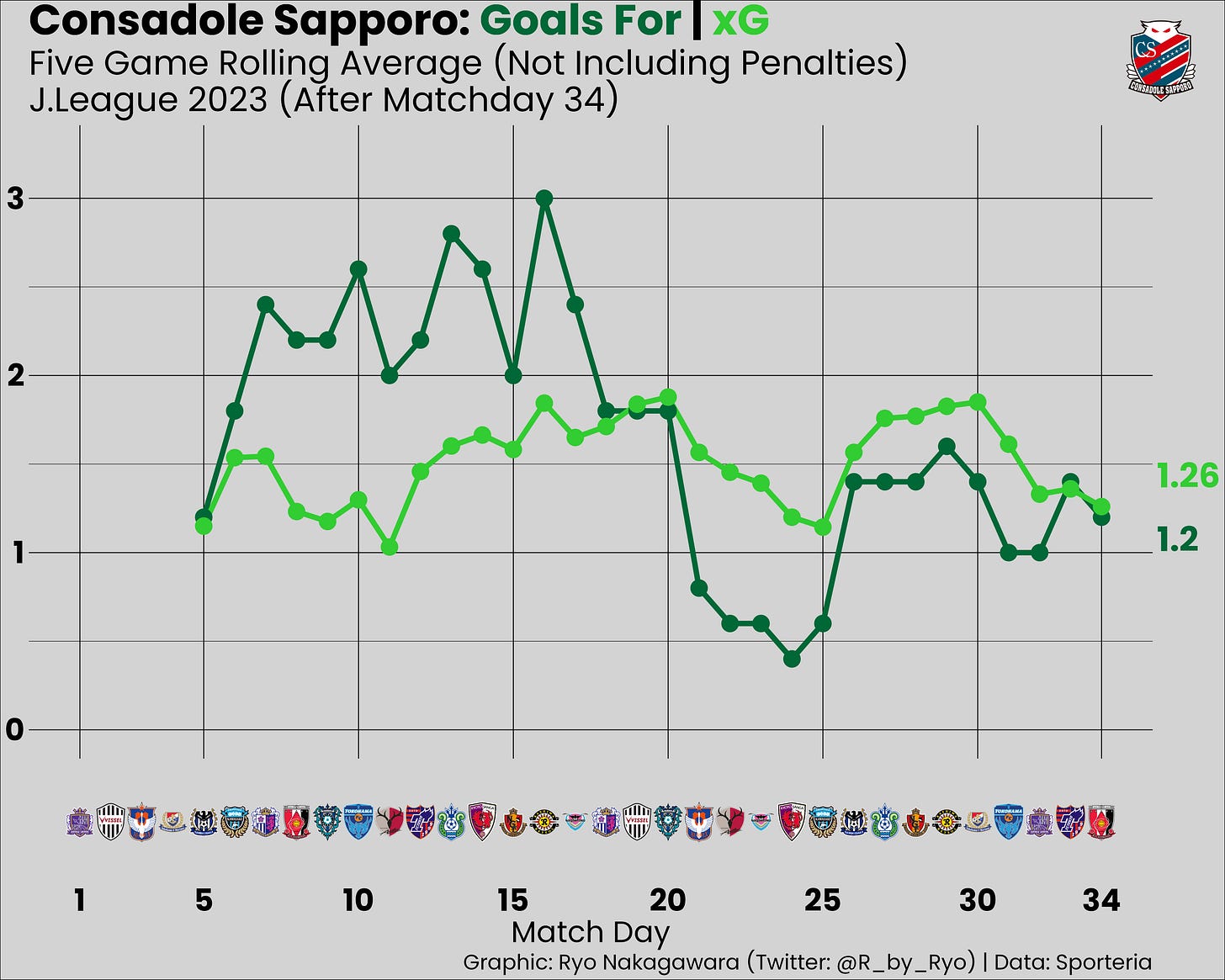





















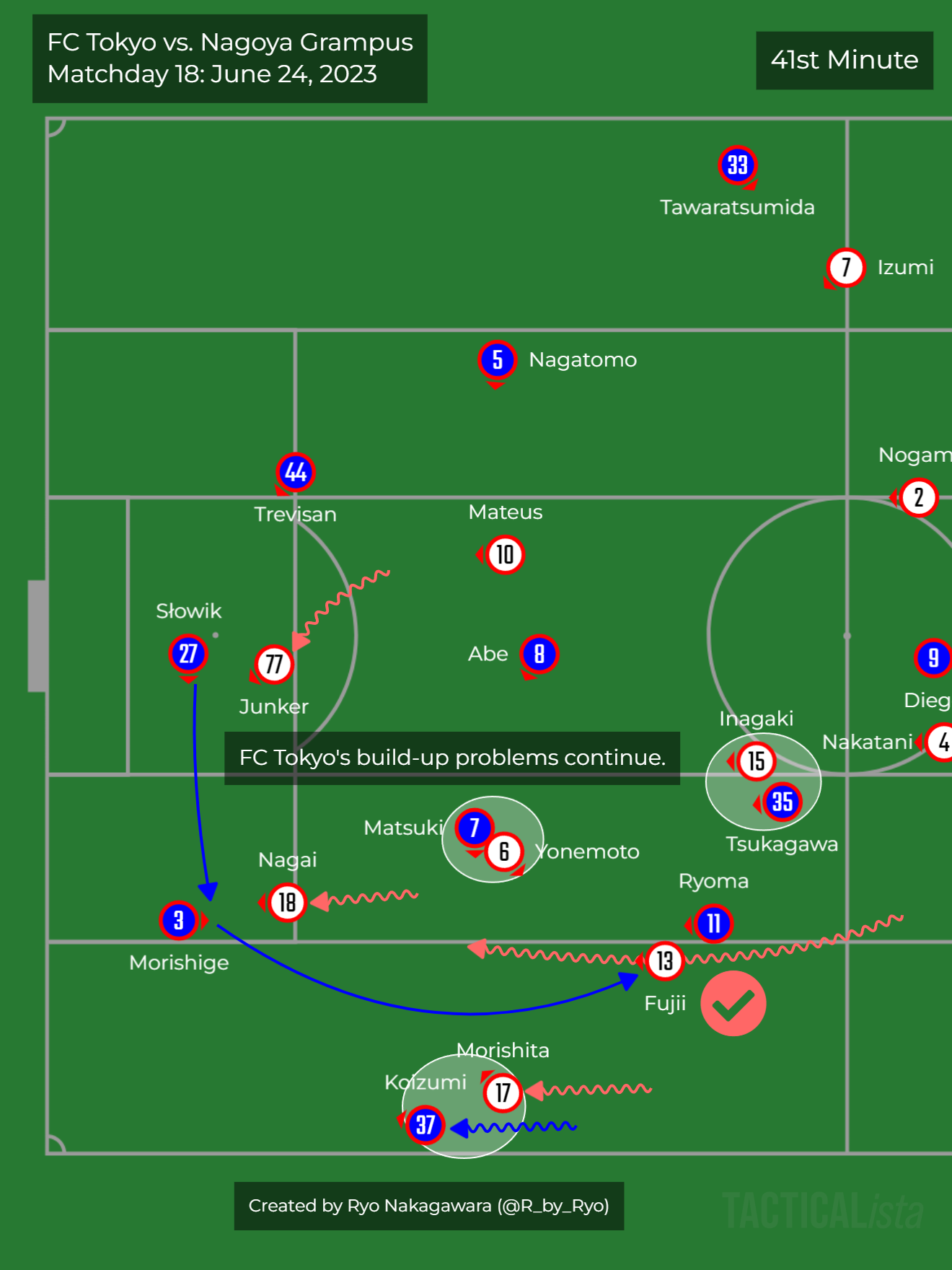








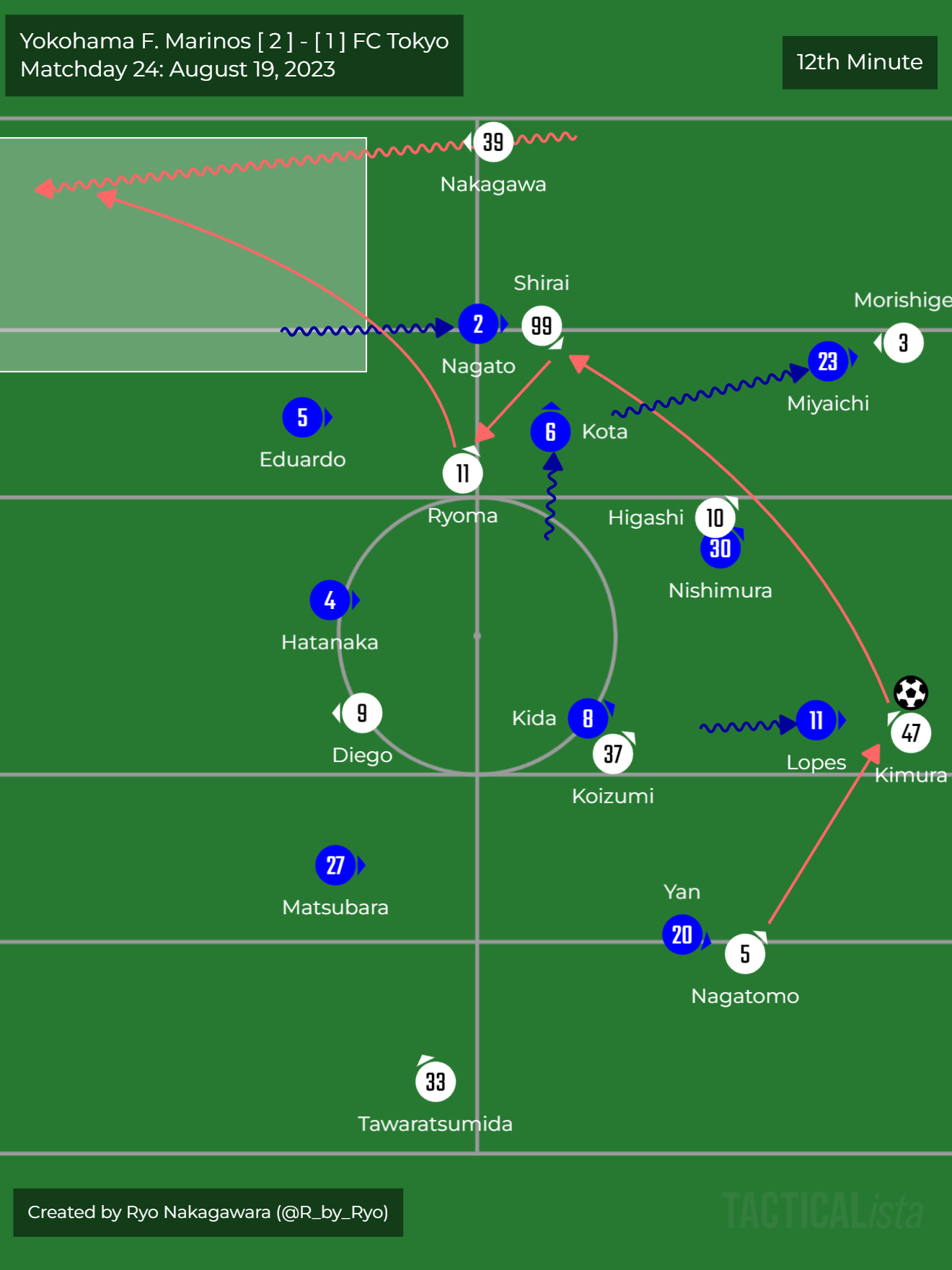




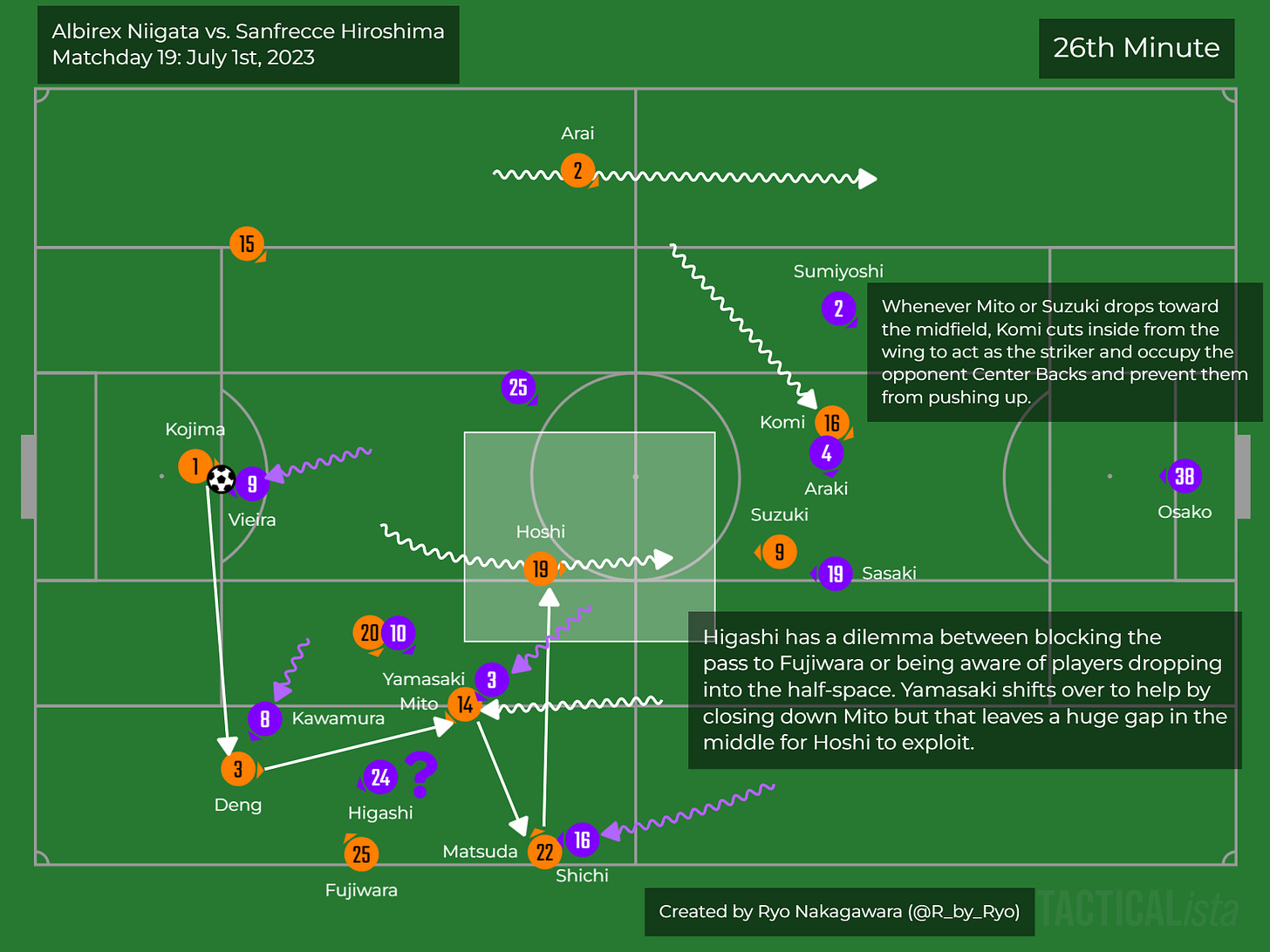
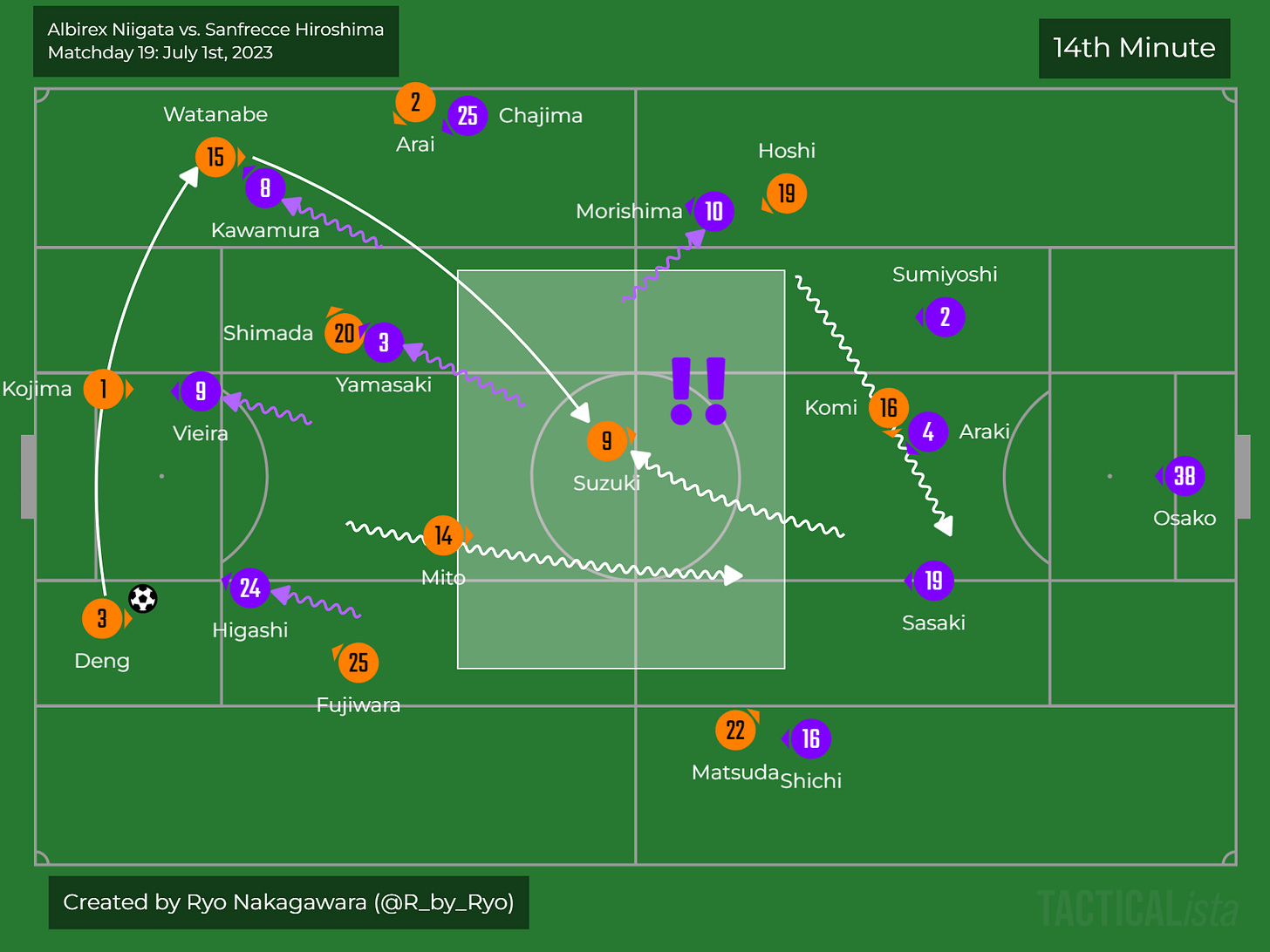







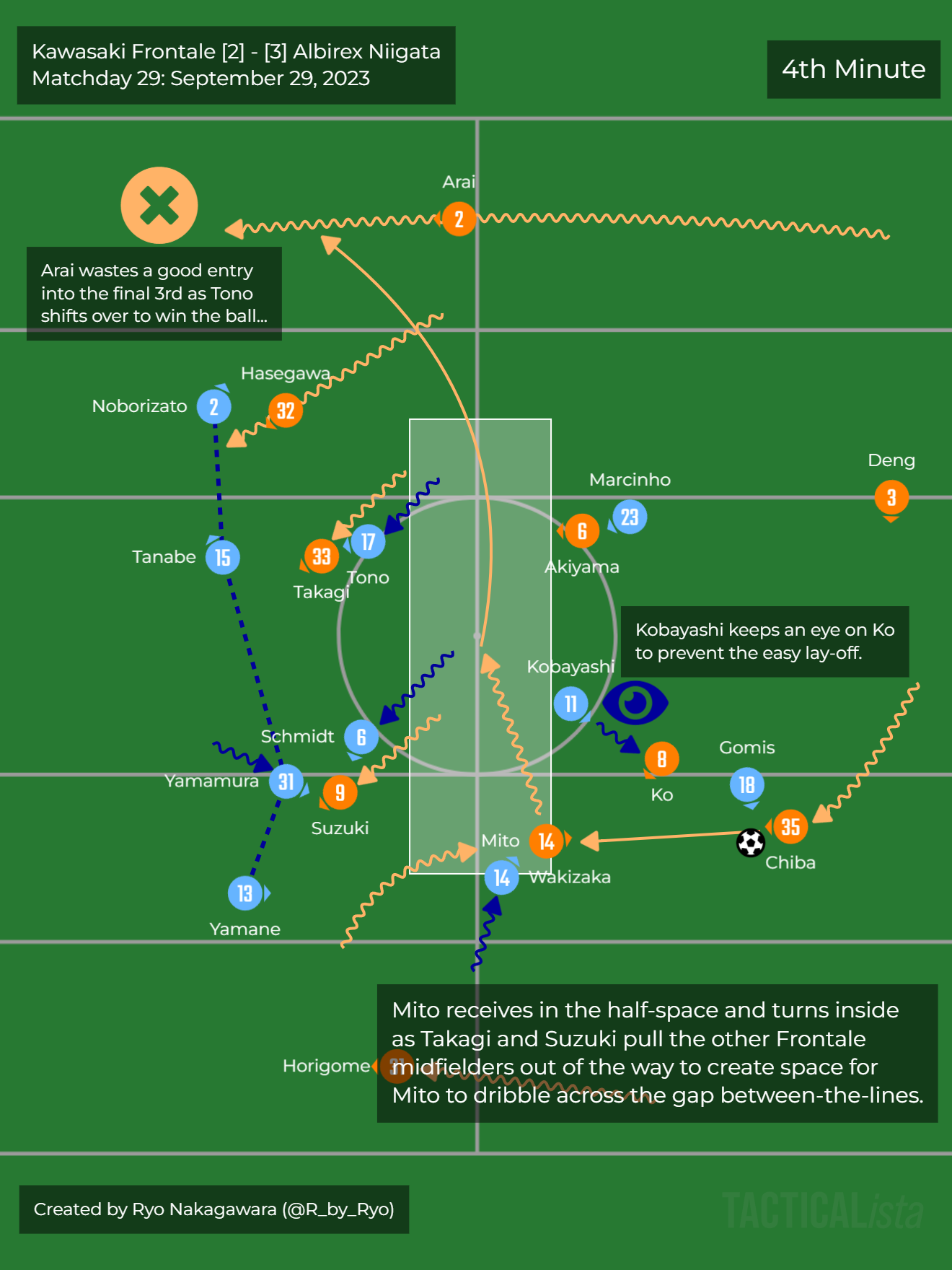


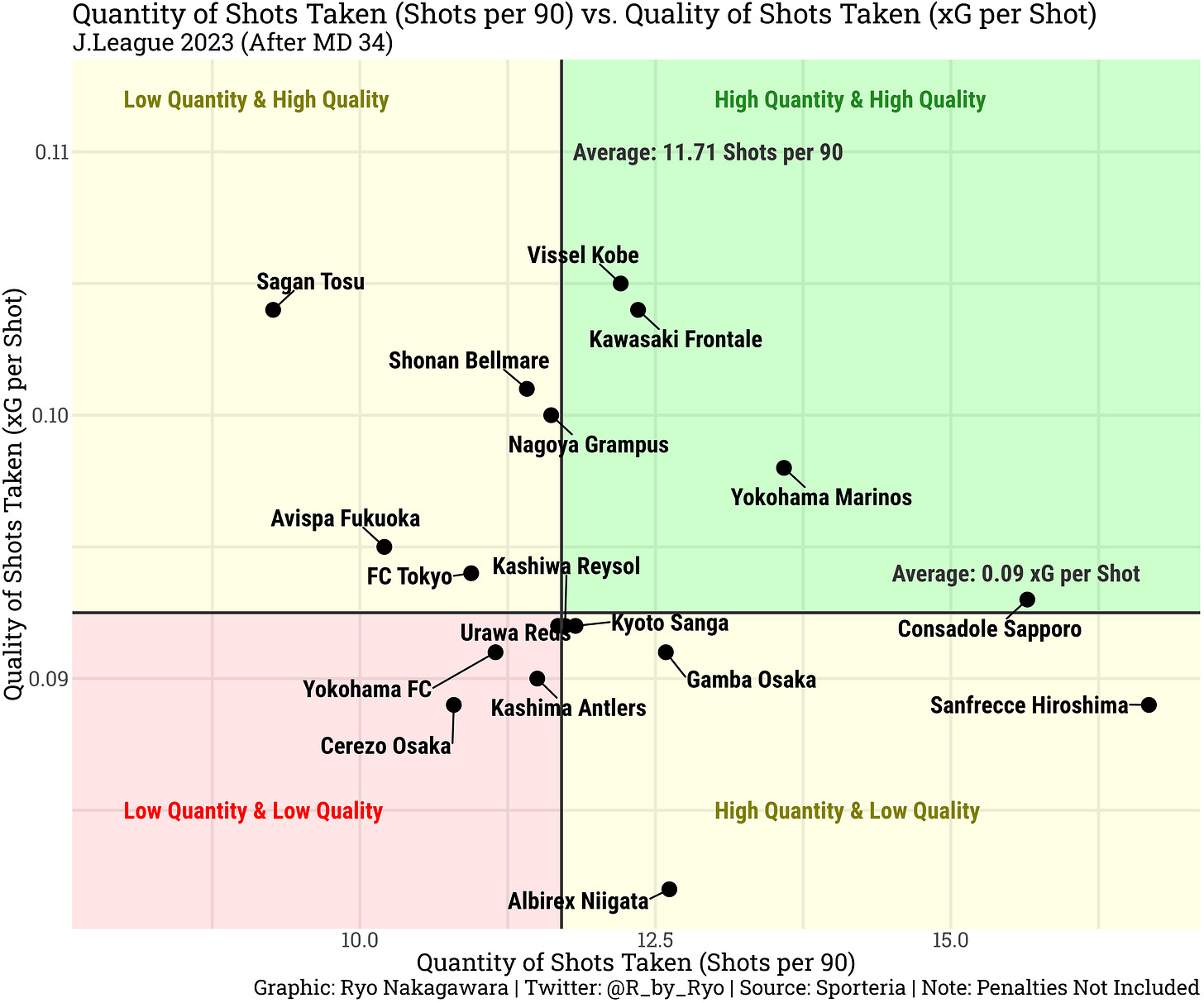





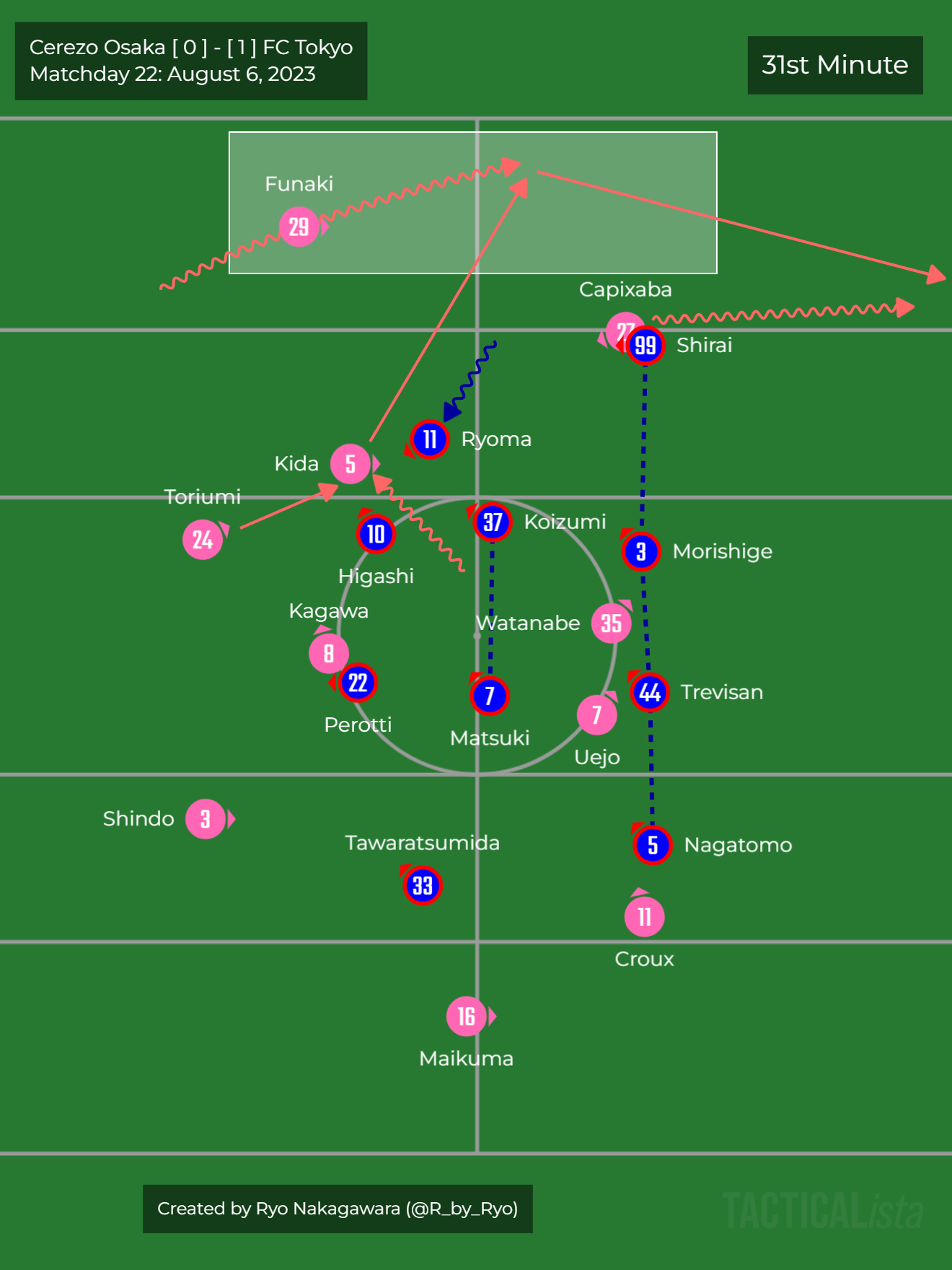

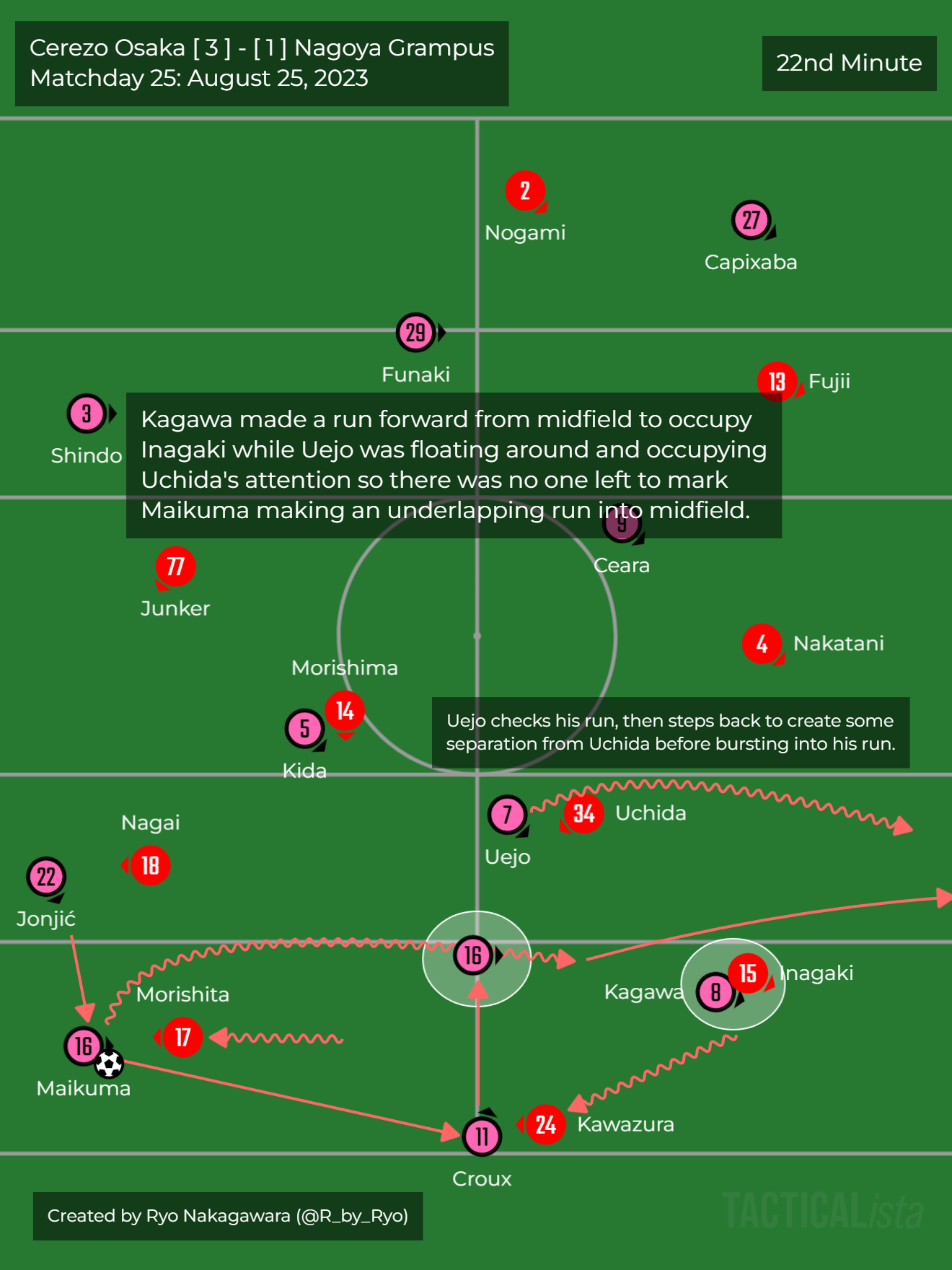

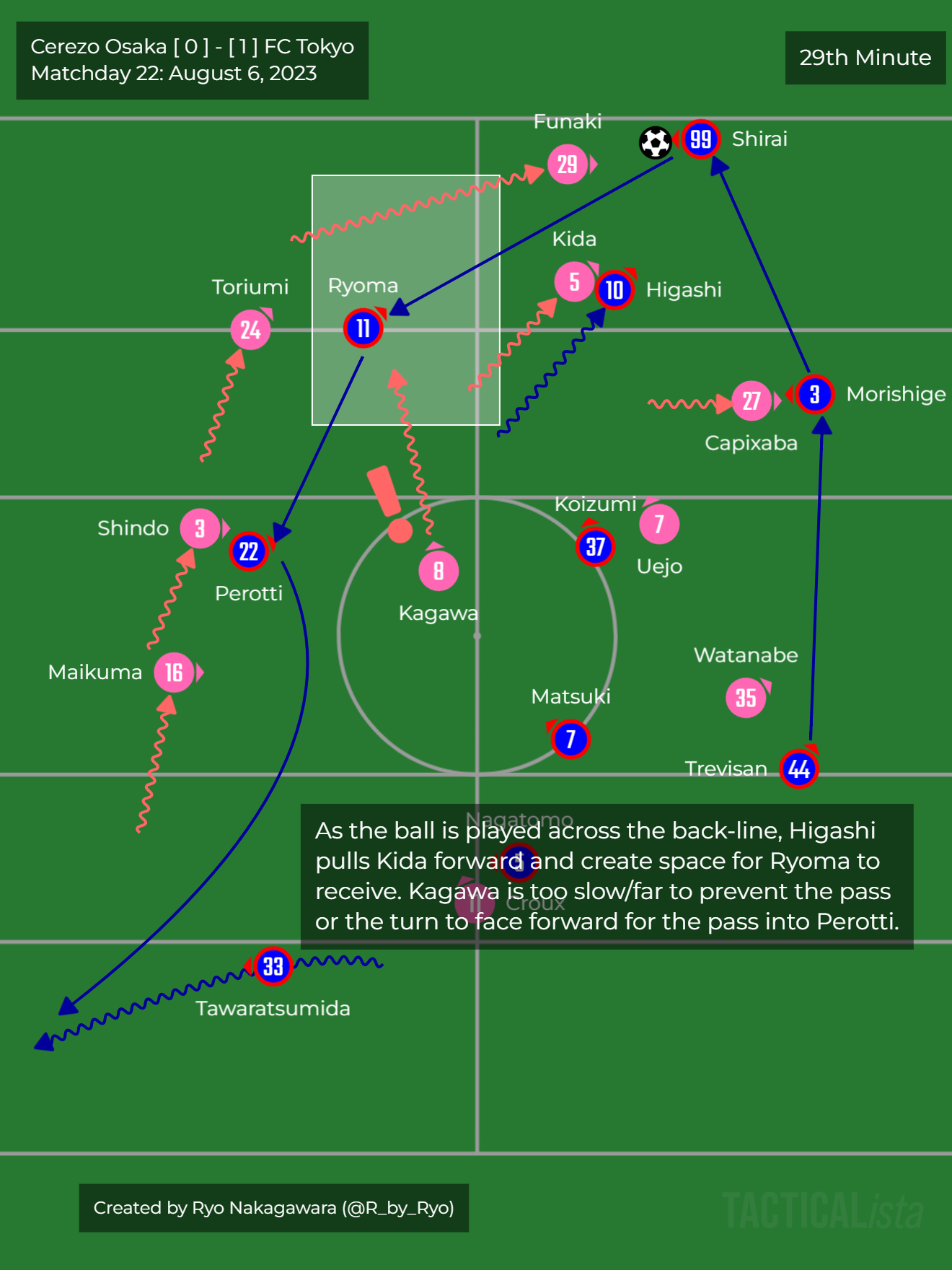






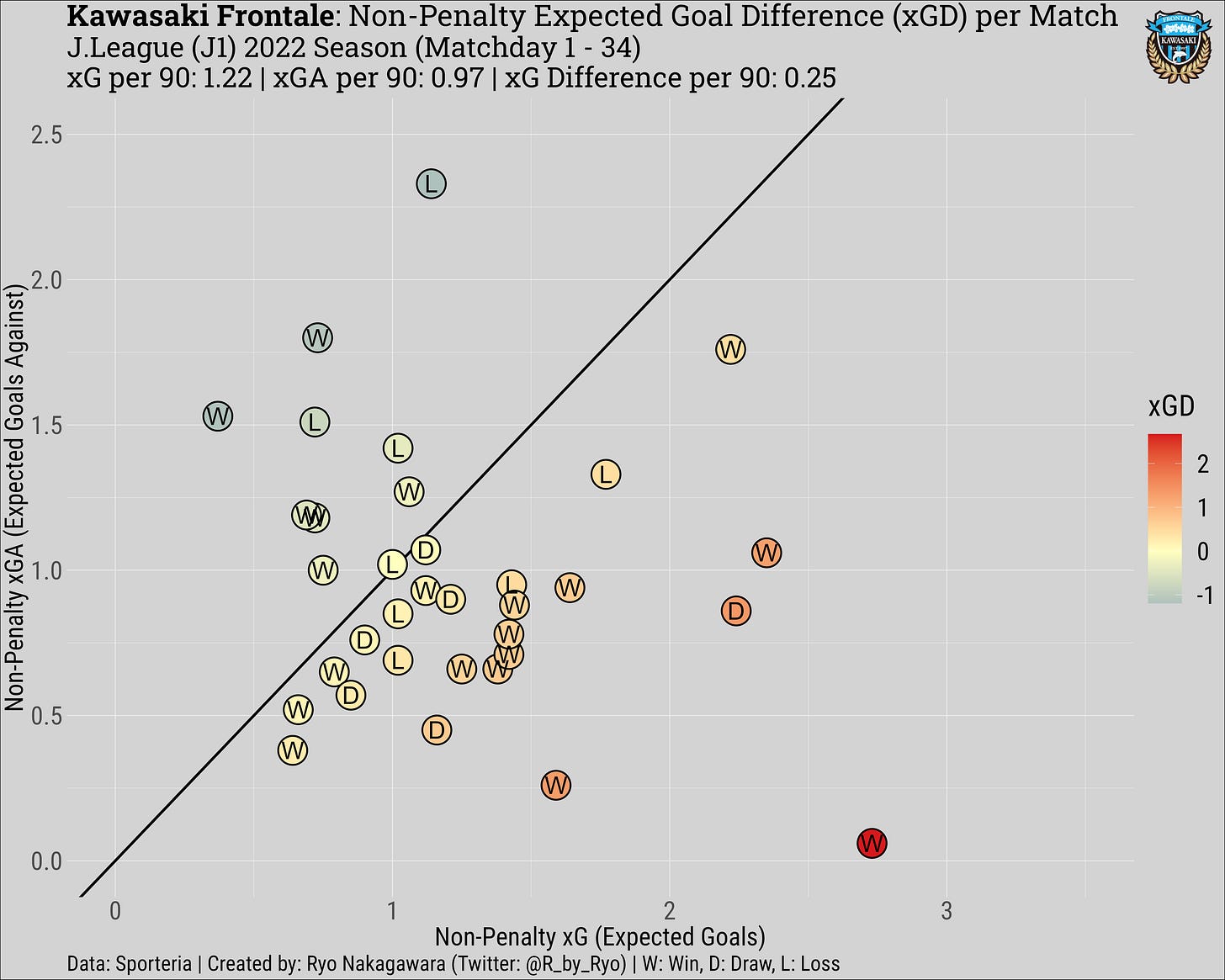







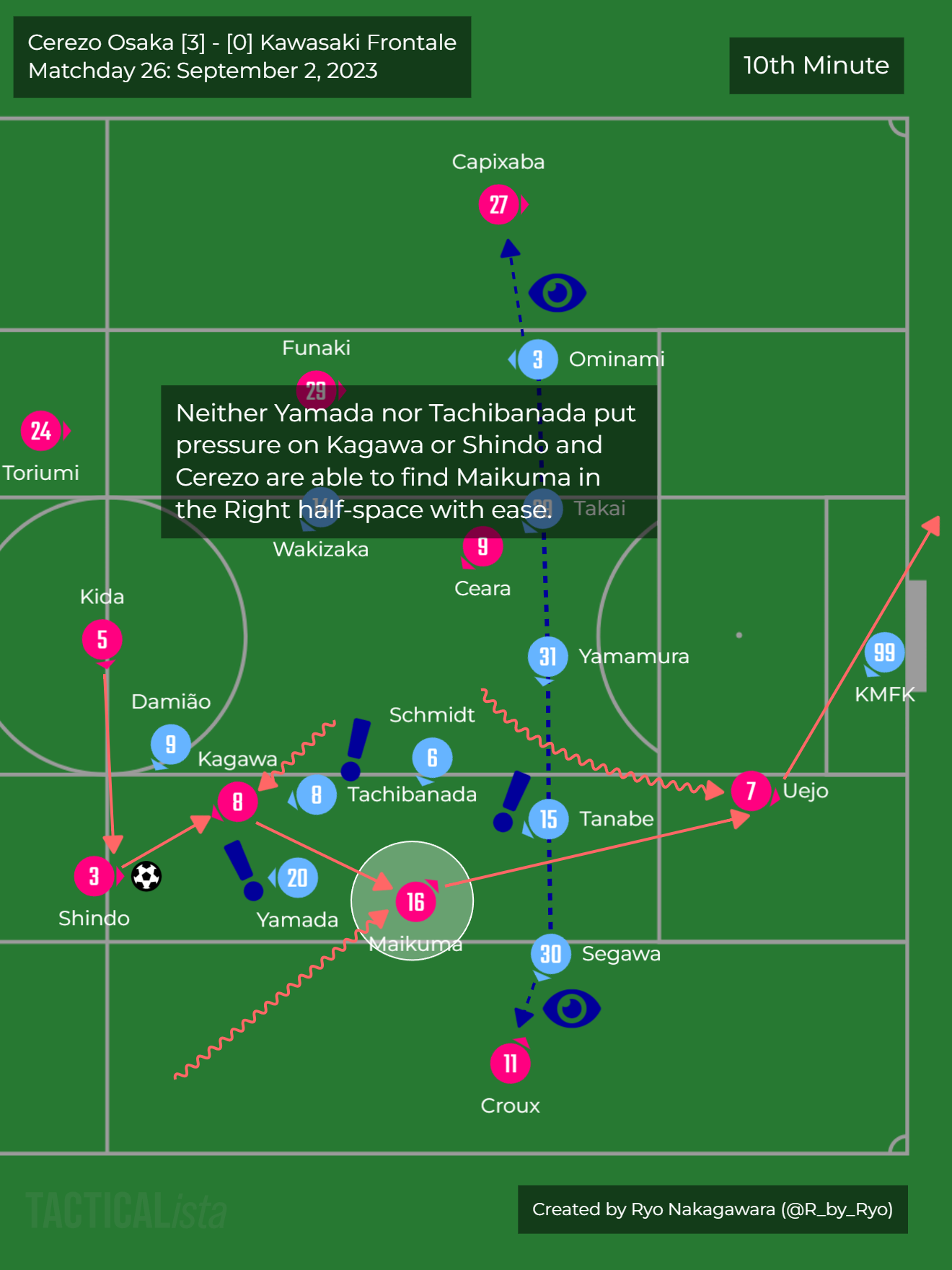
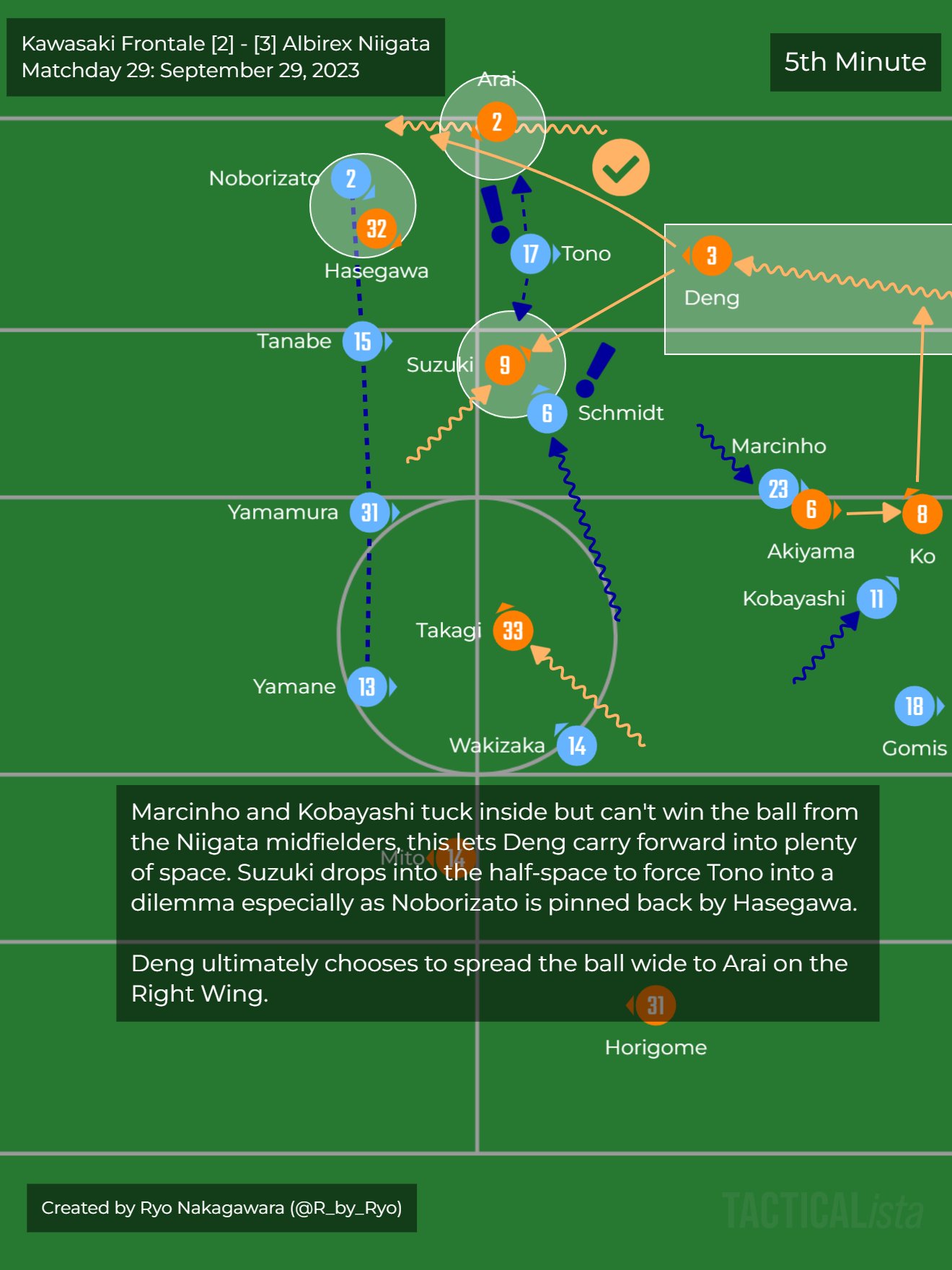











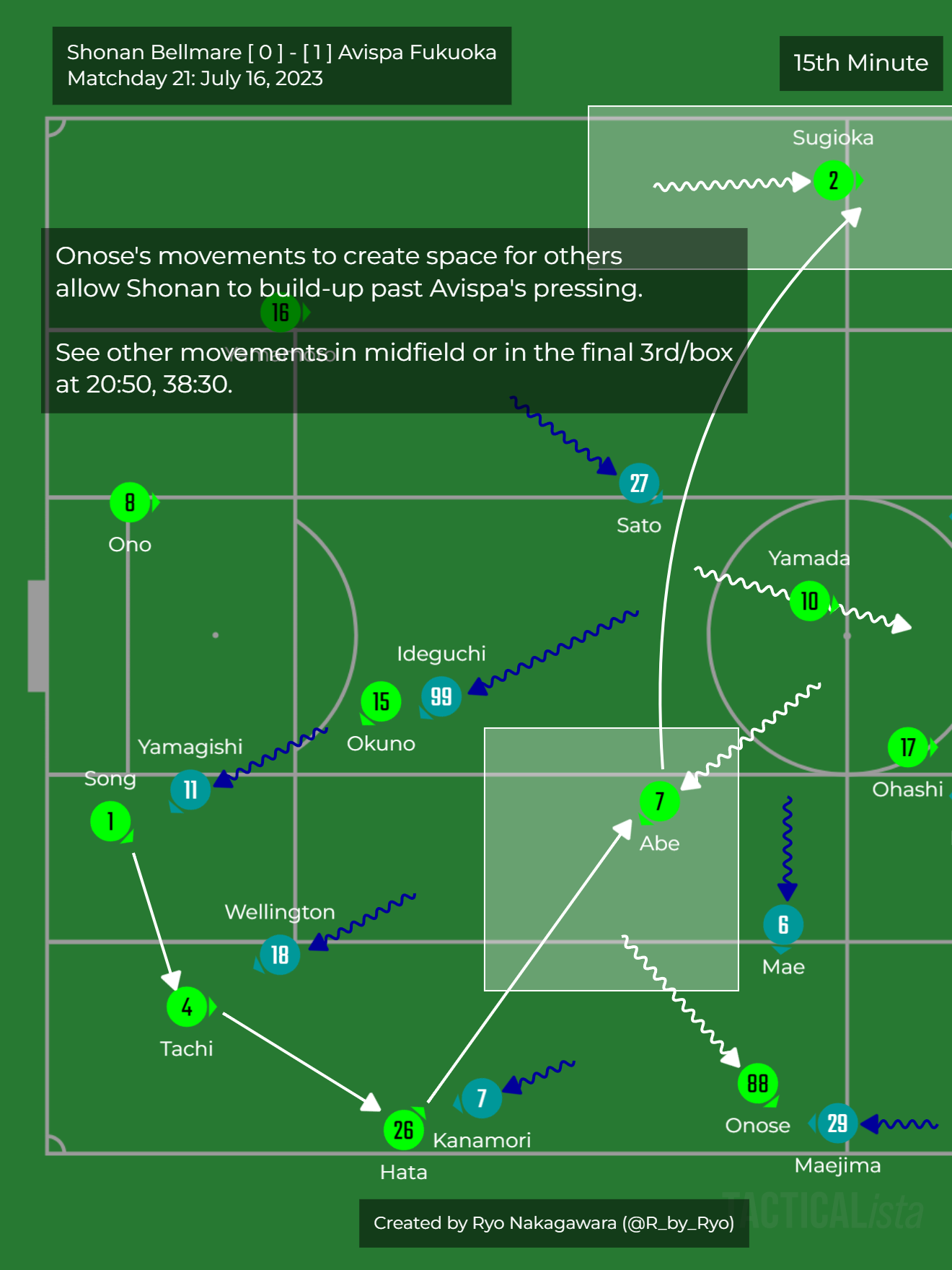


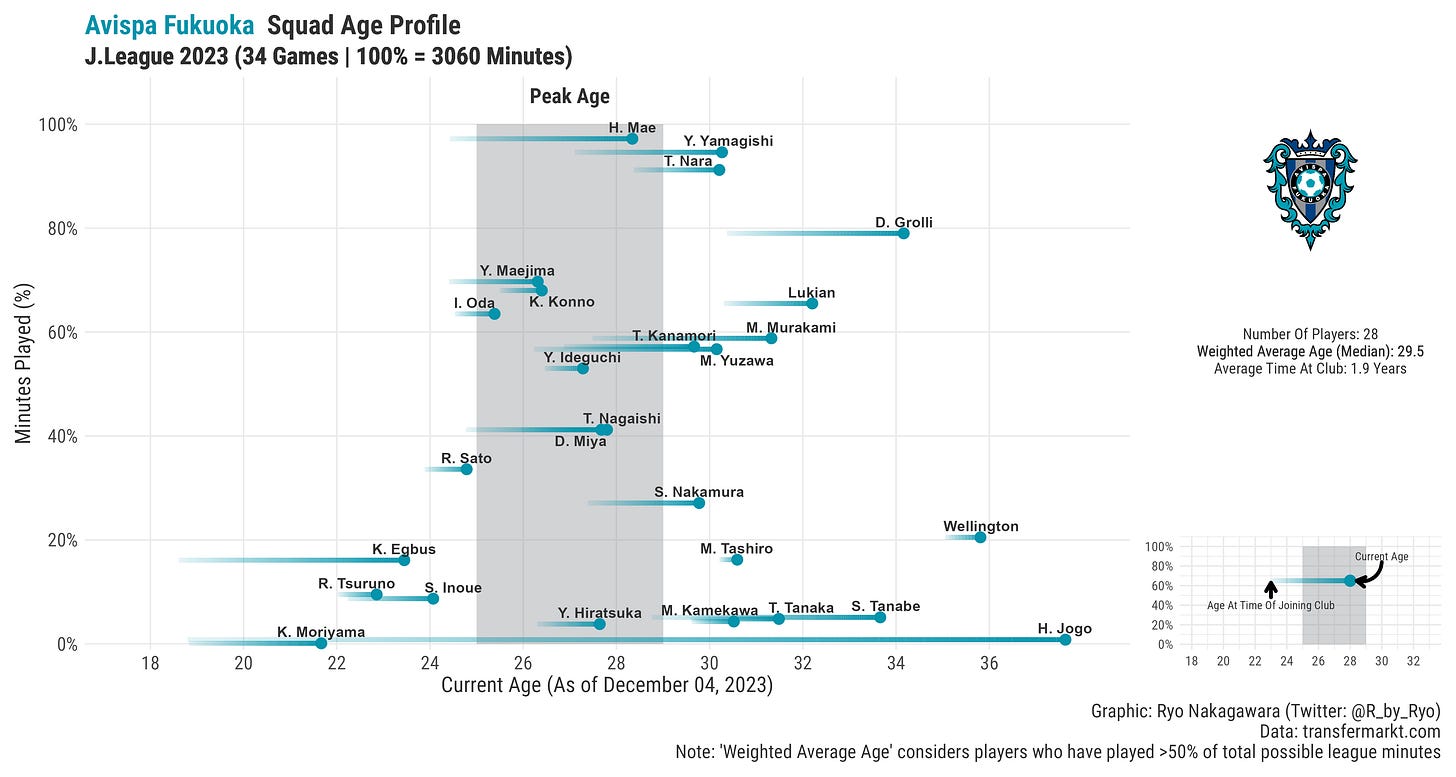

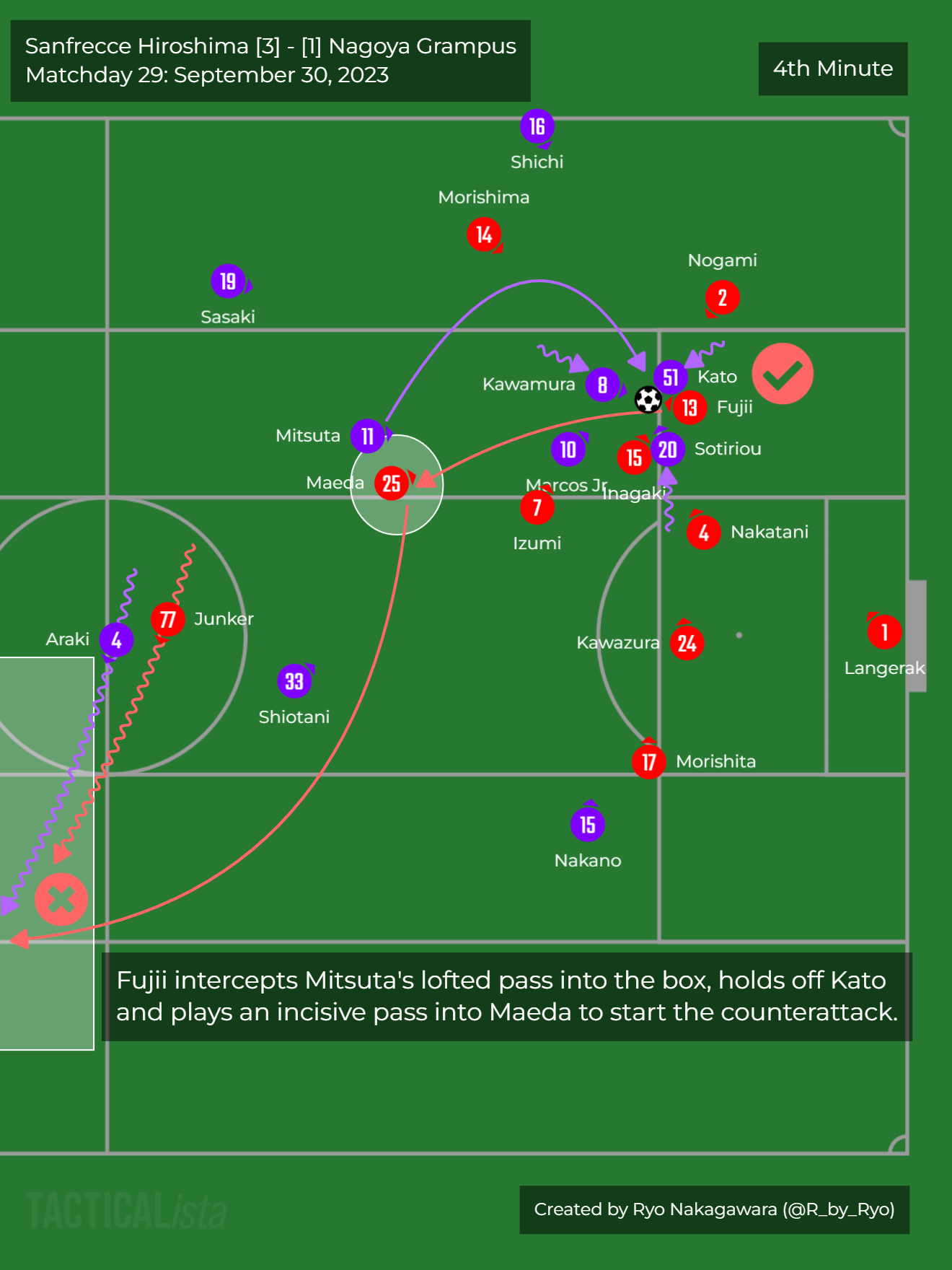



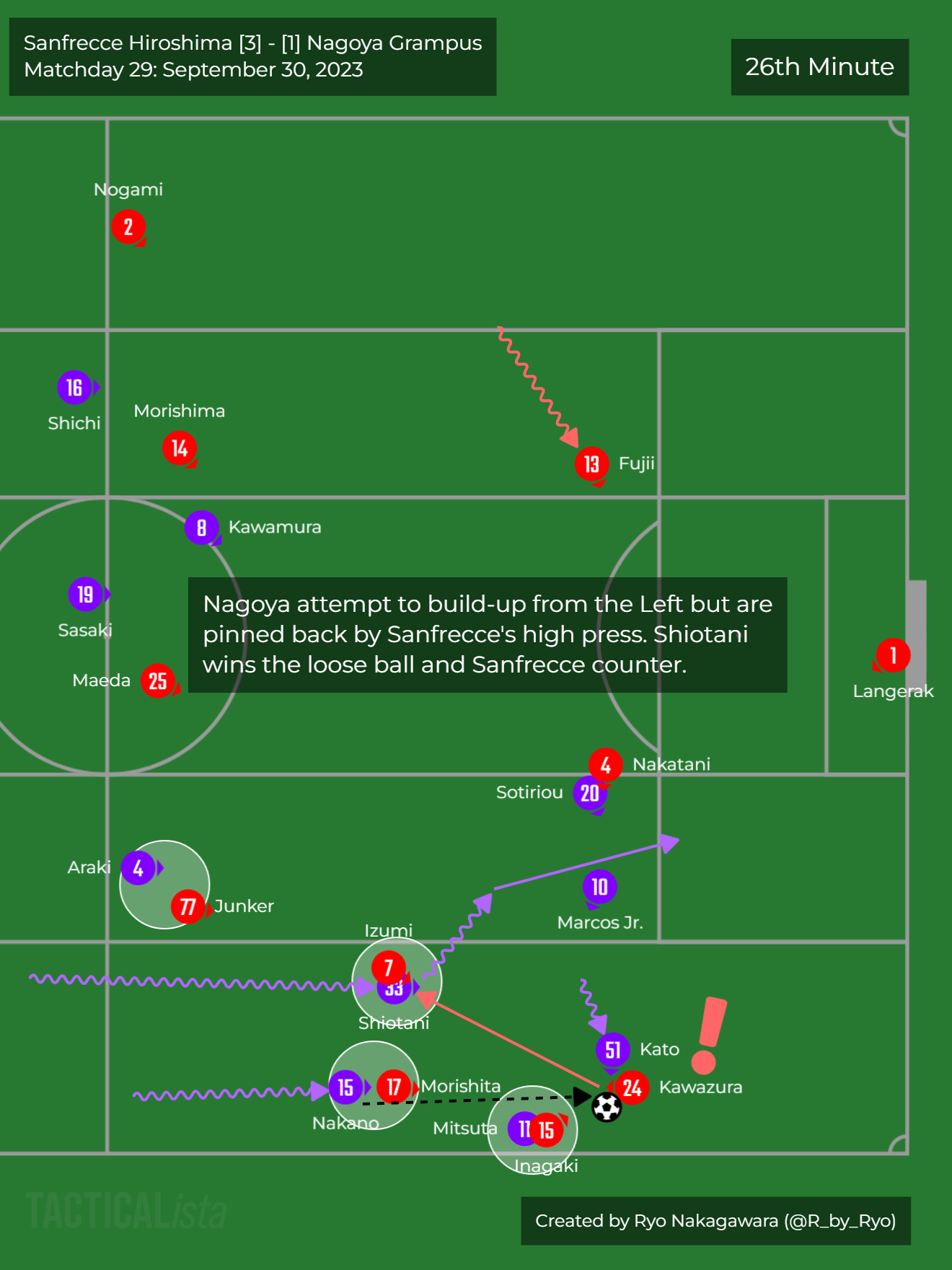






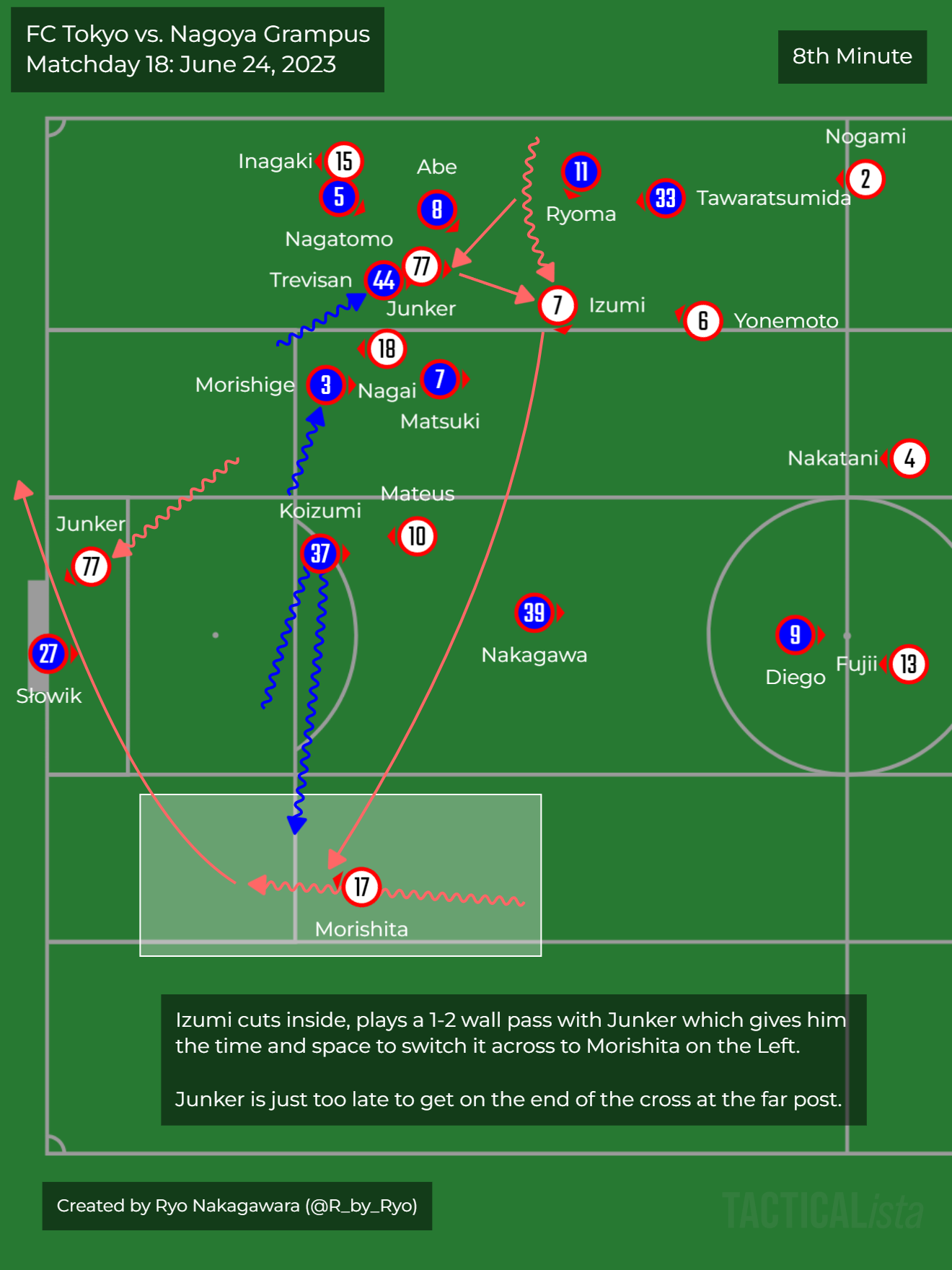


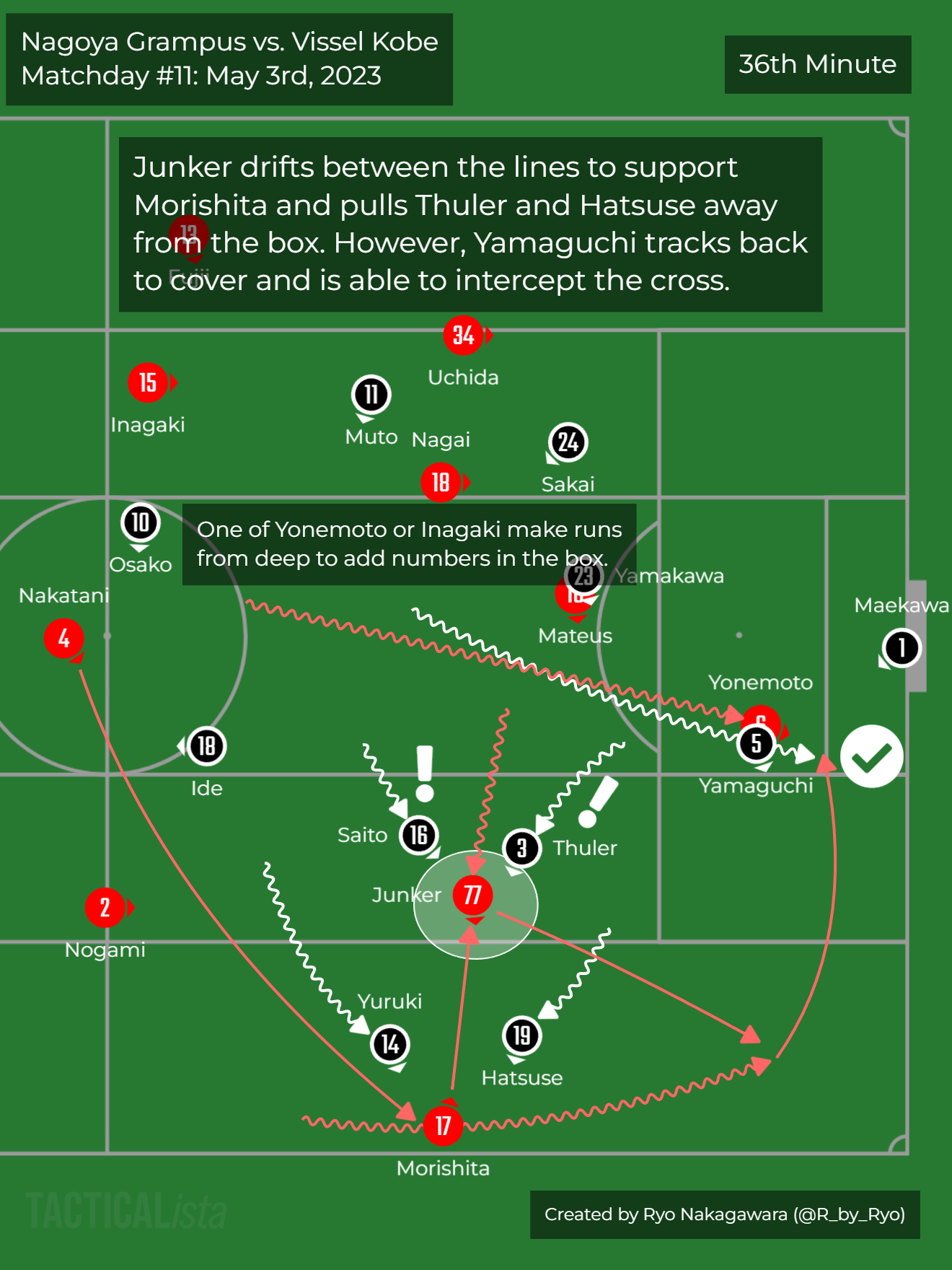


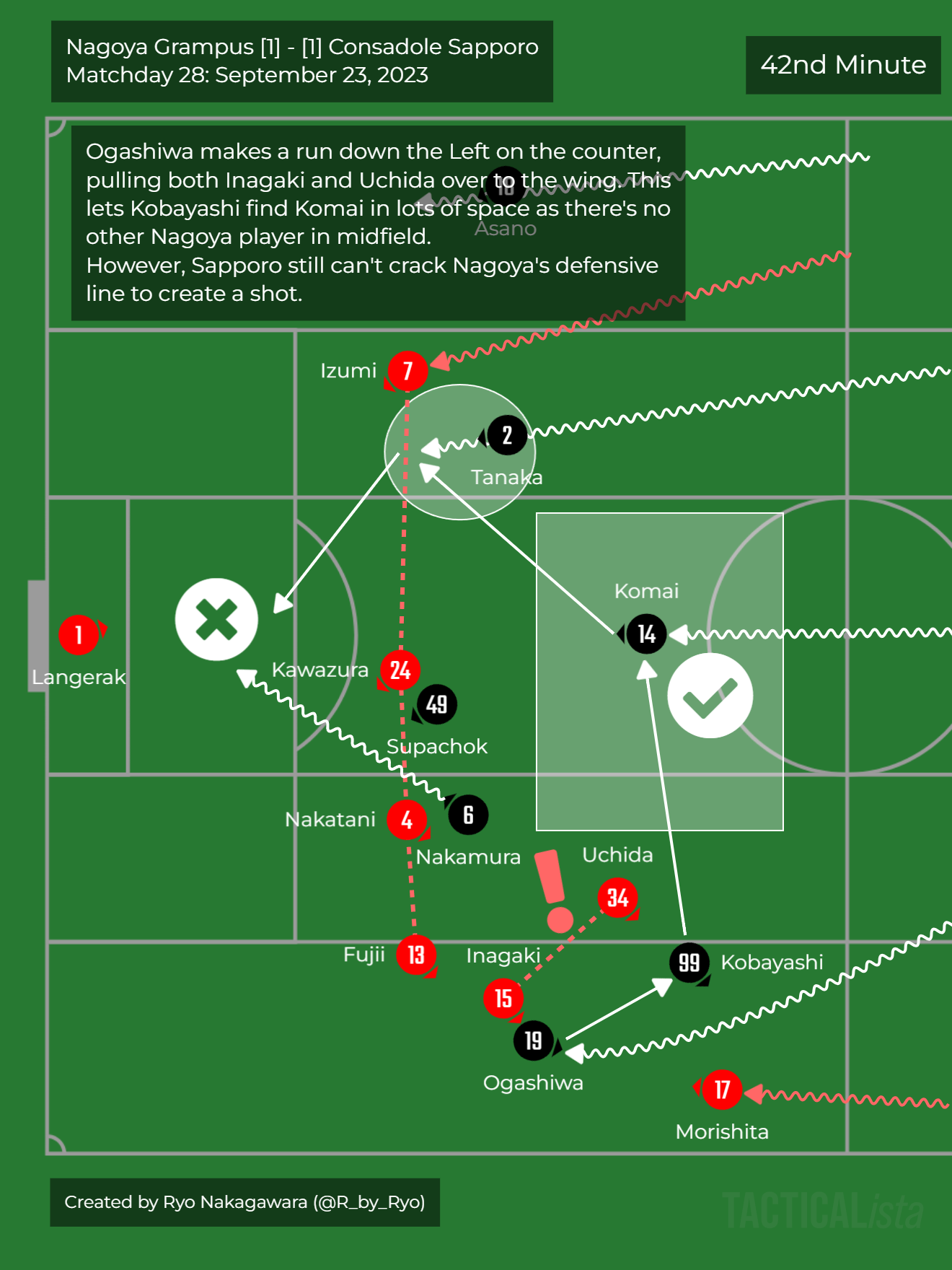



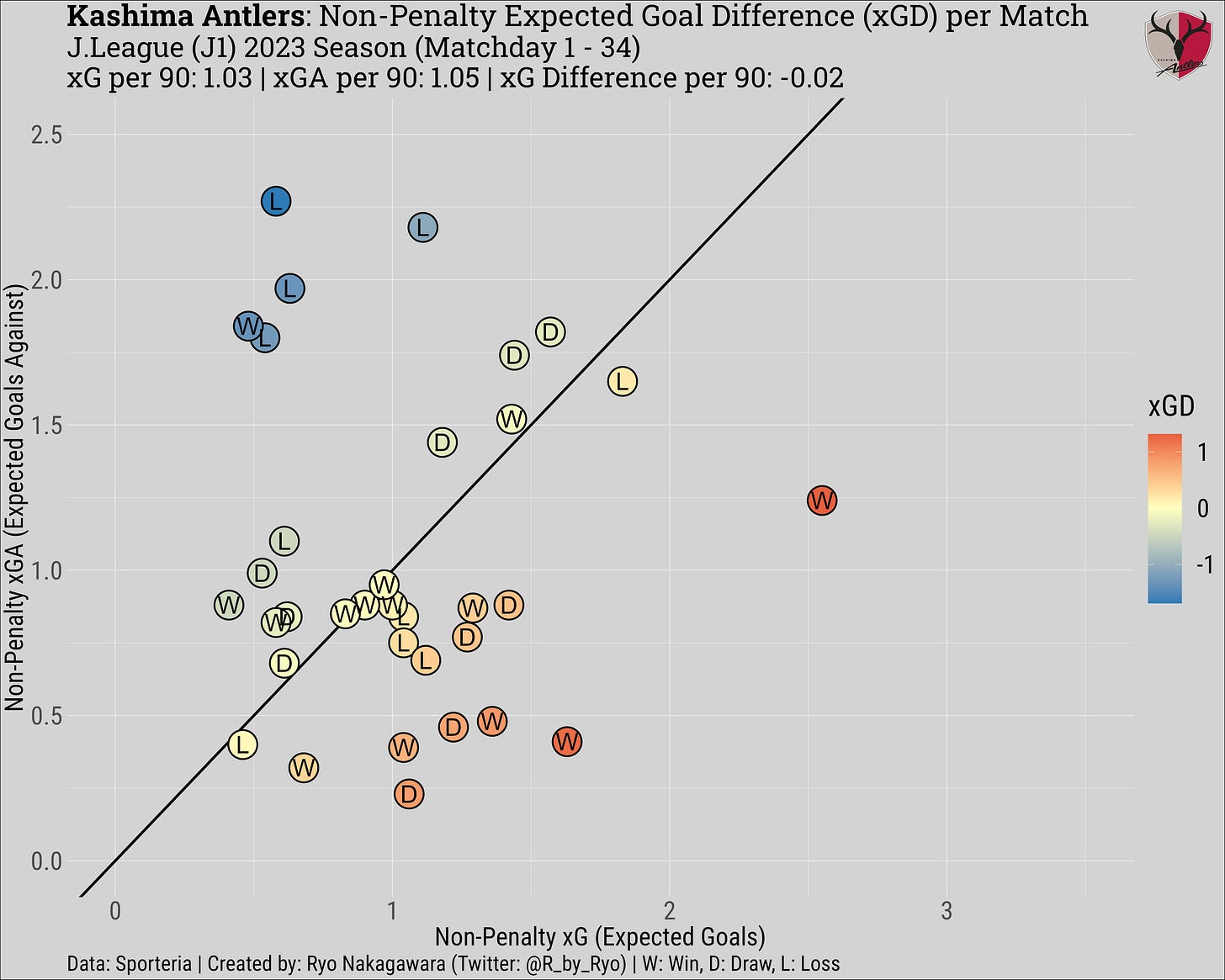


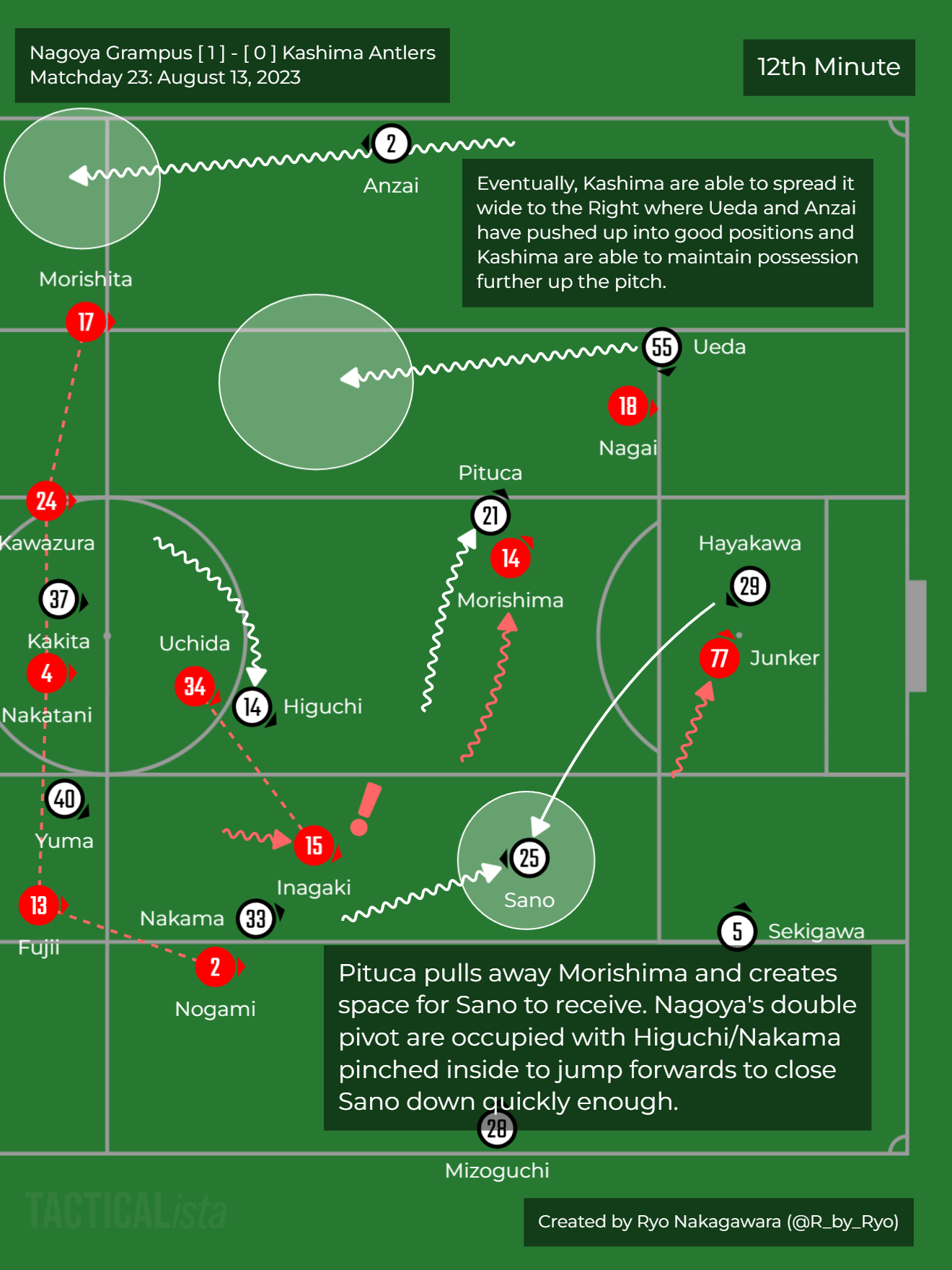













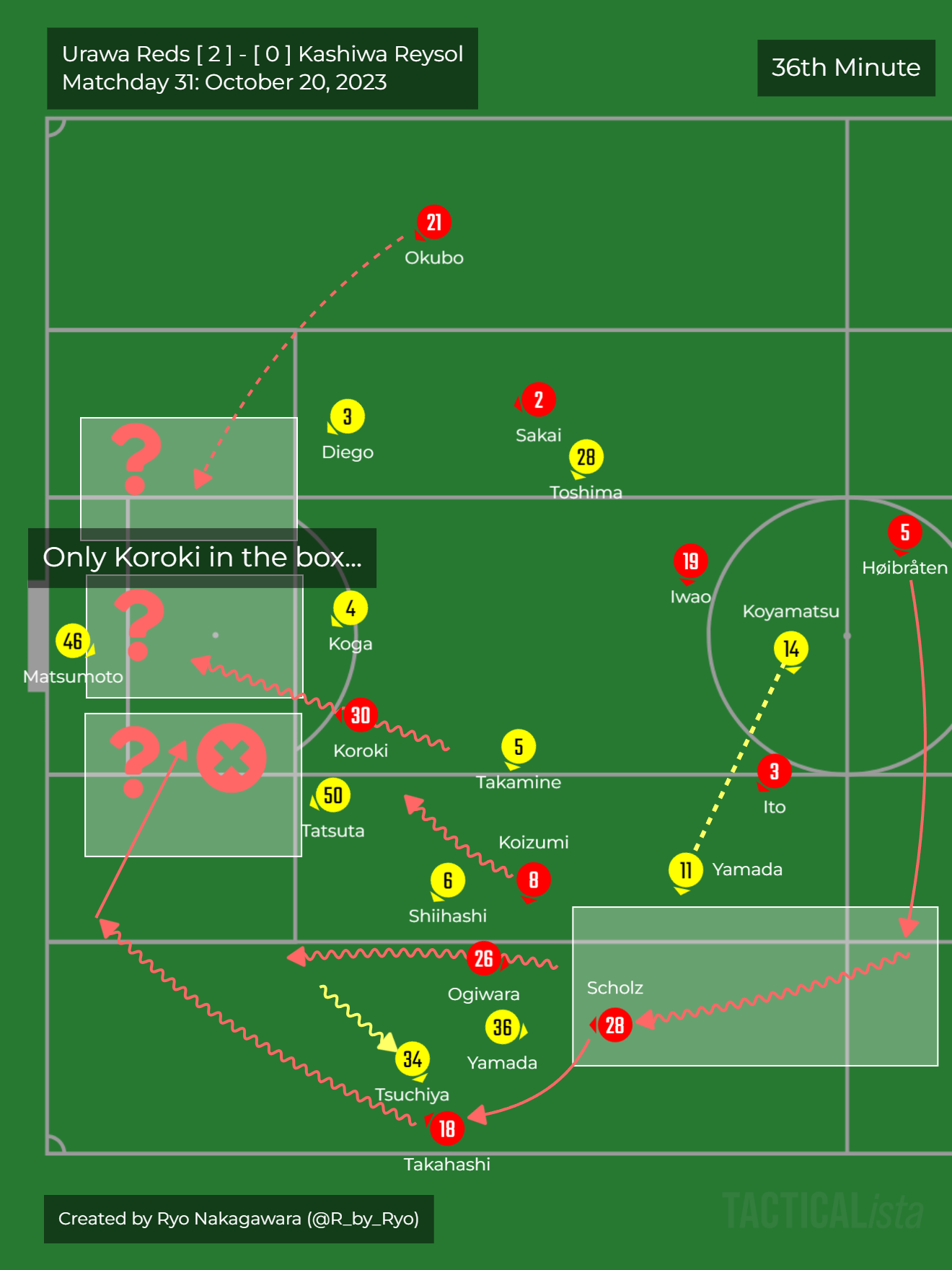











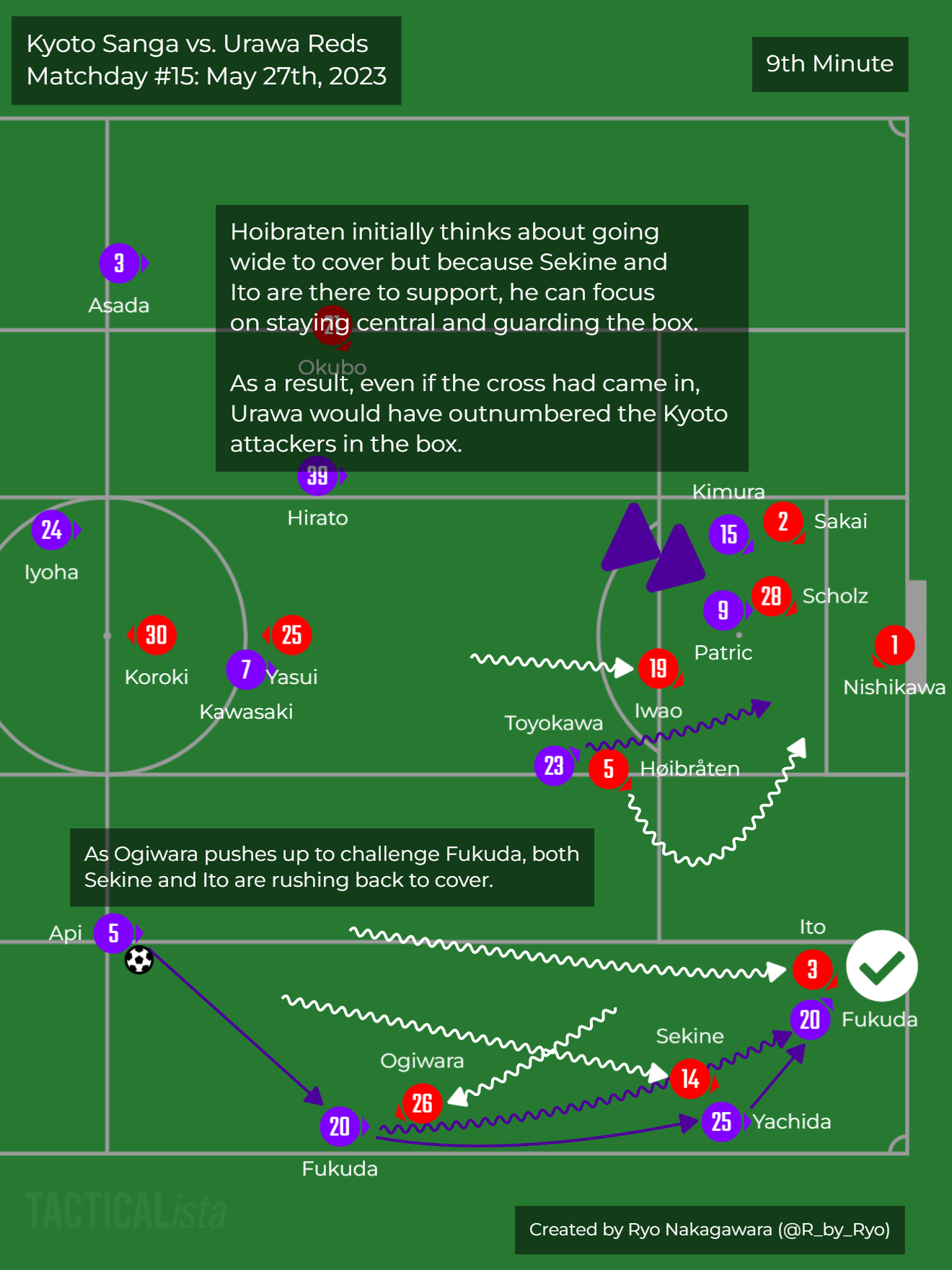









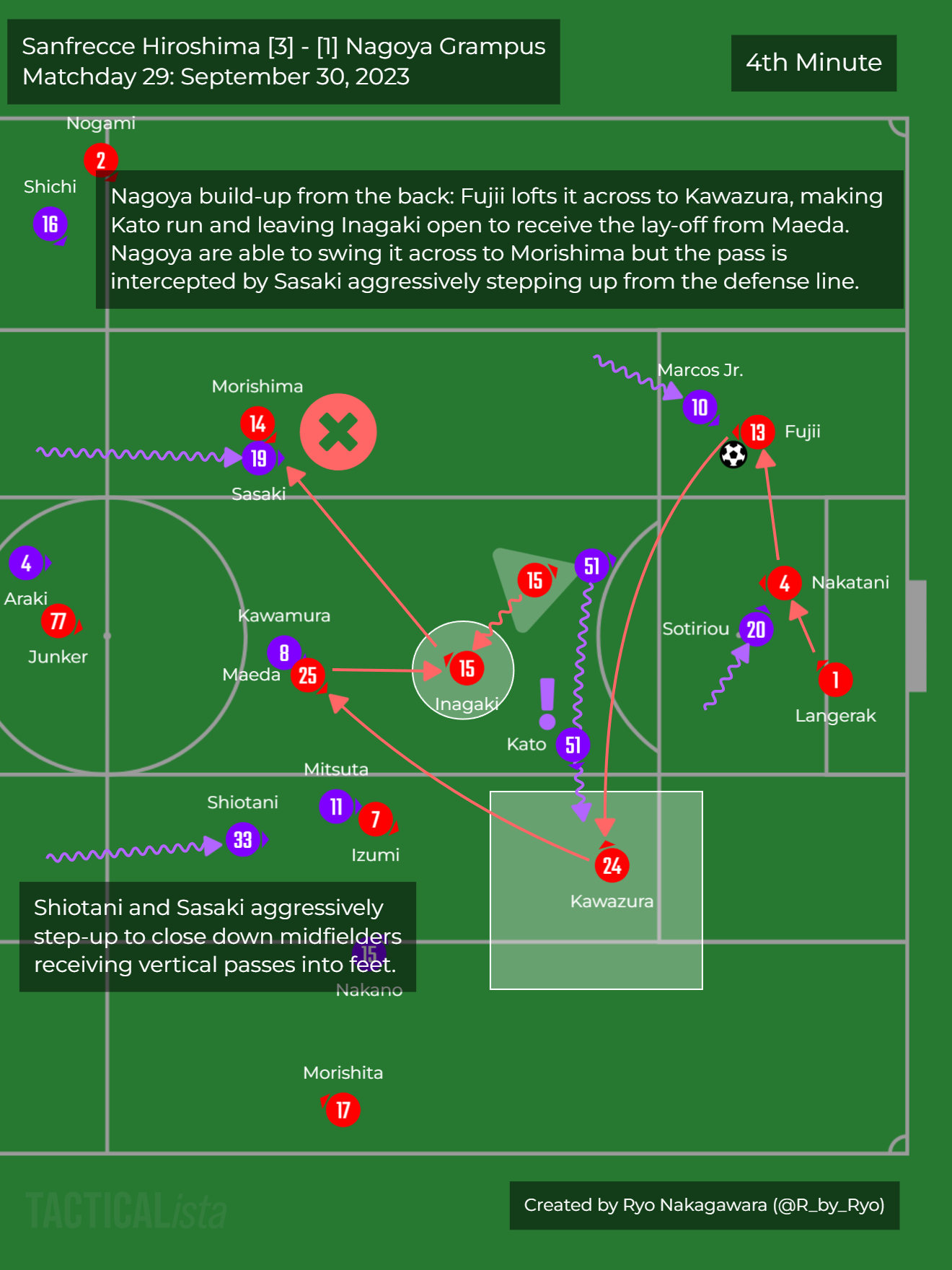









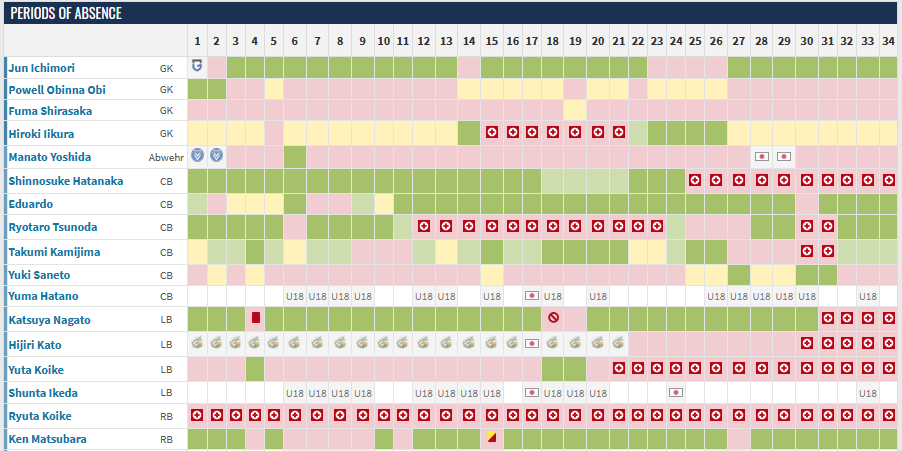




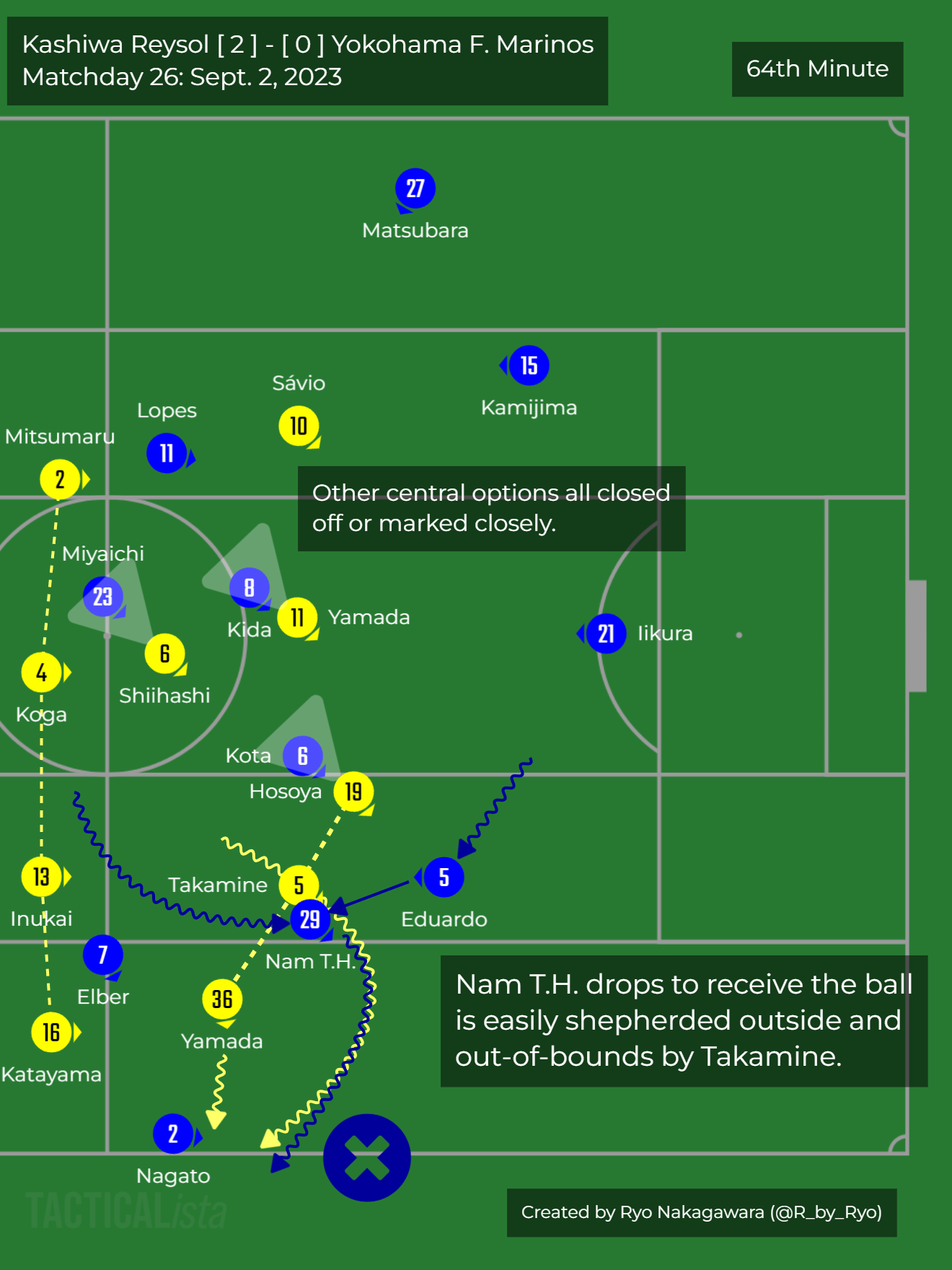


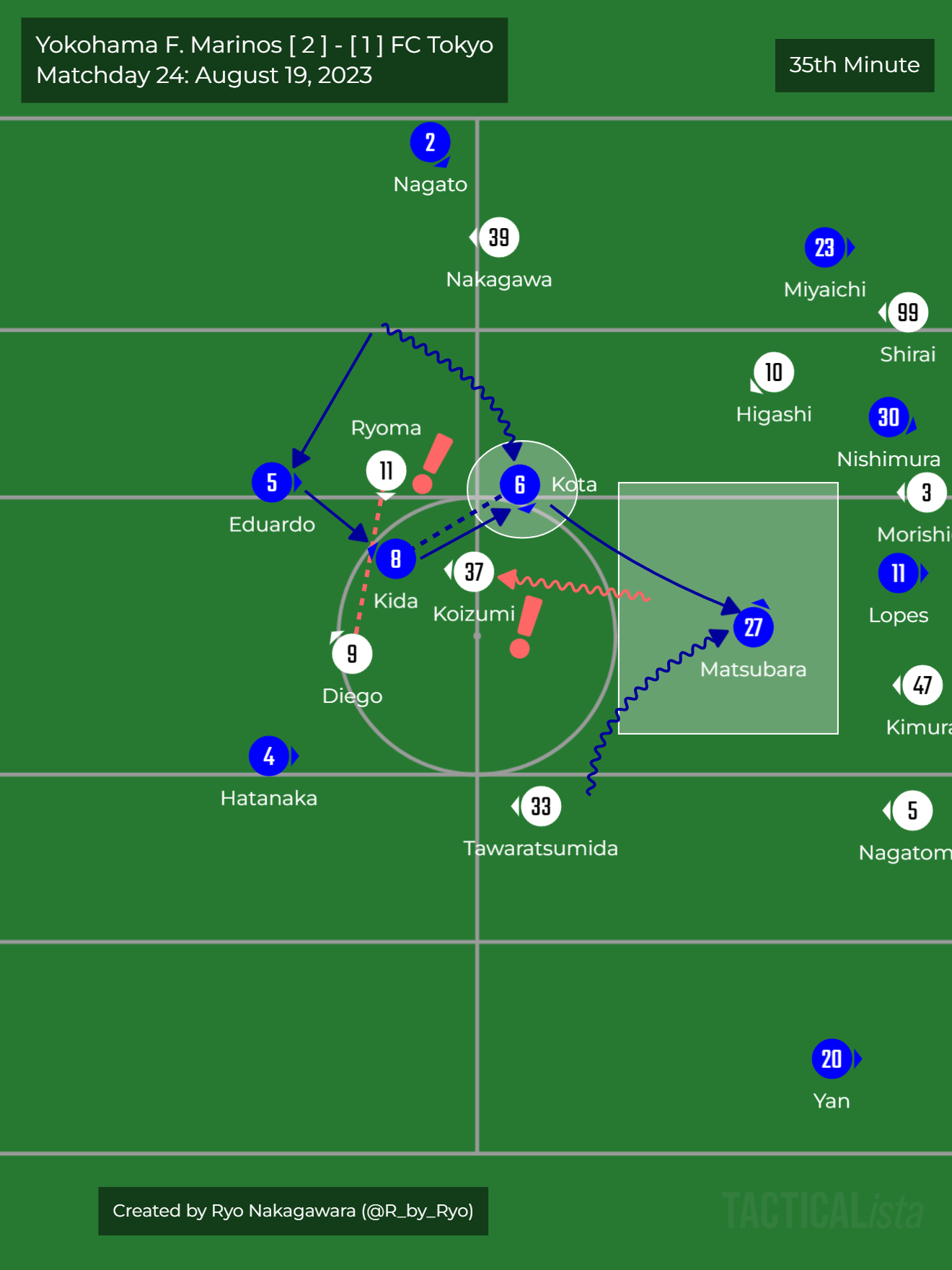






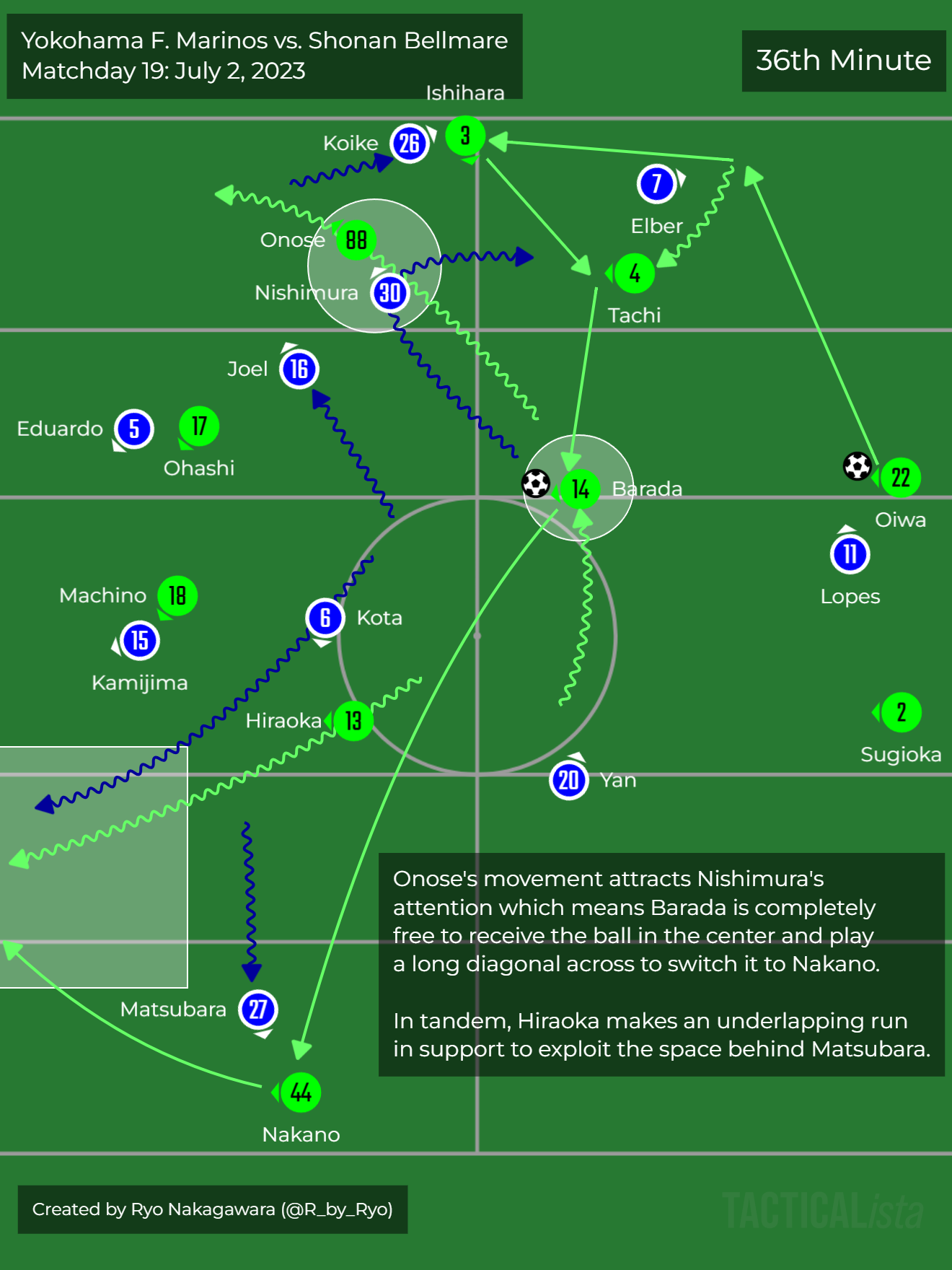
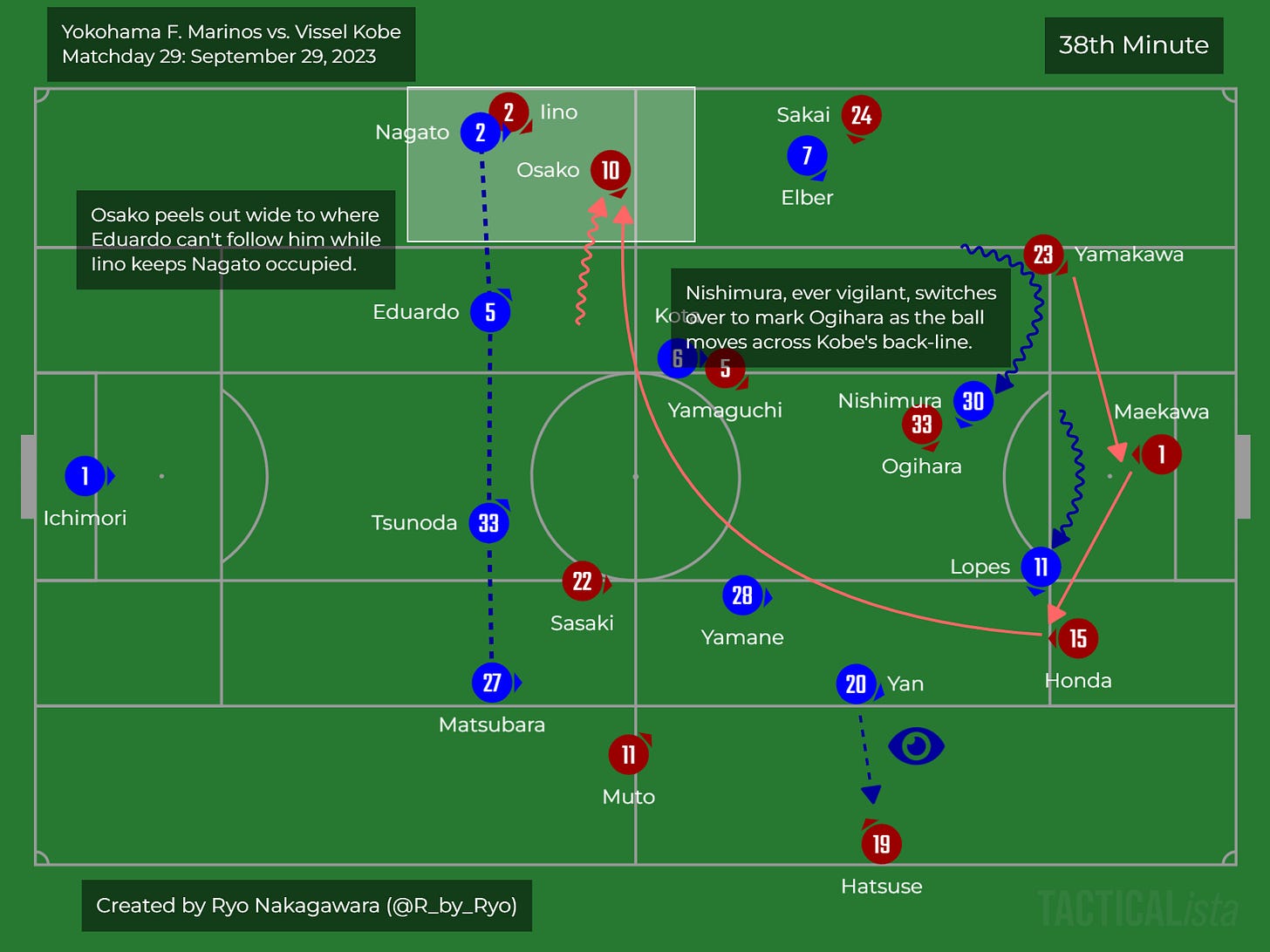
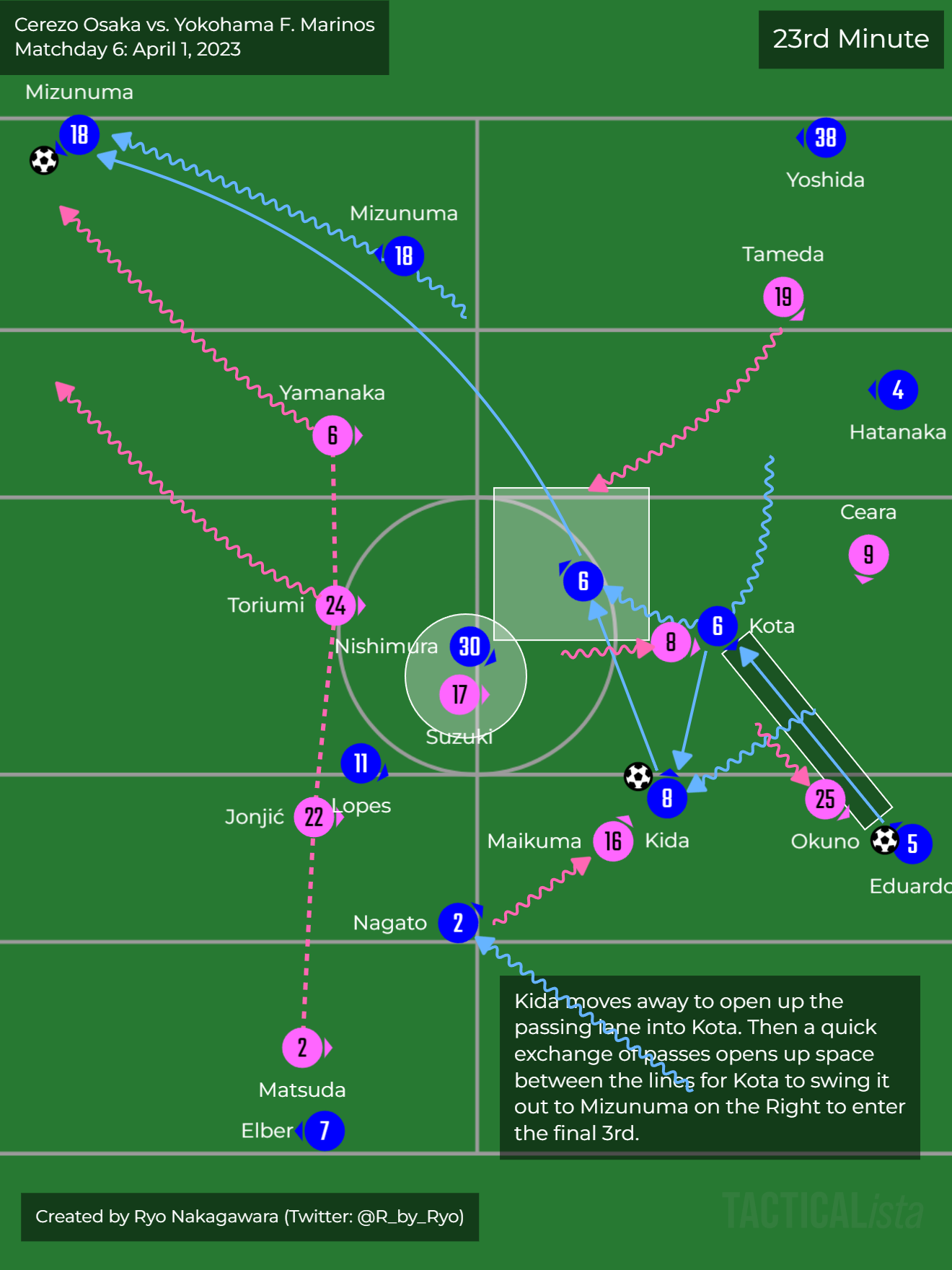


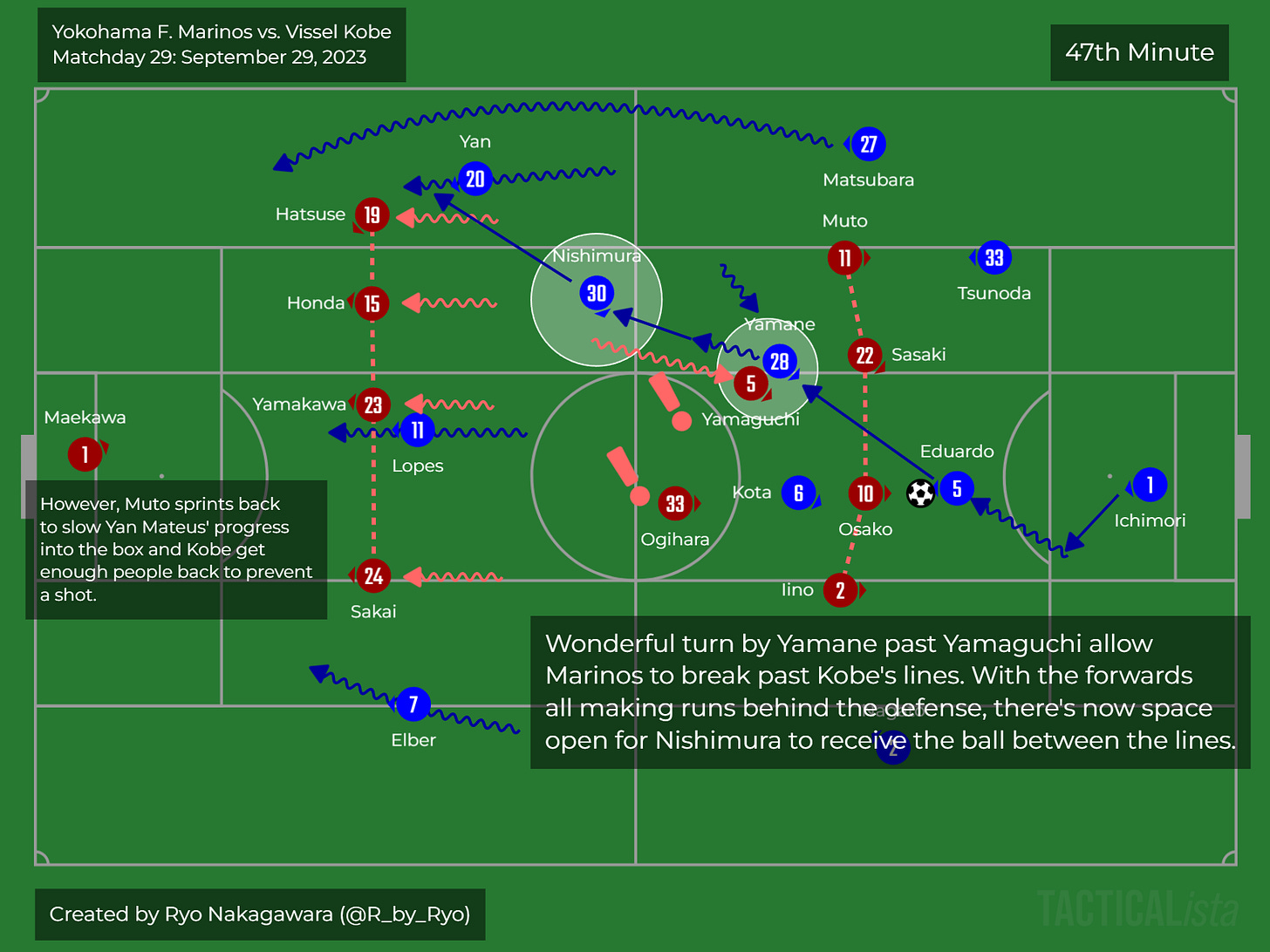










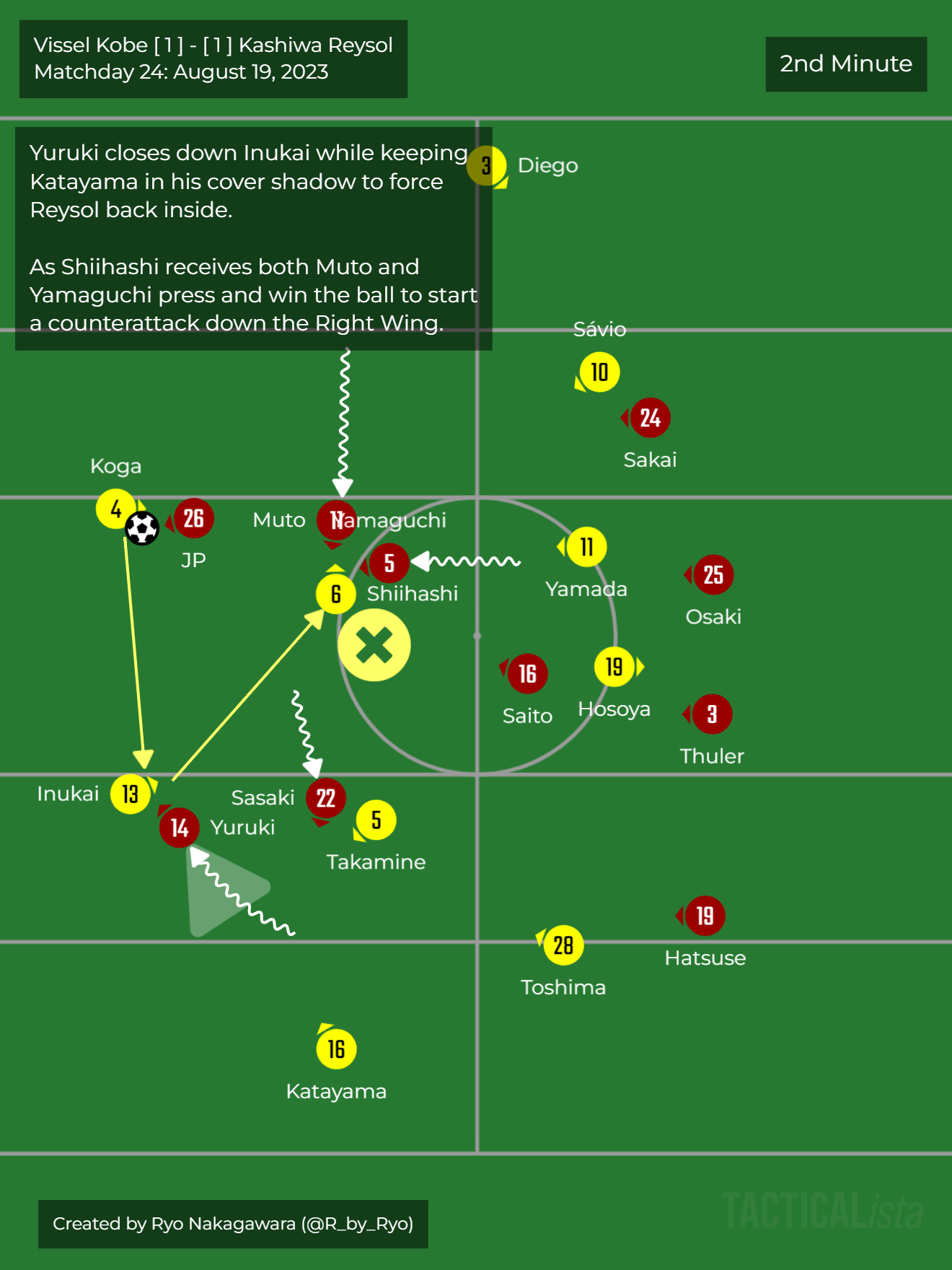





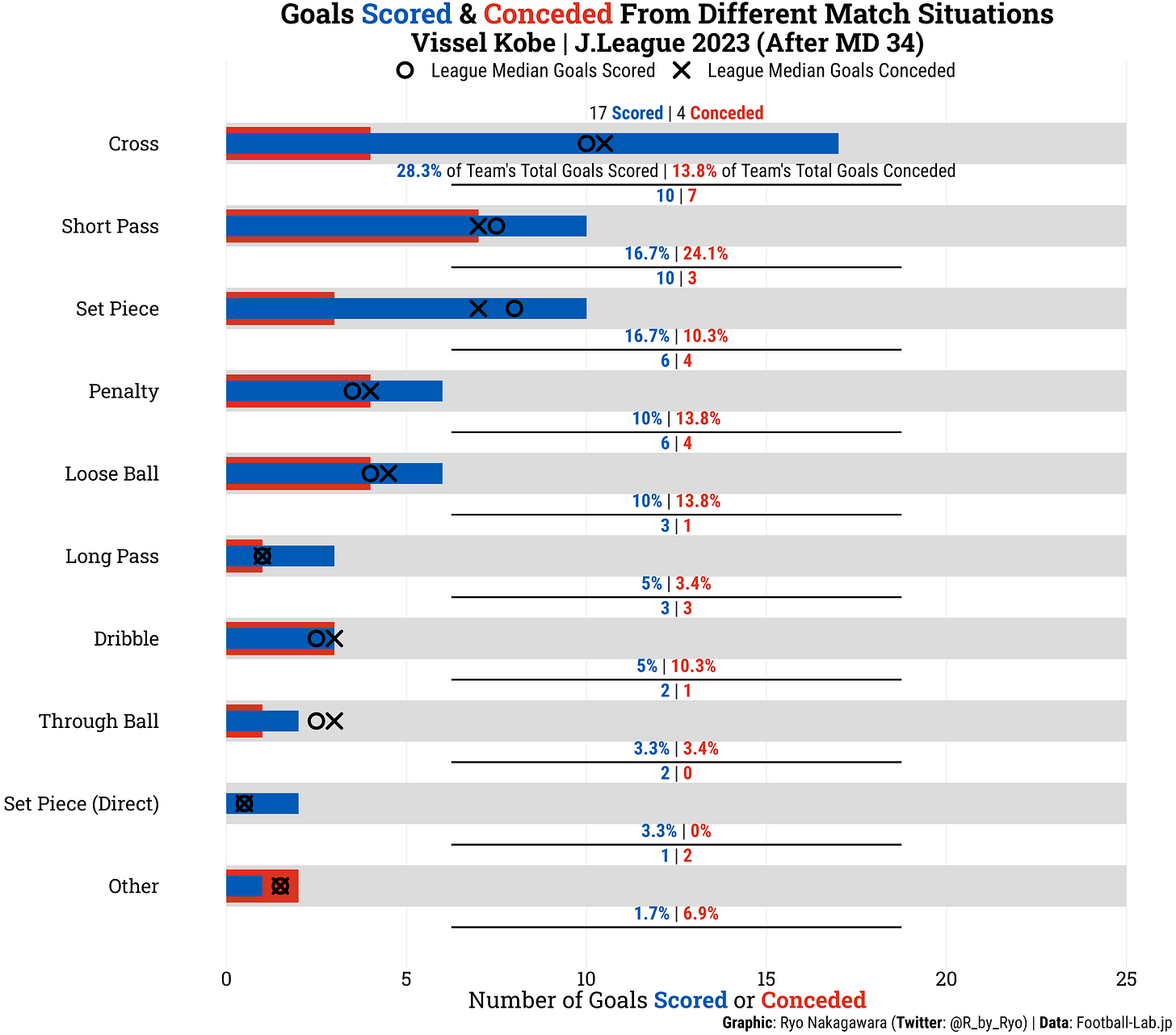


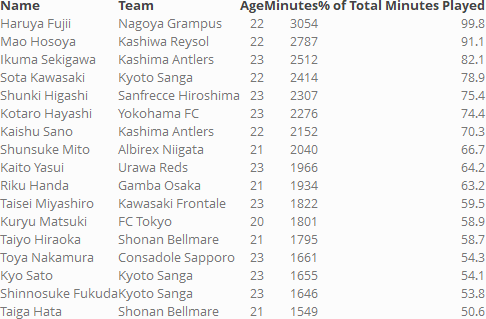



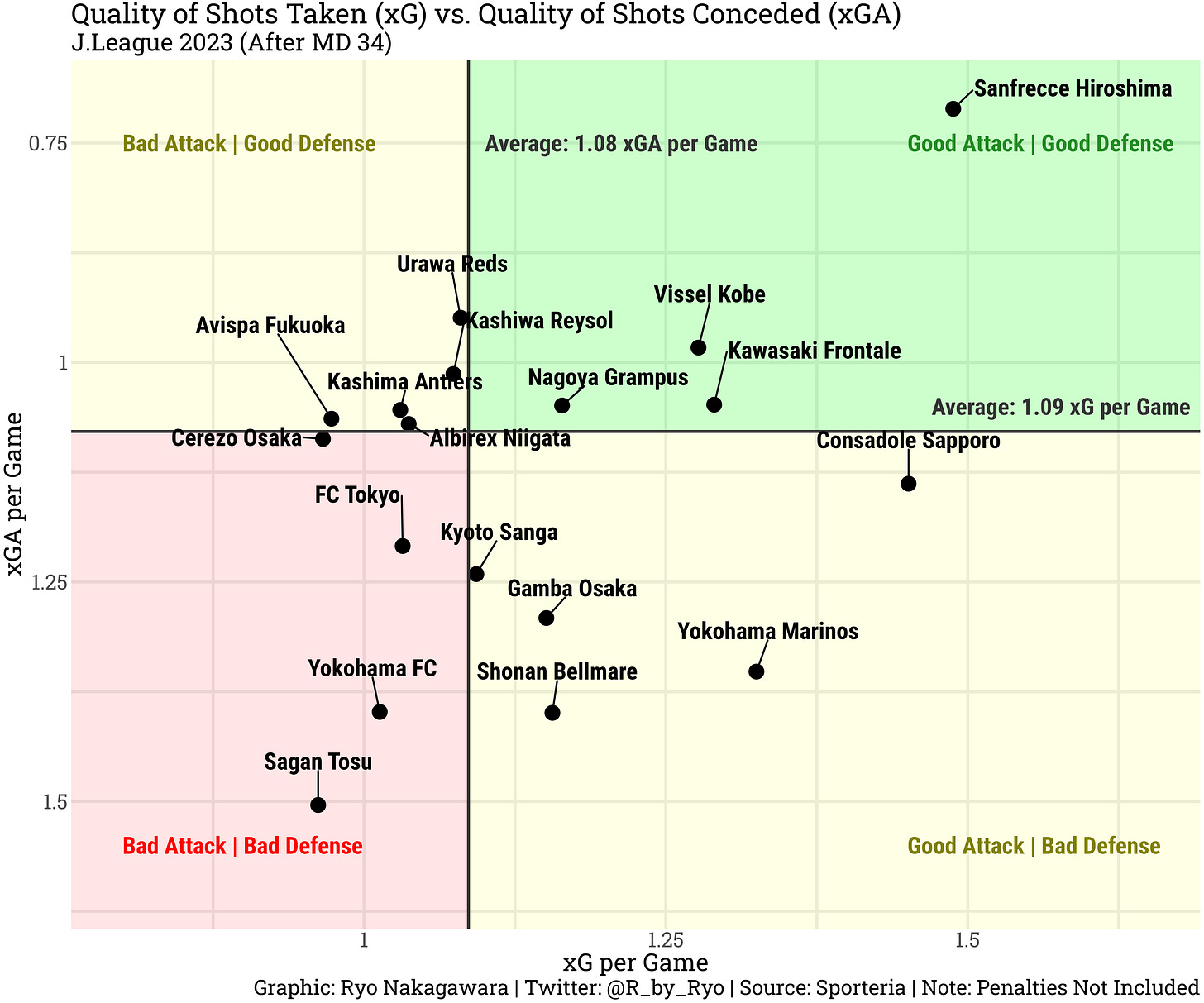
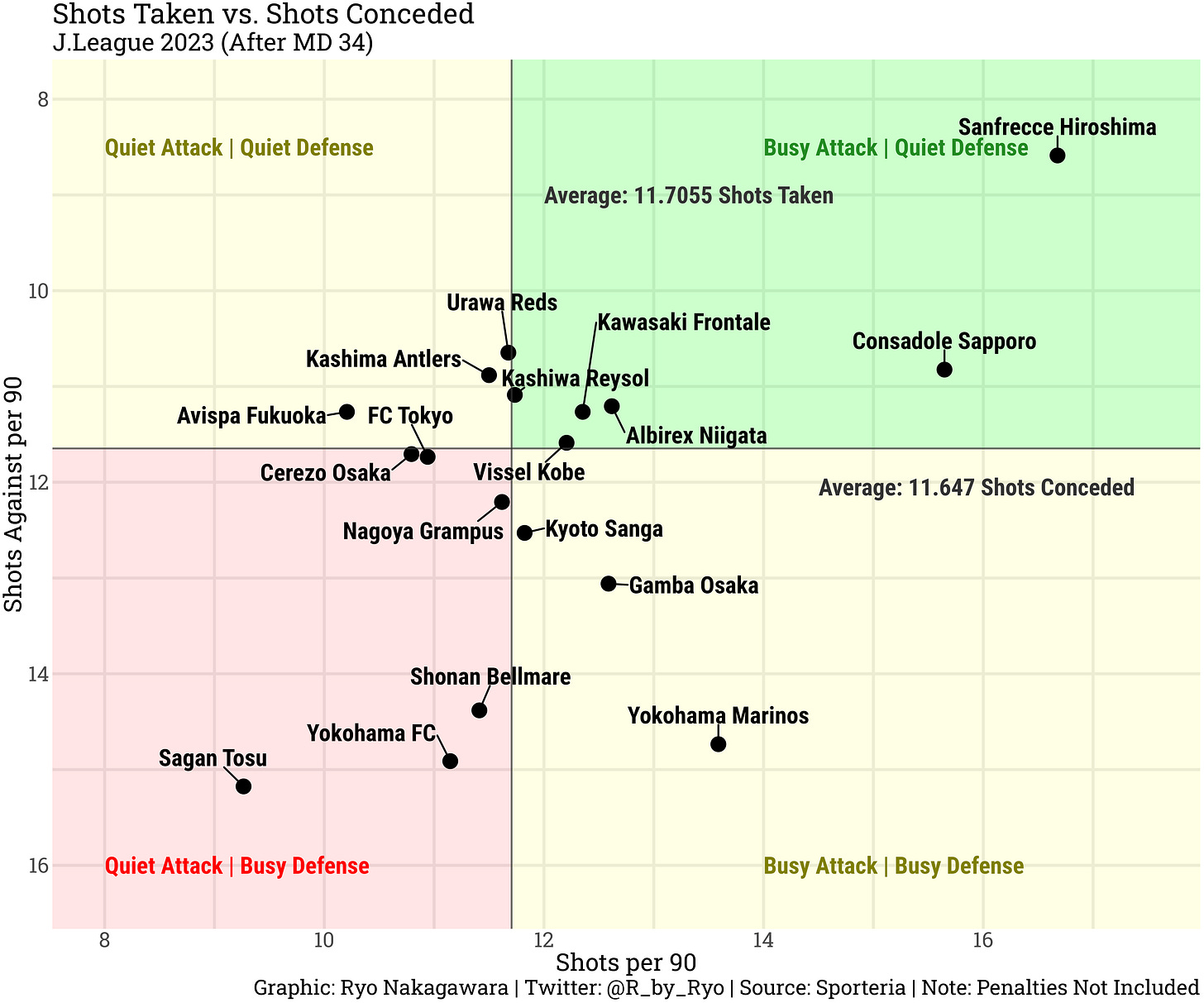



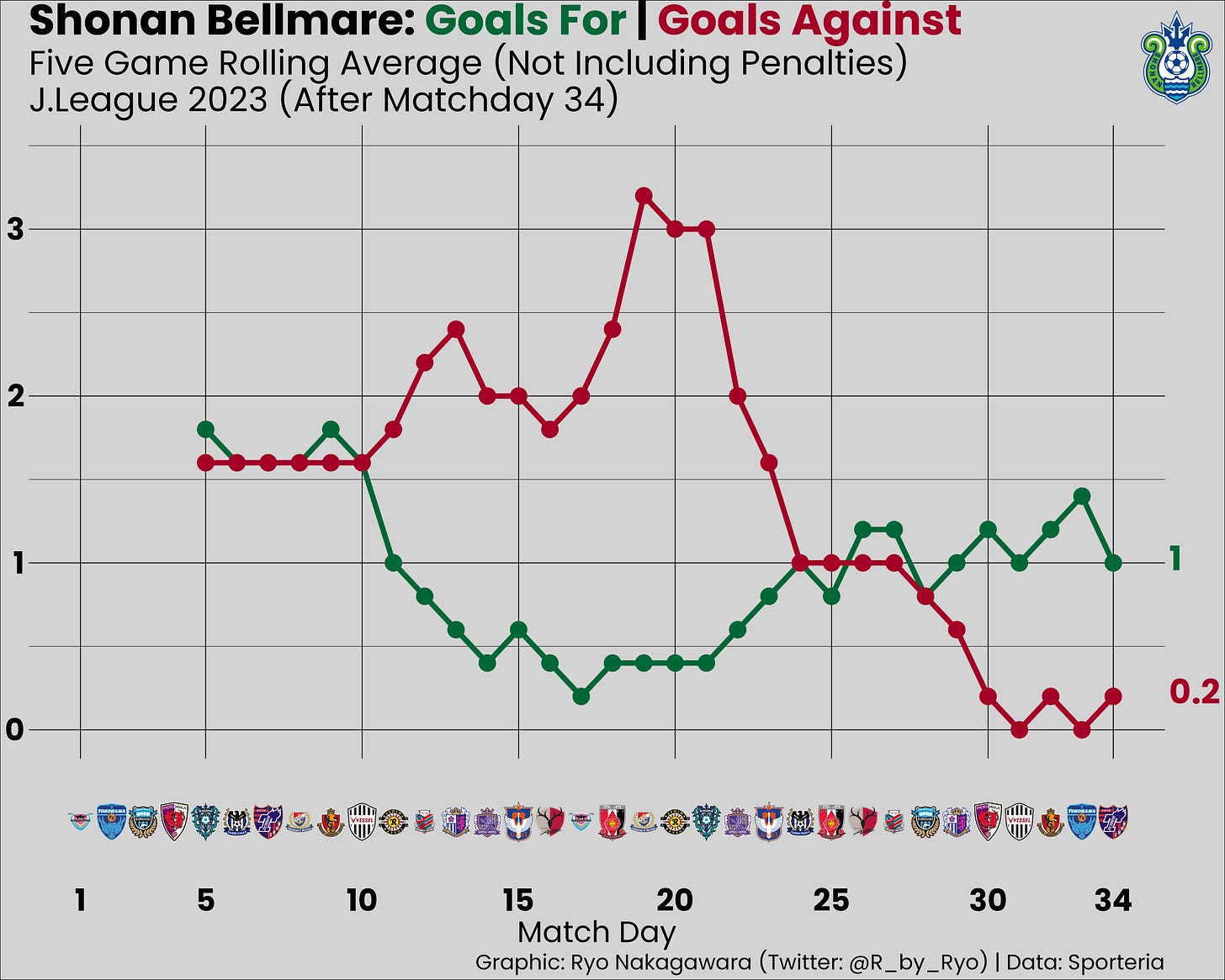


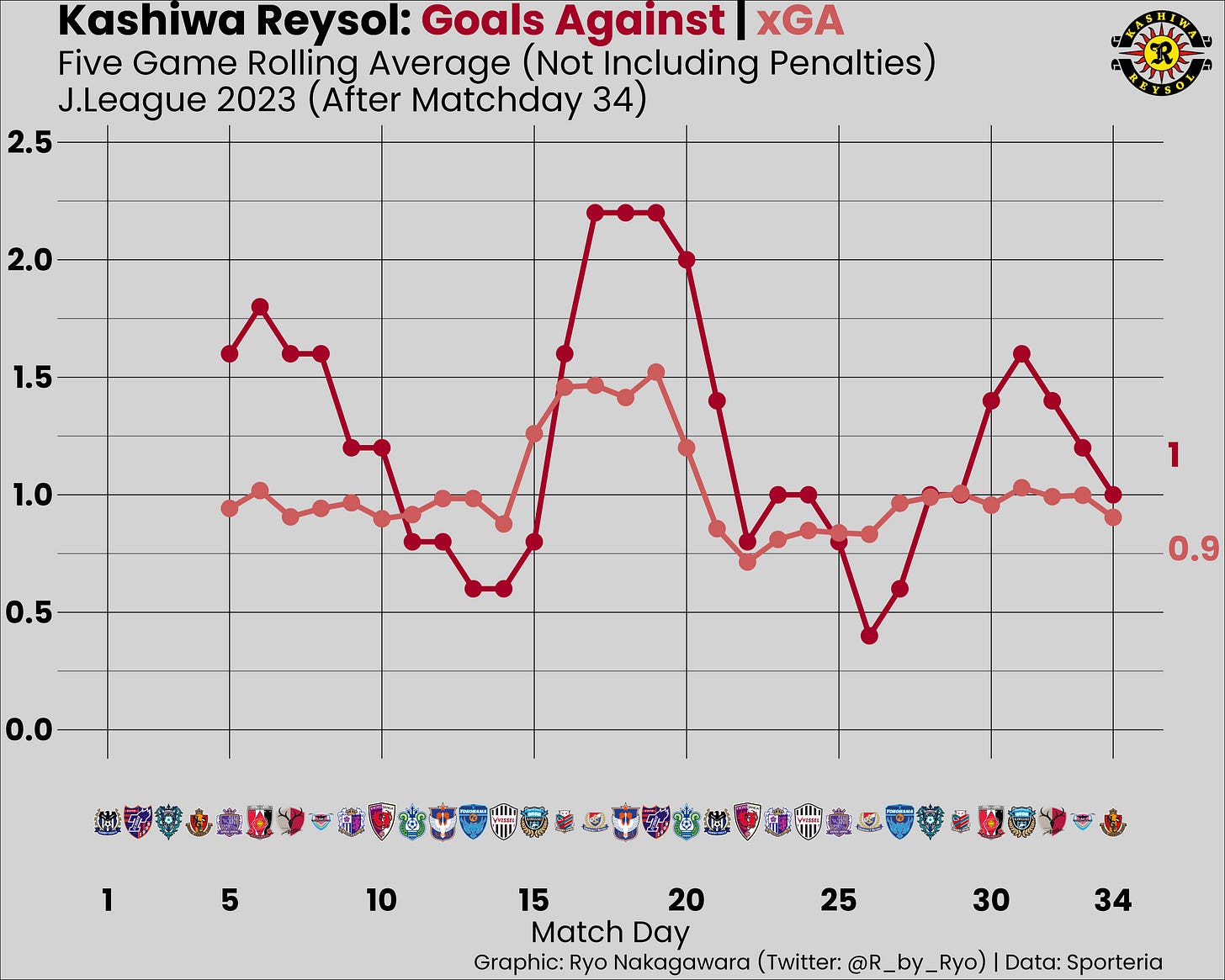
I didn't even realize Mateus went to Saudi! Saw him leave a game with what appeared to be a groin injury and just assumed it was season-ending.
Do you post the R script for those beautiful graphs on GitHub or anywhere else?